Turkish Cuisine
Turkish cuisine is one of the world’s top cuisines, joining the ranks of French, Chinese, Italian, and the like. Like the country’s cultural mosaic, the food of Turkey is very colorful and contains countless different influences and tastes. The cuisine of Turkey has continued to evolve over centuries, deriving influence from its rich history of lands that hosted first the Byzantine, and then the Ottoman Empires.

Specific tastes in different regions of Turkey contribute to the complexity of the country’s cuisine. The availability of different Turkish food in some regions also helped to shape the foods common to that particular area. The Eastern Black Sea region, for example, is not appropriate for wheat production due to heavy rainfall; therefore the residents developed dishes that rely mostly on corn and cornflour. Likewise, the Southeastern Anatolian region is famous for kebabs as a result of its abundant livestock. The Aegean region, known for its olive production, is famous for its delicious olive oil vegetable dishes and herbs; while pastries are the monopoly of Thrace.
Istanbul has always attracted a large number of migrants from other parts of Turkey, relocating to the city in search of work. Because of this, Istanbul has become the cultural heart of Turkey, sharing the most delicious Turkish foods from each region in its unique cuisine.


Table of Contents
Meals and food customs in turkey.
In Turkey, nowadays most families enjoy 3 meals a day.
Weekday breakfasts are basic and quick but weekend breakfasts where the family comes together are large and consist of many different foods.
Lunches in Turkey are usually made of seasonal dishes, soup, salad, etc. Dishes that require time and effort to prepare are not common at this meal. Meat-based dishes, as well as desserts, aren’t served at lunches.
Dinners are usually a more elaborate and richer one because it’s the only time when family members have been working in fields or at another job all day come home together.
In Turkey, there is another unofficial meal called “yatsilik” which is eaten after dinner around 9 or 10 pm. Nuts, dried, and fresh fruits are usually served with black Turkish tea . Some of the most common foods served for yatsilik are seasonal fresh fruits, dried plums, figs, dried fruit pulps (grape, apricot or mulberry), and nuts like pistachios, almonds, roasted chickpeas, roasted pumpkin seeds and sunflower seeds, walnuts, and hazelnuts.

Breakfasts in Turkish cuisine
Breakfast is a significant event for many cultures around the world but in Turkey, it’s more like an elaborate ceremony than just another meal of the day.
Weekday breakfast in Turkey is a light, quick, yet filling meal. It has all the energy you need to get through your day without getting too hungry. The Turkish breakfasts are very diverse and offer many vegetarian/vegan options for those looking for something other than animal protein while also providing good suggestions if someone prefers meat in their diet.
Traditional Turkish breakfasts are large and plentiful, consisting of several small dishes including cheese, olives, tomatoes, butter, jams and spreads, loaves of fresh bread, and, of course, an abundant flow of black tea. The breakfast in rural areas and of the poor is, however, most commonly, soup.
Cheese is one of the most important foods of breakfast in Turkey. The cheese varieties vary depending on the region and may include beyaz peynir (white cheese), bergama tulum from Aegean Coast, deri tulum, otlu peynir from Eastern Turkey, comlek peyniri from central Anatolia and tel peynir and abaza peyniri from Black sea coast. Vegetables and potatoes are also fried up using olive oil , hazelnut oil, or sunflower oil.

Eggs are a staple in most Turkish breakfasts, they can be boiled, fried, or made into menemen with peppers and tomatoes.
The traditional Turkish breakfast is a family-oriented affair , with many different dishes that are all served at the same time. The meal can last for hours with family and friendly conversations.
Turkish people have started to get their family-oriented weekend breakfasts at restaurants in recent years, but the truth is there isn’t much difference between a traditional breakfast made and served at home or one you can find at a breakfast saloon or a restaurant. If you would like to experience a traditional Turkish breakfast but have no invitation for a homemade one, read our blog post about the best breakfast restaurants in Istanbul serving traditional breakfast.

Dinners in Turkish cuisine
A typical Turkish homemade dinner starts with a warm soup, followed by a dish made of vegetables (zucchini, eggplant, cauliflower, green beans, potatoes, spinach to name a few), meat or legumes ( beans , chickpeas, lentils) boiled in a pot and typically served with starchy foods like bread, Turkish rice pilaf , pasta or bulgur. As a refreshment, green salads or cacik is served alongside the main meal.
Homemade food in Turkish cuisine
The Turkish people are more likely to eat at home rather than eating out, which is a relatively new concept introduced by modern life. In an effort to save time, many couples have started cooking at home less and eating out more.
In Turkey, it used to be that women were at home while men worked in order to prepare food for their families. But with more dual-income households and a higher standard of living in urban areas, there have been fewer opportunities for family meals together around a table or over an open fire – so it’s common now for Turkish people to eat out or take away more often instead of cooking homemade dishes like they would’ve before the 1980s when this tradition started fading away as well.

Key ingredients of Turkish cuisine
Vegetables: okra, pea, green peppers, tomato, mallow, artichoke, carrot, cucumber, chicory, spinach, zucchini, cauliflower, celery, asparagus, cabbage, mushrooms, parsley, lettuce, potatoes, beets, eggplant, leek, arugula, garlic, purslane, onion, radish
Legumes: broad beans, beans, chickpeas, lentils
Meats: lamb, beef, chicken, fish
Spices: rosemary, red pepper, nigella seeds, thyme, cumin, mint, cinnamon, coriander, turmeric, sumac, black pepper, clove, poppy seeds, saffron, sesame seeds
Nuts: pistachios, chestnuts, almonds, hazelnuts, walnuts
Grains: rice, bulgur
Oils: Sunflower oil, olive oil , hazelnut oil

Fruits in Turkish cuisine
The vibrant and colorful landscape of Turkey means that fruits are numerous, plentiful, and cheap. Either fresh or dried, oranges, mandarins, plums, apricots, pomegranates, pears, apples, grapes, and figs are the most popular fruits used in Turkish cuisine. Fresh fruits are usually eaten after dinner as a dessert but there are also some Turkish dishes that make use of seasonal fruits.
The sweet-salty flavor of these dishes, which are usually flavored with sour fruits such as plum and quince, has its roots going back to the Ottoman era. Here are some of the best-known fruity Turkish dishes:
Ayva Dolması: Stuffed quince dish. Quince is usually stuffed with the same filling as dolma dish.
Çağla Aşı: Unripe fresh almond dish. A celebration dish that is made with lamb, fresh almond fruit ( not the seeds), yogurt, and garlic.
Yeni Dünya Kebabı: Loquat fruits stuffed with lamb meat.

Bread in Turkish cuisine
Bread is another indispensable part of every Turkish meal. This has been true for thousands of years, and it remains the most important component to every meal: breakfast or dinner – without bread your Turkish meal will lack that something special. It is eaten, whether it is particularly suited to the meal, or not.
Turkey has the highest bread consumption per person in the world. Bread consumption a year is 199.6 kg (440 lb) per person. Turkish people eat more than three times their own body weight in bread annually.

Some of the most common breads in Turkey are:
Bazlama Ekmek: Bazlama is a type of leavened bread with a circular and regular shape.
Yufka Ekmek: The phyllo bread, which is eaten in Anatolia for more than a thousand years, is generally made from wheat flour, water, and salt. If dried, this type of round bread can last a long time (6-12 months). Fresh yufka is often used as the main ingredient in products such as pancakes and börek.
Misir Ekmegi: Corn bread, which is high in nutrients, is one of the types of bread that is found in the Eastern Black Sea Region.
Pide: Pide bread or pita bread is a type of flat bread that is common in Turkish and Middle Eastern cuisines.
Lavas : Lavas bread is made of water, flour, and salt. It is a thicker bread than yufka but thinner than pide. It is used to make wraps.
Somun Ekmek: Loaf bread, which is one of the most consumed types of bread in Anatolian cuisine, can be found almost anywhere. It’s been a staple for centuries and has the appearance of fluffy and golden yellow color.

Traditional Turkish dishes and food
Turkish cuisine has a wide variety of foods, including cereals, pastries, vegetables, and self-growing herbs mixed with meat. There are also many soups and other traditional Turkish foods that incorporate butter, sunflower oil, and olive oil as an ingredient. Turkish cuisine has also its own unique types of healthy food, such as grape molasses, yogurt, bulgur, etc.

Soups in Turkish cuisine
Some of the most popular soups in Turkish cuisine:
Cold Ayranaşı Soup (Soğuk Ayranaşı Çorbası)
Tripe Soup (İşkembe Çorbası)
Tomato Soup (Domates Çorbası)
Chicken and Vermicelli Soup (Şehriyeli Tavuklu Çorbası)
Tarhana Soup (Tarhana Çorbası)
Lentil Soup (Mercimek Çorbası)
Cheek and Shank Soup (Kellepaca Çorbası)

Rice, grain, and pilafs in Turkish cuisine
Rice is used extensively in Turkish cuisine. It is featured in many of the stuffed meat and vegetable dishes as well as being served as pilaf, and Turkish people have very high standards for its preparation. A great-tasting pilav is proof of a Turkish housewife’s good cooking skills.
Pilafs in Turkey are usually cooked plain only with butter but there are also those exotic rice dishes flavored with spice, nuts, and fruits—others made with meat, fish, and vegetables, are known as sultan pilavı. Pilafs are usually served as an accompaniment to the main course of meat or fish, but some more substantial pilafs, like yufkalı pilav and safranlı midyeli pilav can be served with a salad to make a full meal, iç pilavı, with currants, pine nuts, and calves liver, is served all over Turkey, especially on special occasions. Acılı Bulgur Pilavı is actually made with bulgur, or cracked wheat, which has a nutty flavor. Rice with chickpeas is a popular and nutritious type of rice dish in Turkey. In the summer, some pilafs are served cold with plain yogurt.
The preparation of pilaf is as much an art today in Turkey as it was in the sultan’s kitchen in Ottoman times.

Vegetable dishes in Turkish Cuisine
Turkey is no stranger to vegetable-based and vegetarian cuisine. The country’s cooking culture often uses vegetables and wild-grown greens, cooked as vegetarian dishes or with meat for the protein hit that can stretch precious supplies of food items like beans and rice.
Aegean and Mediterranean regions are well known for their warm and sunny climate which allows growing vegetables year-round. Some of the most common vegetables grown and eaten in Turkey are zucchinis, eggplants, cauliflower, bell pepper, green beans, spinach, artichokes, carrots, and celery.
Fresh vegetables are cooked in many ways, but they mostly fall into one of these categories: meatless vegetable dishes (including vegetables with olive oil), boiled, fried, and roasted veggies. Fried vegetables are usually served with garlic yogurt sauce.

A typical vegetable dish is prepared with a base of olive oil, chopped onions, pepper paste or tomato paste (concentrated tomato sauce), and fresh tomatoes. Usually, the vegetables and hot water is added to this base and prepared as a pot dish. Minced meat can be added to most vegetable dishes except the ones cooked with olive oil. Olive oil dishes are also eaten cold and having meat in them is not a great idea.
Further reading: Olive oil and olive oil dishes in Turkish cuisine .
Pickles are another popular way for Turkish people to enjoy their vegetables. Pickles are made from all kinds of vegetables, including carrots and cucumbers.
Some of the most popular vegetable dishes in Turkey are:
Karniyarik: Large eggplant stuffed with ground beef, chopped-up onions, garlic, tomatoes, and green peppers and cooked in oven.
Kizartma : Deep-fried vegetables (usually eggplant, zucchini, potatoes, green peppers) served with yogurt sauce.
Mücver: Graded vegetable (the most popular one is zucchini) mixed with egg and flour and deep-fried.
Lahana sarmasi: Rolled white cabbage, stuffing is usually with onions and rice and may have minced beef if preferred with meat.
Kapuska: Thin sliced white cabbage cooked with onions and tomato sauce. Can be cooked with minced beef or lamb.
Ispanak yemegi: Onions, spinach, and rice cooked with tomato sauce (tomato paste). Usually eaten with garlic yogurt.
Türlü: A vegetable dish made with eggplant, zucchini, potatoes, tomatoes, and onion.
Zeytinyağlı biber dolması: Stuffed bell peppers.
Kabak oturtma: Zucchini roasted with beef or lamb mince.

Meat dishes in Turkish cuisine
From the delicious chicken dishes to beef and lamb, Turkish cuisine is definitely a carnivore’s paradise. The meat cooking methods are also varied – from roasted meats cooked in spiced sauces or stews with vegetables to skewered kebabs grilled over slow-burning coals. The kebabs and meatballs are two other very popular ways of preparing meats in Turkey.
Almost every city in Turkey has its own style of kofte and kebab which consists of spiced chicken, lamb, or beef.
Cooking lamb meat with bulgur, (cracked wheat) and legumes is also a common way of preparing main meals in Turkey. If the dish has lentils, beans , or chickpeas, as the dish is already very nutritious and can be made quickly, a small amount of meat is used just to give the dish a meat flavor.
Lamb was the most popular meat in Ottoman cuisine. The beef was only used to make sausages and dried meat (pastirma). In today’s Turkish cuisine, besides lamb, beef and chicken meat are also used in abundance. Especially chicken meat has become the most popular meat in Turkey in recent years due to its cheap price compared to red meat. In 2020, chicken consumption in Turkey was more than beef meat and lamb combined.

Kebabs in Turkish cuisine
In Turkey, kebab is cooked at home as well as in restaurants. It is either cooked on skewers over an open flame but it may also be prepared in pots drily without any water. The pot style kebabs are a more common type of kebabs cooked at home as it’s an easier way to prepare kebabs. Skewered kebabs often dined at restaurants, but they are also the quintessential dish for any family picnic where a mangal (barbeque) is ready with charcoal open flame.
Kofte made with ground beef or lamb, grilled meats, skewered meats, and grilled tomato, peppers, and eggplant are also cooked for family picnics.
Further reading about Turkish kebabs: 20 Best & Most Famous Turkish Kebabs (w/ Authentic Recipes)

Fish and seafood in Turkish cuisine
In Turkey, fresh fish is plentiful everywhere. However, it’s a specialty of coastal areas where local people will tell you when and where the catch was made to assure its freshness. The high price of seafood and fish in Turkey makes it an infrequent dish (compared to red meat dishes), and the average person eats four times less than a European counterpart.
Fish are grilled, fried, or cooked slowly by the buğulama (poaching) method but some of the most delicious fish dishes are also the most simple, such as cornflour-coated, deep-fried fresh anchovies.
One of the many reasons why fresh anchovies are such a popular fish in Turkey is because it’s so versatile. There are so many different ways to cook it and at the right time of year, its prices go down which makes it affordable for everyone. Some other reasonably priced and popular fishes that can be found in Turkey are bonito, farmed sea bass, mackerel, sardines, and farmed sea bream.

While quite delicious, the high prices of red mullet, ocean salmon, swordfish , turbot, and bluefish turn these fishes more like a delicacy or a treat.
Bugs, clams, crabs, oysters, lobsters, octopuses, and scallops are almost never cooked and eaten at home and usually found on the menus of fancy restaurants.
While prawns, squid, and calamari are more common, they are still not often cooked at homes and usually eaten as an appetizer in fish restaurants. In contrast, in Turkey, one of the most loved and popular street food is mussels that can be found all across the country either deep-fried mussels or rice stuffed mussels.
Entrail dishes (offal) in Turkish cuisine
Offal (or, entrails) dishes have great importance in Turkish cuisine, mostly because the offal parts of the animals are cheaper and more nutritious than the other cuts of meat. Almost all markets have a ratio of one entrails seller to every three butchers, and some regular butchers also sell entrails.
Most entrail dishes are grilled and flavored with thyme. The list of well-known Turkish foods that are made with entrails is long and includes fried brains, brain salad (a kind of mezze), grilled liver slices, fried livers (Arnavut cigeri, a favorite kind of mezze), liver stew with thyme, tripe soup (iskembe corbasi), tripe with chickpeas, tripe au gratin, grilled spleen (especially useful as a treatment for anemia), grilled kidneys, grilled ram testicles, grilled sheep intestines (kokorec), sheep head (kelle) and trotter soups.
Tripe restaurants, commonly referred to as ‘the last stop of drunks’, are open 24-hours a day. Generally, the dishes are served with bread and plenty of chili and garlic and are enjoyed as a hearty meal.
Related: 11 Foods to Challenge Your Eyes & Tastebuds: Offal Dishes in Turkey
Turkish street food
When Turks are not eating in their own homes, they like food that is satisfyingly filling, but which is cooked quickly. There are many favorite ‘fast foods’ of the Turks, including those listed below:
Further reading: 20 Best Street Food in Turkey
Doner is an old Turkish favorite that has also become a famous dish in a lot of Western countries. A compressed lamb and beef combination is grilled slowly as it spins on a vertical rotisserie by an open flame. As it rotates, the cone of doner meat is roasted by the flame and then slowly carved down in very thin slices with a very long knife. The meat is then served on bread or lavas wrap (durum) with your choice of tasty tomatoes, onions, lettuce, yogurt, and potatoes.
Further reading: Best doner kebab restaurants in Istanbul .
Known as the Turkish pancake, gozleme is a simple traditional Turkish food, however, it is often listed among the specialties at certain small eating spots. A very thin sheet of dough, similar to a crepe, is baked on a curved sheet of metal and then filled with cheese, potato, spinach, or ground meat, and is always served fresh.
Most commonly referred to as a Turkish ‘pizza’ because this fast food is made with thick dough and topped with a selection of meats, vegetables, and cheeses. Made fresh to order in a wood-fired oven, pide is usually long and oval-shaped as and cut into many slices to enjoy.
This delicious Turkish version of pizza is made from a thin layer of pastry on which minced meat is spread with tomato, onion, salt, and parsley, and spiced with red pepper to your liking. Generally, Turks fill the center with tomatoes, lettuce, and onions and a sprinkle of lemon juice, and roll to eat.
Further reading: The Best Lahmacun in Istanbul: 6 Outstanding Lahmacun Places
One of the simple pleasures of Turkish cuisine is a ring-shaped bread covered by sesame seeds. Simit can be found easily everywhere in Turkey, and most commonly sold on the streets, displayed in small covered carts or small stands, and sometimes simply carried by a walking vendor with simit piled high on his head. The simit looks like a plain bread roll but is a favorite breakfast accompaniment, or snack on the streets of Istanbul, usually enjoyed with some cheese and ayran.

One of the favorite fast foods of Turks, this dish made from sheep intestines is flavored with herbs and served in bread tomatoes, onions and parsley. Despite how it sounds, it’s actually delicious and you can find the best kokorec in Kadikoy, Ortakoy and Balik Pazari districts of Istanbul.
This Turkish food is simply made from large baked potatoes which are then cut in half and filled with your choice of a variety of fillings, including cheese, olives, salads, pickles, peas, mushrooms, sausages, and corn.
Kofte ekmek
One of the best street foods you will find, usually sold from minivans. The bread is filled with kofte (meatballs) and onion, hot spices, tomato, salad, and parsley.
This fantastically simple and healthy food is enjoyed in the streets all over Istanbul. Meaning ‘raw meatballs’ the most common varieties now are made without meat and are a raw bulgur meatball ‘cooked’ in spices. Cig kofte is generally served wrapped in a lettuce leaf and sprinkled with fresh lemon juice.

Meze and salads in Turkish cuisine
Vegetables are a very important part of the Turkish diet, and fresh salads are an essential part of most meals. They are served with the main course. Most salads are simply made with leafy greens, tomatoes, cucumbers, green peppers, onions, and whatever other vegetables are in season.
Salads made with beans, grains, and vegetables are frequently a part of a winter meze. Edible wild greens such as dandelions are often cooked and served cold with a drizzle of extra-virgin olive oil or lemon juice.
Further reading: Olive oil in Turkish cuisine .
Today, meze culture is very common in Turkish taverns and restaurants. Hot and cold Turkish mezes ordered to the table in small plates and are shared by everyone at the table. Turkish meze can be served with any kind of beverage. Turkish wines and Turkish raki , make great accompaniments to appetizer mezes.
Wild herbs with yogurt sauce, pickles, ezine cheese, melon, vegetable dishes with olive oil, stuffed grape leaves, haydari, lakerda, arugula salad, tomato and onion salad , roasted eggplant salad, marinated fish, octopus salad, shrimp cuts, sautéed wild herbs, pilaki, fava , olives, şakşuka , celery salad, artichokes with olive oil, ezme salad are the best examples of mezes in Turkey.
Turkish people give careful consideration to the acid, fat, and salt ratio of the different mezes when ordering many of them together. Some of these mezes mentioned above are dipping mezes and usually served with toasted bread.

Turkish desserts
Baklava and kadayif, those sweet, nutty, flaky pastries, are the most familiar Turkish desserts to the rest of the world. The most famous baklava types are from the southeastern Turkish cities of Gaziantep and Urfa. They prepare it with painstaking care from rolling the thinnest possible sheets of fresh filo dough to selecting and grinding the nuts. Baklava, until the 1990s, was a celebration dessert in Turkey only served during the religious holidays of Ramadan and Sacrifice feast.
There are also uni-foods in Turkish kitchen such as katmer that can be eaten as a breakfast meal or a dessert after dinner.

Delicious milky puddings often complete Turkish meals, and shops all around Turkey display puddings decorated with fruits and crushed nuts like ground pistachios. Puddings are infused with rose water, vanilla, or mastic, a fragrant pine resin. Milky desserts are cooked in Turkish homes more than syrupy desserts as it is easier to make them.
With all the fruit that is grown during the long sunny months in Turkey, it is not surprising that figs, melons, and sultana grapes as well as citrus fruits have been a part of the cuisine since antiquity. Simple spiced fruit compotes are a typical ending to a large meal, and many homes have large jars of preserved fruits in their larders.
Asure is a Turkish dessert that has the most diverse variety of all desserts because it uses nearly every type of grain, nut, and fruit in Turkey.
There are 3 main types of Turkish desserts:
Syrupy desserts: Syrupy desserts are desserts made with dough and usually by pouring sugar syrup on them. Baklava, tulumba, kadayif, sekerpare, lokum (Turkish delight), revani, irmik tatlisi, tas kadayif, lokma, and burma are some of the popular syrupy deserts.
Related: Baklava Types: 14 Best & Different Kinds of Turkish Baklava (Traditional & Exotic)
Milky desserts: Milk desserts, which are lighter compared to syrupy desserts, are both easy to eat and easy to digest. Keskul, sakizli muhallebi, sutlac, tavukgogsu , kazandibi, dondurma (Turkish ice cream) , and gullac are some of the popular milk based desserts in Turkey.
Fruit desserts: hosaf, komposto, kabak tatlisi, ayva tatlisi, pestil are among the popular fruit-based Turkish sweets.

Turkish beverages
It is common to think that as the majority of Turks are Islamic, alcoholic beverages wouldn’t be common. However, they’re just about equally available in Turkey as anywhere in Europe. Rakı and beer make up a large portion of alcohol consumption in Turkey. The country has long been producing great wines in a number of regions and wine production in Turkey also goes back thousands of years ago.
In Turkey, there are two dominant types of non-alcoholic drinks: black tea and Turkish coffee . Turkish people also love to drink herbal tea as well, especially on cold winter days. Mint, sage, ginger, tyme, chamomile, rosehip teas are some of the popular ones.

Turkish tea
Turks love tea, and most Turks drink many cups a day. Turkish tea is always offered first to visitors and guests to all homes and businesses. Turks prepare tea by brewing it in a teapot (not with ‘tea bags’), preferably porcelain, over a kettle, and a perfectly brewed Turkish tea should be a deep red color. Although tea can be found served in porcelain cups at the major hotels and cafes, Turks prefer to have their tea served in glass cups. Although instant coffee (which Turks call ‘Nescafe’) is quite common, nothing can take the place of a good cup of tea.
Tea gardens (cay bahcesi) abound in Istanbul. These open-air gardens, usually located in areas with stunning panoramic views, also serve fruit juice, colas, and some Turkish food like sandwiches and ‘tost’ (grilled sandwiches). More traditional tea gardens serve their tea with a semaver (a metal teapot), and in some tea gardens, you’ll even find nargile (water pipe) for smoking an array of fruit-flavored tobacco. The tea gardens of Moda and Emirgan are popular choices among café-goers.
Turkish coffee
Turkish coffee is served in small porcelain cups (resembling espresso cups) and always with a glass of water. It is not usually consumed with breakfast; but, more commonly, it is enjoyed after meals with something sweet, usually Turkish delight or chocolate.
Turkish coffee is traditionally prepared in a small copper pot called a cezve, and is made by boiling an extremely finely ground coffee together with water and sugar. The coffee is served according to your taste – sade (without sugar) or sekerli (sweet). While drinking you should sip the coffee lightly, to leave the coffee grounds at the bottom of the cup.
Afterward, you can perhaps find someone who can read your future from the coffee grounds, which is still very popular in Turkey among both the older and younger residents.

This delicious drink made from yogurt diluted with water and then salted and served cold is very much enjoyed by Turks and is the perfect accompaniment to most meals, especially kebab or spicy Turkish foods.
This hot drink usually enjoyed on cold winter days is made from the dried powdered roots of a mountain orchid. Sahlep powder is mixed with milk and sugar and boiled. The roots are rich in starch and the mixture thickens naturally, resembling a cream-like texture. It is generally served plain and sprinkled with cinnamon, but you can also find it as a milk replacement for lattes and other coffees during winter.
Turnip juice
A sour, sometimes hot, crimson-colored drink prepared by boiling turnips and carrots in water, and adding vinegar. Originating in Southern Anatolia, it can relieve an upset stomach, helps the body to cope with the heat, and is also one of the more preferred accompaniments of some spicy Turkish food like kebab , cigkofte, and raki .
This thick, slightly sour drink is made from crushed millet and water, which has been left to ferment. Boza is most commonly enjoyed in winter, and Boza houses serve glasses of the drink decorated with cinnamon or chickpeas.

This is probably the most well-known of all Turkey’s alcoholic drinks – and certainly one of the most enjoyed food accompaniments among Turks. This aniseed-flavored drink contains high degree of alcohol and should not be consumed quickly. Rather, most people enjoy the colorless raki mixed with water, which turns it into a cloudy-white drink. Raki is widely said to aid digestion and is known as a kind of aperitif.
Further reading: Turkish Raki – Complete Guide for Beginners
Words to know at the Turkish table
Before eating the food in Turkey it is common for the chef and others at the table to wish each other ‘afiyet olsun’, which is essentially the same as saying bon appetite.
As a complement to the chef, the diners at the table will also say ‘elinize saglik’, which literally means ‘health to your hands’ but is interpreted as a sign of endearment or ‘very delicious, well done’.
Finally, before drinking, everyone will shout ‘serefe’, meaning cheers!

Turkish Food: 26 Most Popular and Traditional Dishes You Should Try
By: Author Nomad Paradise
Posted on Published: December 1, 2019 - Last updated: September 3, 2023
Sharing is caring!
This website may contain affiliate links and advertising so that we can provide recipes and guides at no additional cost to you. Learn more
If you’re visiting Turkey soon and want to learn more about Turkish food , you’ve come to the right place.
Guided by Hazal, a food expert and writer from Turkey, our in-depth guide takes a closer look at the history behind Turkish food and puts the spotlight on 26 delicious traditional Turkish foods.
Whether you want to cook them at home or order them at a Turkish vendor or restaurant, there’s a wide range of foods on this list that even the most casual of foodies will be able to find joy in.
Introduction to Turkish Food

Turkish food and Turkish cuisine are often both rich and savory, a true fusion and refinement of Middle Eastern, Central Asian, Greek , and Eastern European cuisine due to the legacy of the Ottoman Empire. The country’s vast array of specialties has, in turn, influenced the cuisines both in neighboring countries and countries across the globe.
Turkish cuisine includes a mouth-watering combination of indulgent mezes (tapas), fresh vegetables, seasoned meat, and sweet, sticky pastries. It incorporates some of the tastiest foods in the Mediterranean, which is an excellent place to start when building a world-class cuisine!
Few countries can fuse Asian , Middle Eastern, and European cuisine in such a wonderful way, but Turkey does it exceptionally well. We felt it a crime not to take a closer look at Turkish food and make it one of our top travel foods for travelers far and wide.
So, if you’re ready and raring to go, let’s get close and personal with these Turkish cuisine delights you simply must try when you visit the vast and beautiful country of Turkey.
26 Traditional Turkish Foods You Simply Must Try
Turkish starters or meze, 1. mücver (zucchini fritter).
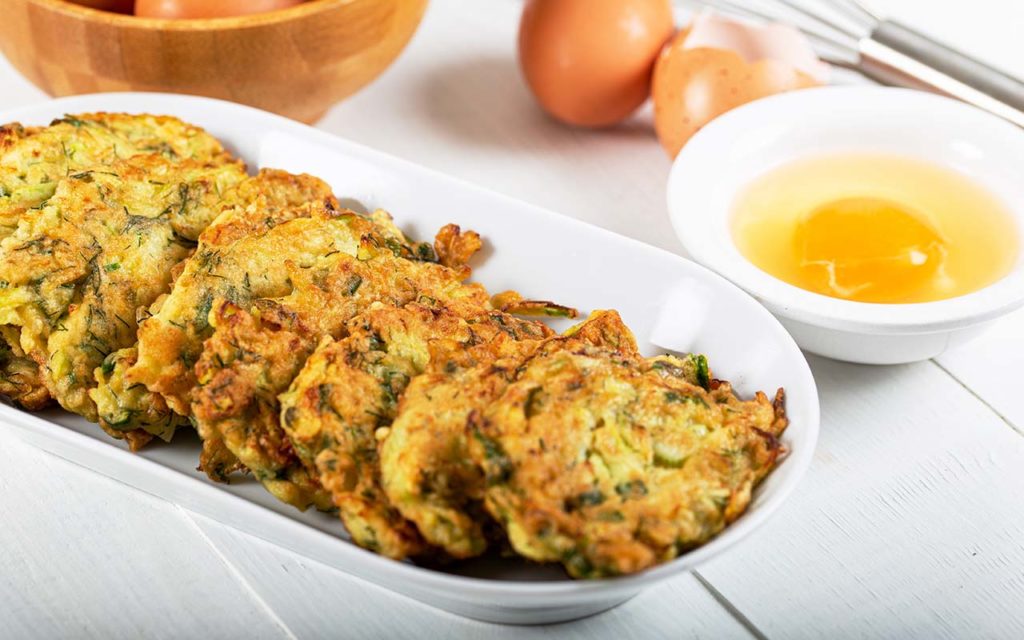
This popular Turkish food is similar to a vegetable pancake or fritter. It’s made with the most commonly used summer squash in Turkey: zucchini.
It’s an incredibly versatile dish because you can add many different vegetables to the batter, which is made of shredded zucchini.
Vegetables commonly added include shredded potatoes, carrots, and onions. Besides the shredded vegetables, the fritter batter contains flour, oil, eggs, and salt.
The batter is fried on both sides until golden brown. It’s served with crusty bread, a leafy salad, or garlic-infused yogurt. Mücver can also be eaten as a cold snack and is a very filling and popular Turkish food.
2. Mercimek Corbasi (Lentil Soup)
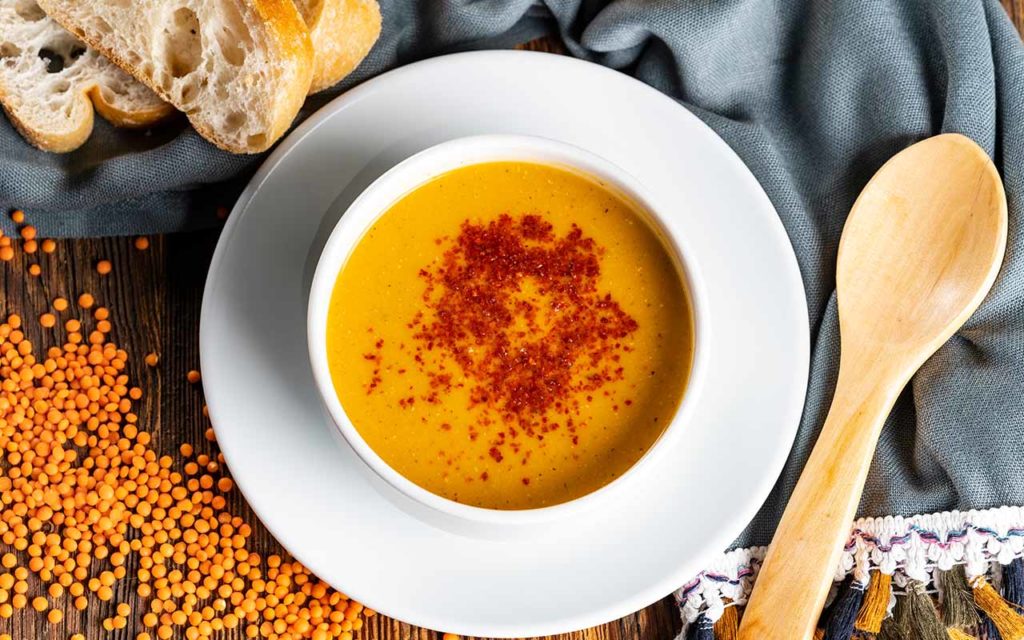
Mercimek Corbasi is a very simple, everyday Turkish food based on red or orange lentils. It’s a delicious lentil soup made by pureeing lentils and spices.
It is often garnished with melted butter, cilantro, and lemon juice, with a side of pickled vegetables such as carrots, cabbage, and olives.
This warming and filling soup is often served with hot pitas on the side, ensuring a warm, melting sensation within you.
3. Borek (Savory Pie)
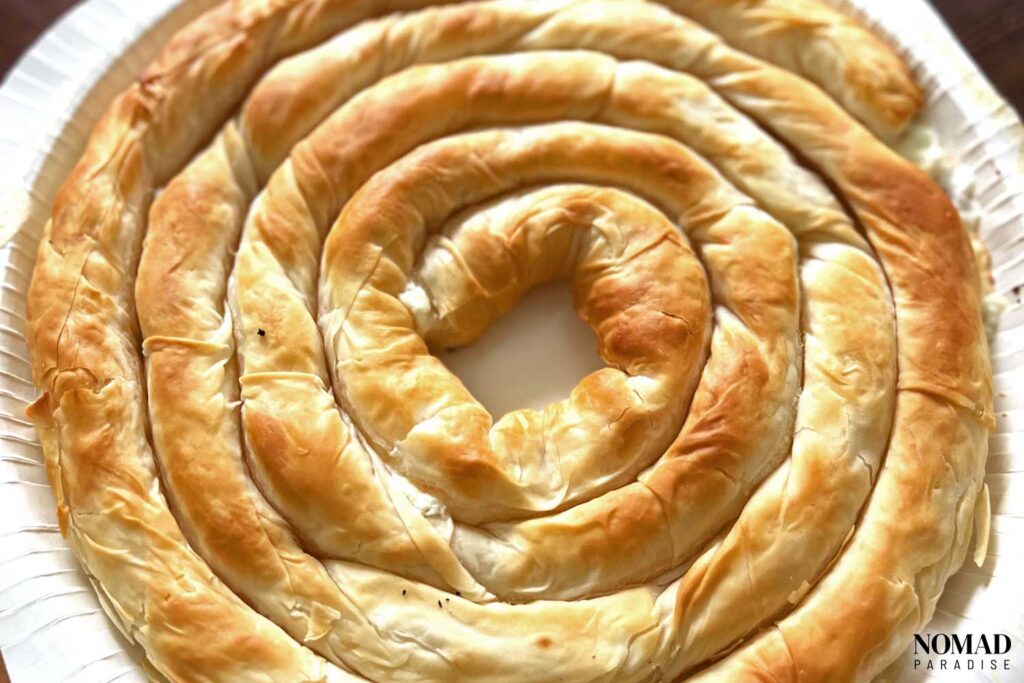
This Turkish national savory pastry is flaky and delicious, filled with spinach and cheese or minced beef and other meats.
Borek can be layered like lasagna, served as puffs, or rolled, and created as small individual pastries or as a whole in a pan. It’s a popular Turkish food across the countries of the Balkans .
Turks eat it for breakfast, lunch, as a snack, or for dinner. It’s a hearty delicacy that’s best enjoyed when served warm with Turkish tea.
Read more: Borek Recipe
4. Pide (Turkish Flatbread or Pizza)
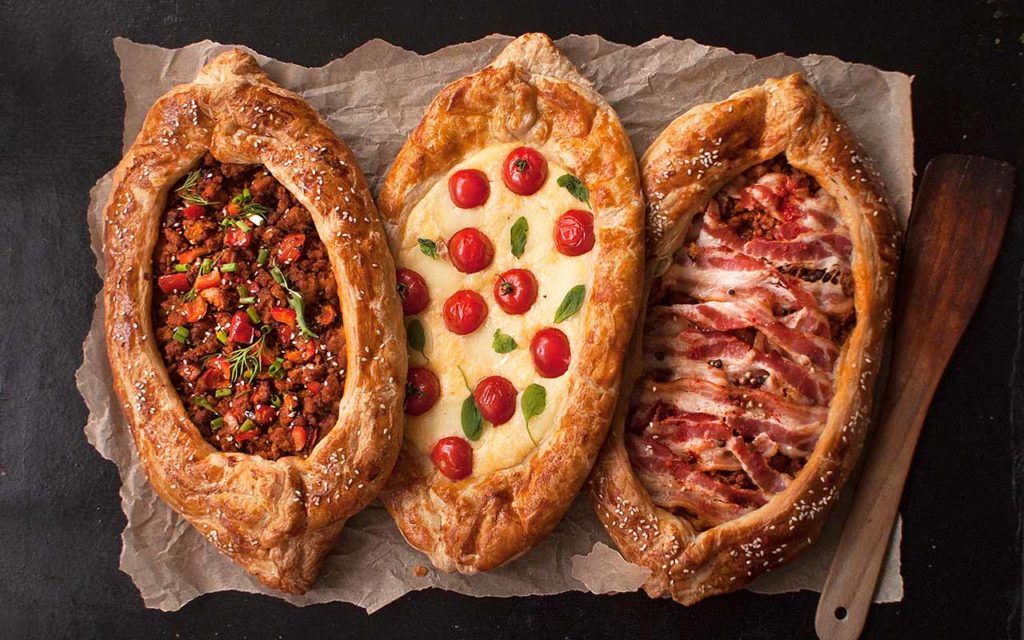
One of the most popular Turkish foods, this boat-shaped pastry is made with slightly thick dough and a wide range of fillings.
The most typical fillings include different meats, fresh vegetables, cooked spinach, eggs, spicy Turkish sausage sujuk/sucuk, and cheese. The dough is then baked in a high-heat stove oven.
According to many people, this Turkish food is the closest version of a Turkish pizza you can find. Pide is best enjoyed when served warm. You can find it at many takeaway establishments around the country, and you can eat it as a starter or as a main.
Turkish Mains
5. manti (dumplings).
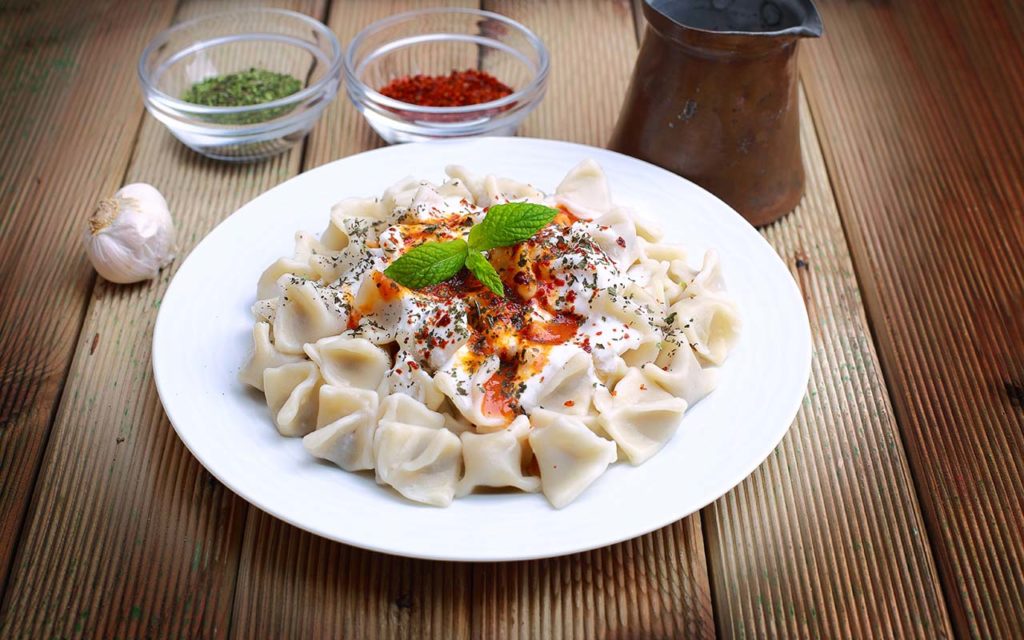
Manti is the Turkish version of Italian ravioli but with a unique taste and texture. The miniature ravioli are fried or boiled dumplings with lamb or beef filling, seasoned with a wide range of spices. The spiced ground meat is simply delicious.
It’s usually served with garlic yogurt, spicy butter, and spicy tomato sauce, with mint and chili flakes sprinkled on top.
6. Kofte (Meatballs)
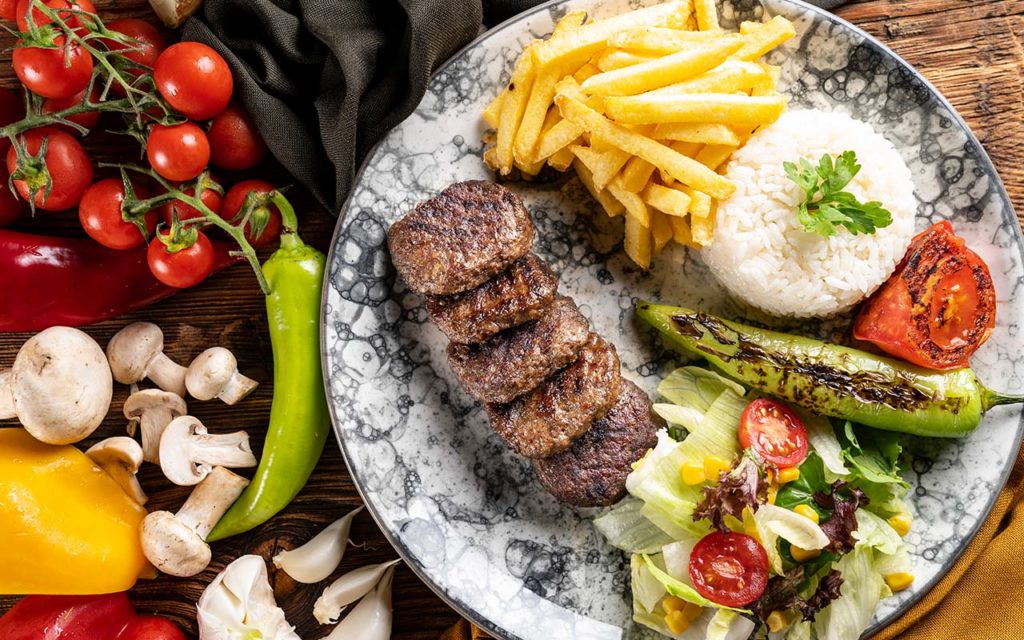
This Turkish food and country staple is, at the core, Turkey’s version of meatballs. They are patties or balls made with lightly cooked lamb or beef served and shaped in various ways.
Some prefer it with fresh herbs like mint and parsley in the meat, while others are simply happy with onion and spices.
While you can often find them in casseroles, coated in egg and fried, over salads, or in sandwiches, we suggest you try the original grilled recipe with rice and winter salad on the side. You can often find them wrapped in pita bread with some salad.
There’s even a vegetarian version made with chickpeas and vegetables. Kofte is a Turkish food that can pander to a diverse range of palates and people and is undoubtedly one of the country’s most delicious dishes.
7. Lahmacun (Thin Flatbread Pizza)
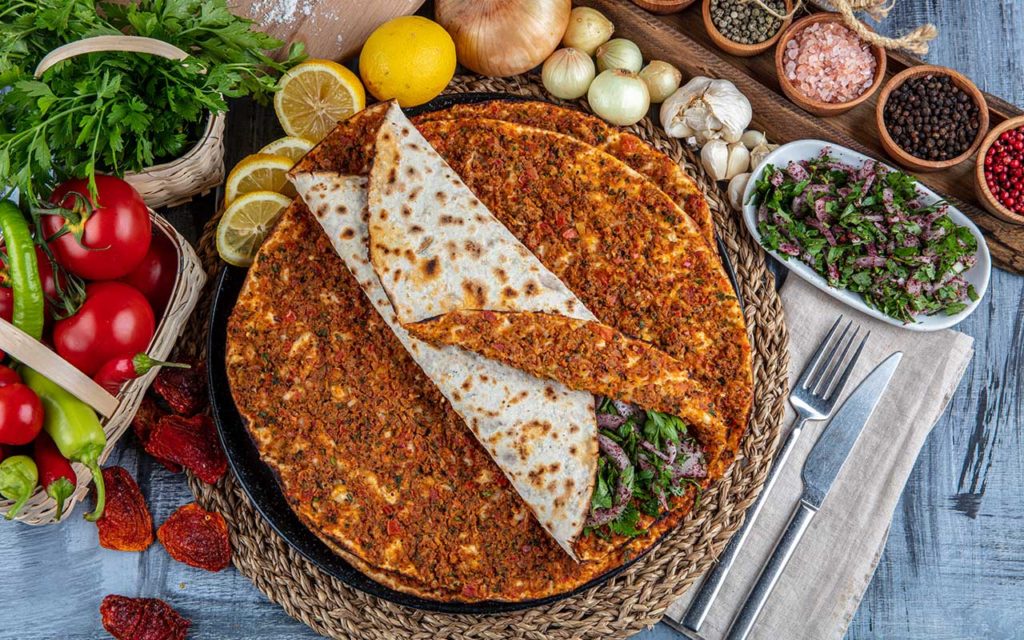
Lahmacun is a Turkish take on pizza , and it’s really popular across the country as a type of street food or kebab starter. It consists of a crispy flatbread spread with seasoned minced meat.
The seasonings can be any kind of salad drizzled with lemon juice. It can be pulled apart, folded in half, or wrapped. It’s a Turkish food full of flavors due to the different Mediterranean spices.
The flatbread is always freshly baked. There are also some varieties of Lahmacun that are spiced with the addition of sour pomegranate syrup or ground nuts.
8. Sis Kebabs (Shish Kebabs)
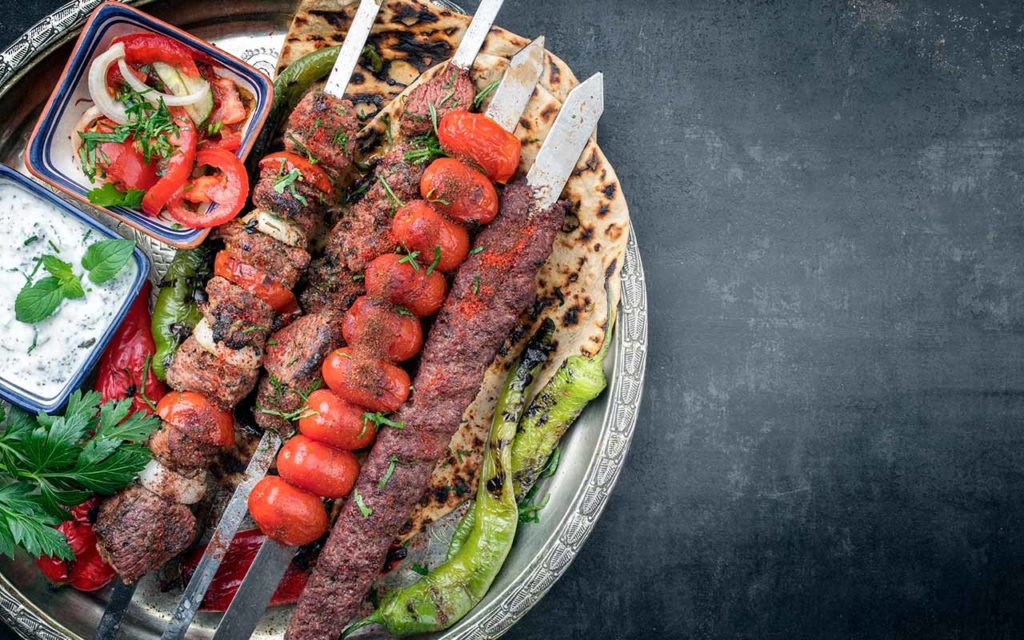
Sis Kebabs are popular not only across Turkey but also throughout the world. This Turkish meat dish consists of skewered pieces of meat cooked over hot charcoal.
It consists of perfectly cooked, marinated skewered lamb or beef cubes, usually served with rice, salad, and thin bread on the side. Or, it can be wrapped up in a thin sheet of flatbread, not hiding away the flavor of the meat.
Sis kebabs are best enjoyed hot, straight from the flames. They are savory, tender, and truly delicious.
Sis Kebabs form one of the cornerstones of Turkish cuisine, and Turkish people have brought this delightful dish to cities and countries all over the world.
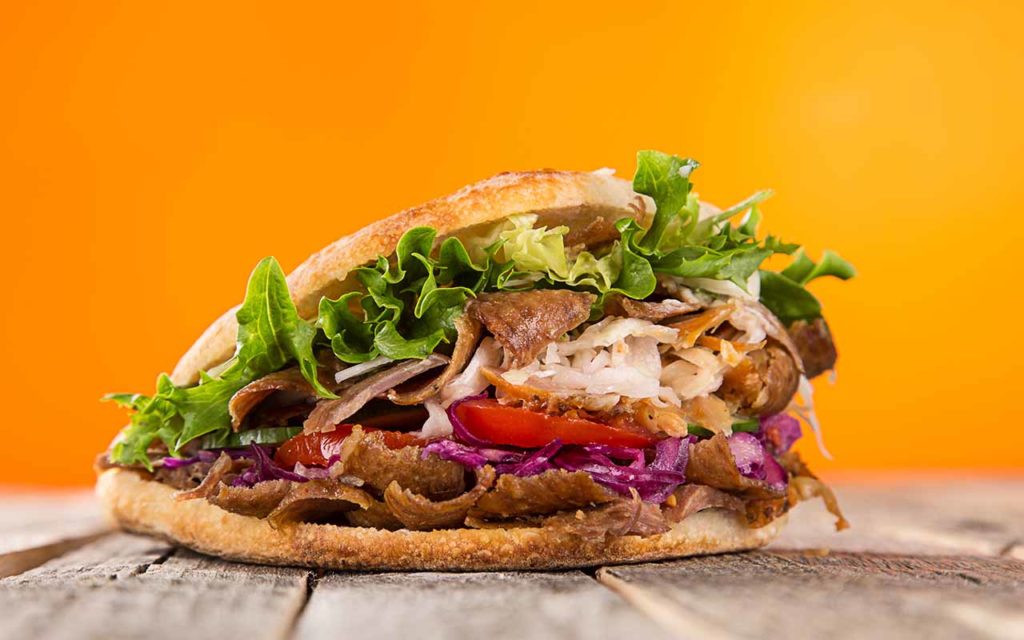
Doner is a perfect Turkish food option for those who love meat sandwiches and subs. This classic Turkish food is a pita bread spread, a considerable amount of sliced meat, shavings of beef, chicken, or lamb, fresh vegetables, and spices, folded like a sandwich. Doner is also served as a main dish with rice, chips, and salad on the side.
The meat is full of flavors as it’s cooked on a rotating spit. There are many varieties of Doner around the world, some of the most popular being the Greek gyros, Arab shawarma, and Mexican Al pastor.
Once again, the Doner, like the Sis Kebab, sits high and mighty at the table of world-famous Turkish dishes.
10. Kuzu Tandir (Roasted Lamb)
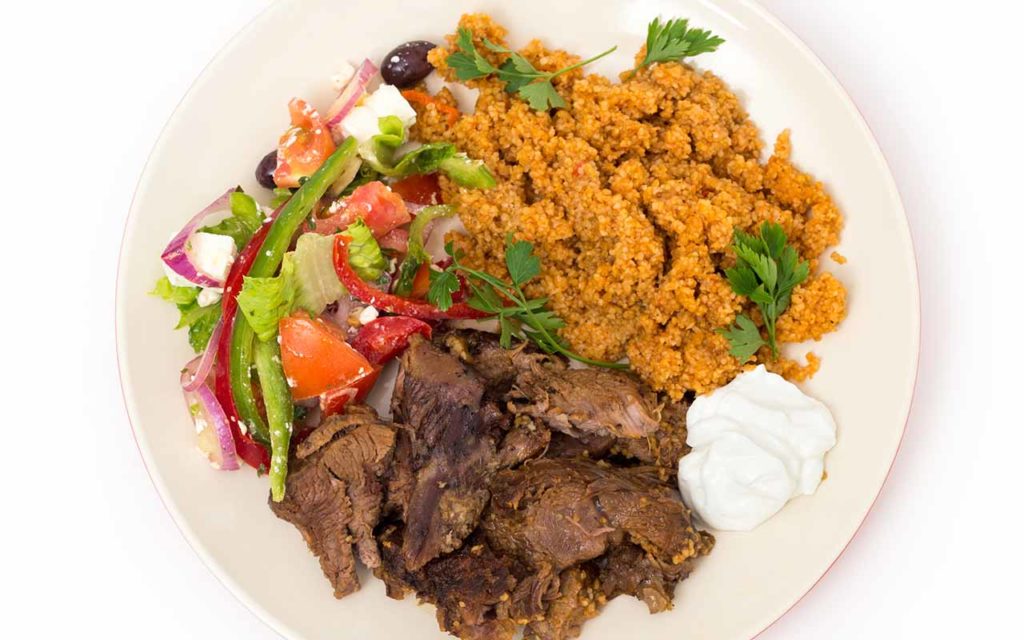
This traditional Turkish food is a roasted lamb dish that’s similar to the Moroccan Mechoui. The meat is left to cook slowly, but the end result is a delicious and tender lamb that slowly melts in your mouth.
Traditionally, the meat is cooked in an oven made in the ground called tandir, hung over hot coals, and cooked for hours.
Seasonings include salt, pepper, lemon juice, bay leaves, and rosemary sprigs, so the fragrance is out of this world. It’s typically served with mashed potatoes or Turkish rice.
11. İmam Bayıldı (Stuffed Eggplants/Aubergines)
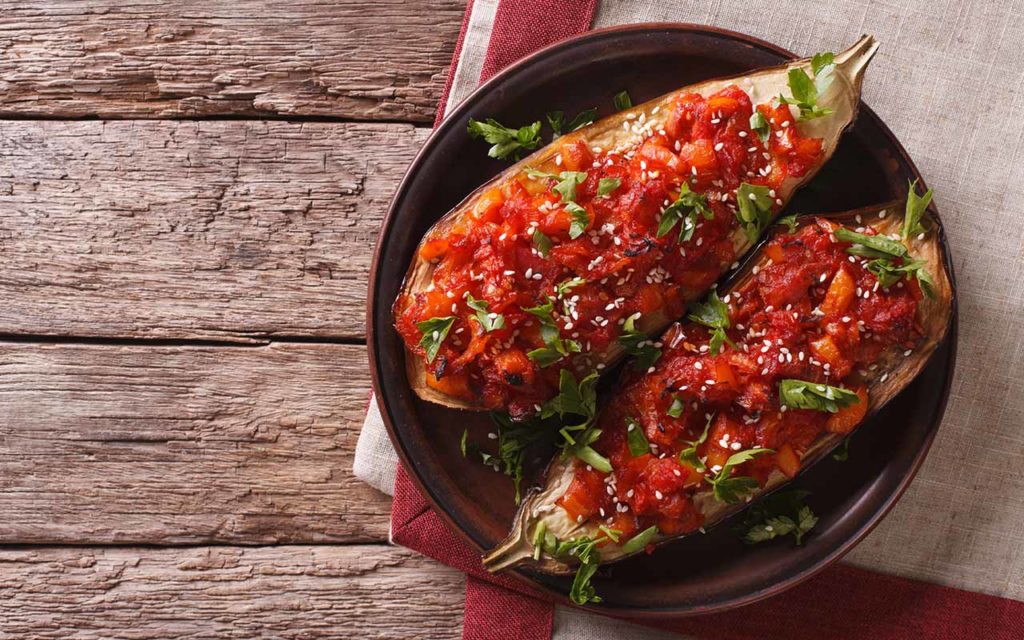
This Turkish delicacy is a colorful and nutritious vegetarian dish that translates into “the Imam fainted.” It consists of braised and simmered aubergines stuffed with bulgur, rice, and different vegetables, such as tomatoes, onions, and garlic, that, once stuffed, are then baked.
There’s also a version of this hearty and versatile dish for meat lovers, which adds beef to the filling.
Rich in taste and texture, it would be a shame not to enjoy it with a side of Turkish yogurt drink, in my humble opinion.
12. Hunkar Begendi (Sultan’s Delight)
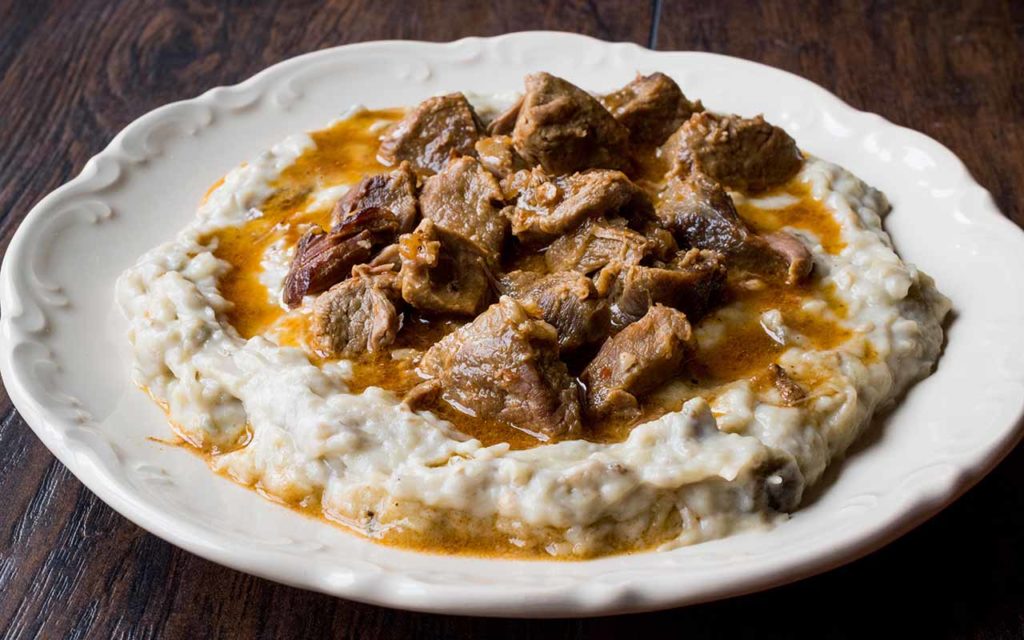
This ancient Ottoman royal favorite dish is known as Sultan’s Delight. It is a lamb stew with soft, marinated lamb chunks served on top of pureed aubergine, melted cheese, and butter.
The aubergine and the lamb make a perfect combination of flavors that just work to perfection.
Nowadays, you can find other meats and dishes served with the delicious aubergine puree called Beğendi.
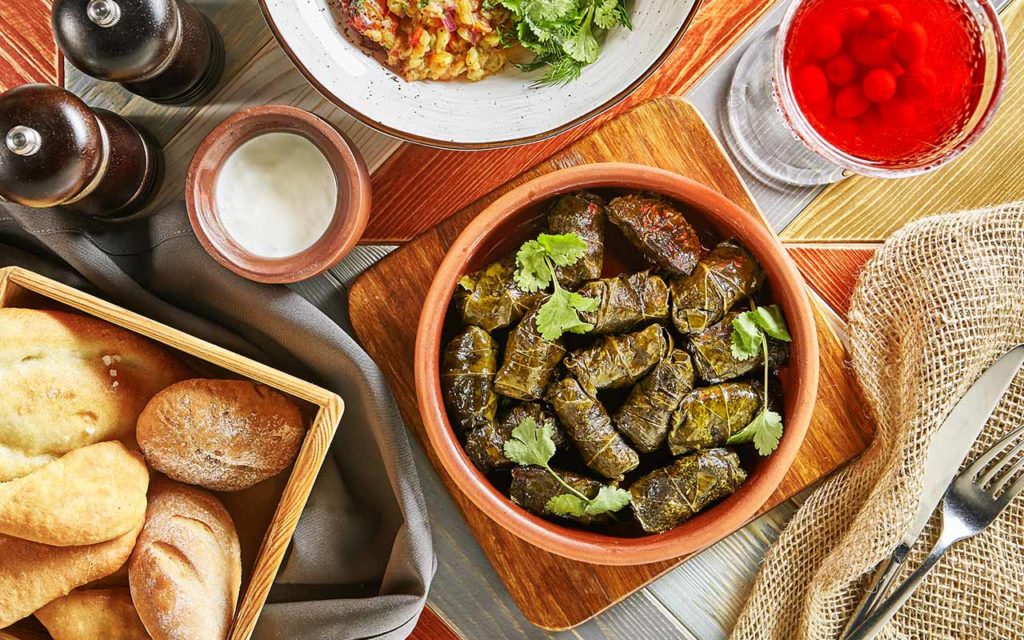
Dolma is a Turkish food that’s commonly served as a main dish. It consists of stuffed vegetables or vine leaves with a mixture of onion and rice.
The vegetables used for the preparation of Dolma are usually peppers, zucchini, tomatoes, and aubergine. But, the more popular version of the dish includes vine leaves instead of vegetables.
Besides being served as a main dish, Dolma is often included in the Turkish meze platters.
The non-vegetarian and more popular version of Dolma incorporates spiced minced meat in the filling. It is typically served with yogurt, oregano, and red pepper powder in oil.
It is believed that this Turkish dish, which is popular in the Balkan countries too, originates from the 17th century. This dish is one of many examples of the historical importance of Turkish cuisine.
14. Kokoreç (Wrapped Lamb or Goat Offal)
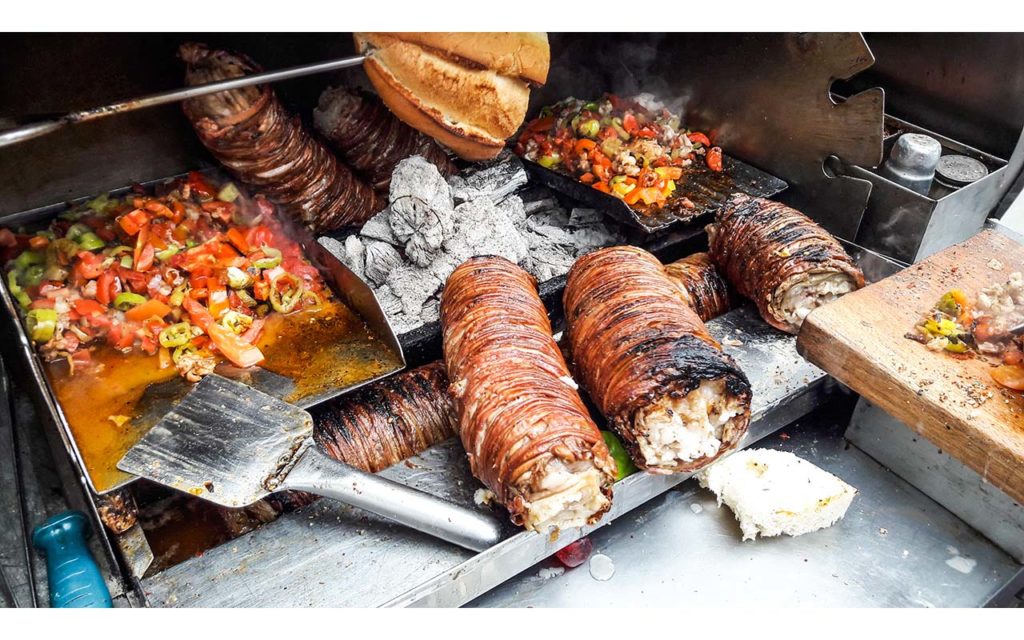
Kokoreç is a striking Turkish food commonly sold by street vendors. It is made with a couple of types of goat or lamb organs wrapped in intestines.
It’s known as hangover food in Turkey, so if you have a few too many beers one night, be sure to try it in the morning!
Kokoreç may not be for the squeamish, but Turks have enjoyed its unique and flavorsome taste for centuries.
The organ meat is marinated in lemon juice, olive oil, oregano, salt, and pepper. Then, it’s wrapped tightly in the intestines and grilled horizontally on a rotating spit. The meat is cooked until brown and crispy on the outside.
It is usually served with thin flatbread, pickles, or brined hot peppers and is one of the most unique dishes you’ll have the opportunity to try when traveling through the country.
15. Menemen (Scrambled Eggs with Tomatoes and Peppers)
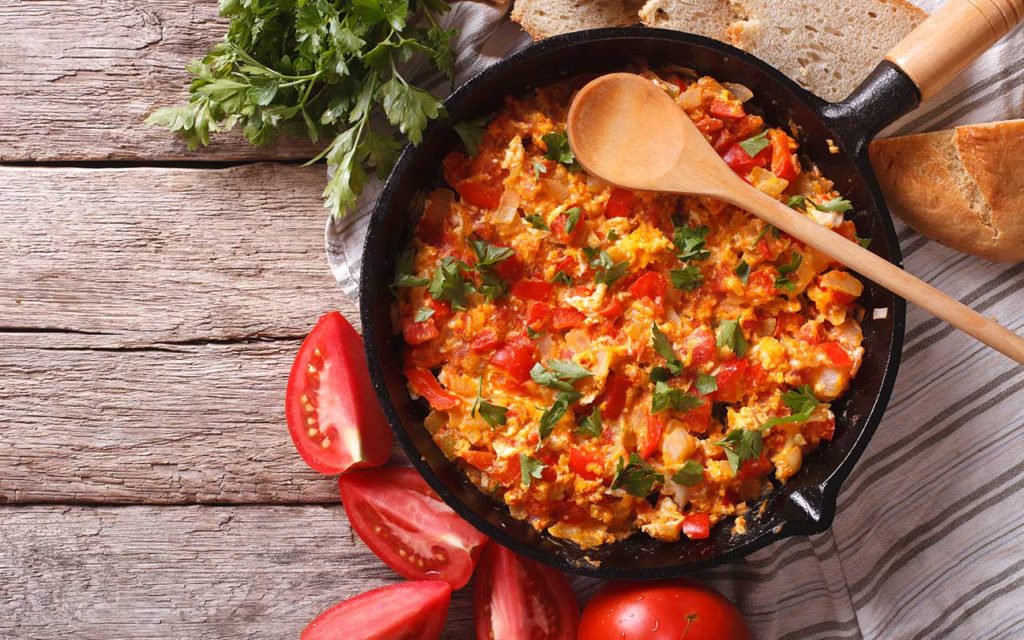
Here’s a new way of serving eggs for breakfast – Menemen. This light Turkish breakfast is a cross between a vegetable stew and scrambled eggs.
Peppers, onions (the jury is still out on this ingredient), and tomatoes are cooked down to a broth, and whisked eggs are added. Then, everything is mixed well.
Additional ingredients that enrich the flavor of Menemen are the spicy Turkish sausage sujuk/sucuk or cheese. This Turkish dish goes exceptionally well with hot pita bread, as it’s encouraged to dip the bread in the mixture or spread Menemen on the bread to enjoy.
16. Nohutlu Pilav (Rice Pilaf with Chickpeas)
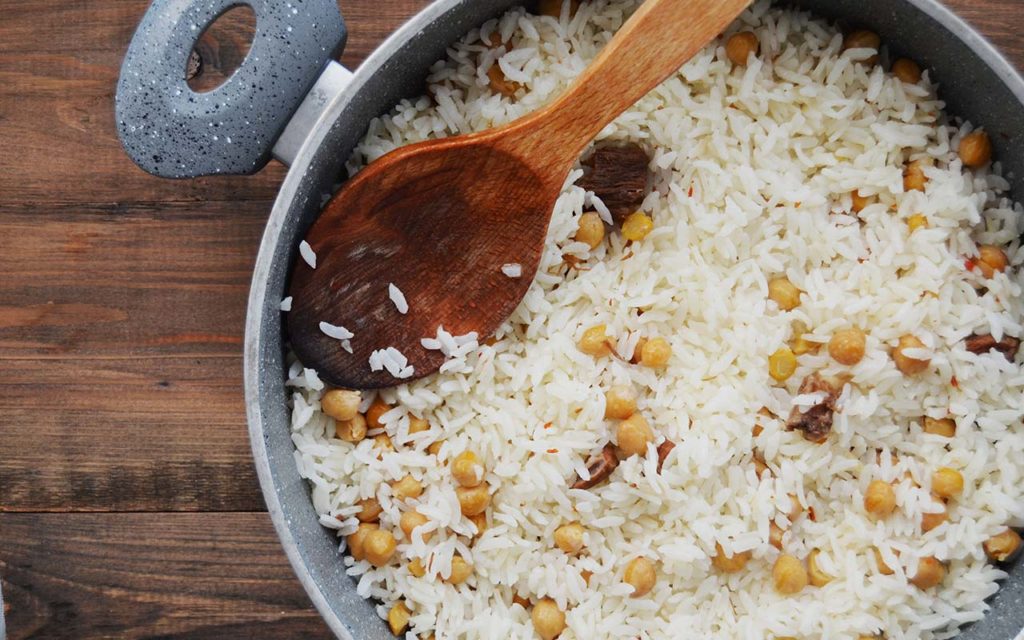
This Turkish food is just one version of the many Pilav dishes. Its core ingredients are rice with chickpeas and chicken. Nohutlu Pilav may be a simple dish, but it’s very filling and nutritious.
Layers of chickpeas and rice are piled high, topped with roasted chicken, as the juices blend well with the flavors of the rice and chickpeas.
It’s usually sold as street food with pieces of chicken. Nohutlu Pilav can be eaten as a main or side dish.
17. Iskender Kebab
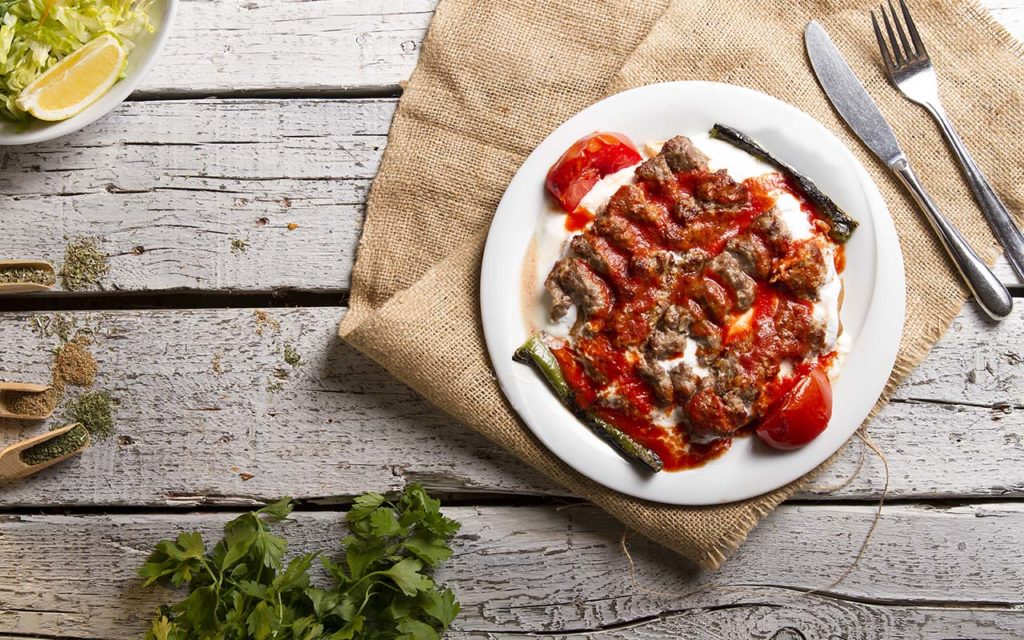
This rich and satisfying Turkish food is particularly popular in the northwestern region of Turkey. It consists of thin slices of grilled lamb, topped with tomato sauce, and served over pita bread. The dish also incorporates melted sheet butter and yogurt.
For extra flavor, melted butter and tomato sauce are poured over the dish. It is a comforting food that’s best enjoyed warm, and it’s most commonly prepared during winter.
18. Kapuska (Cabbage Stew)
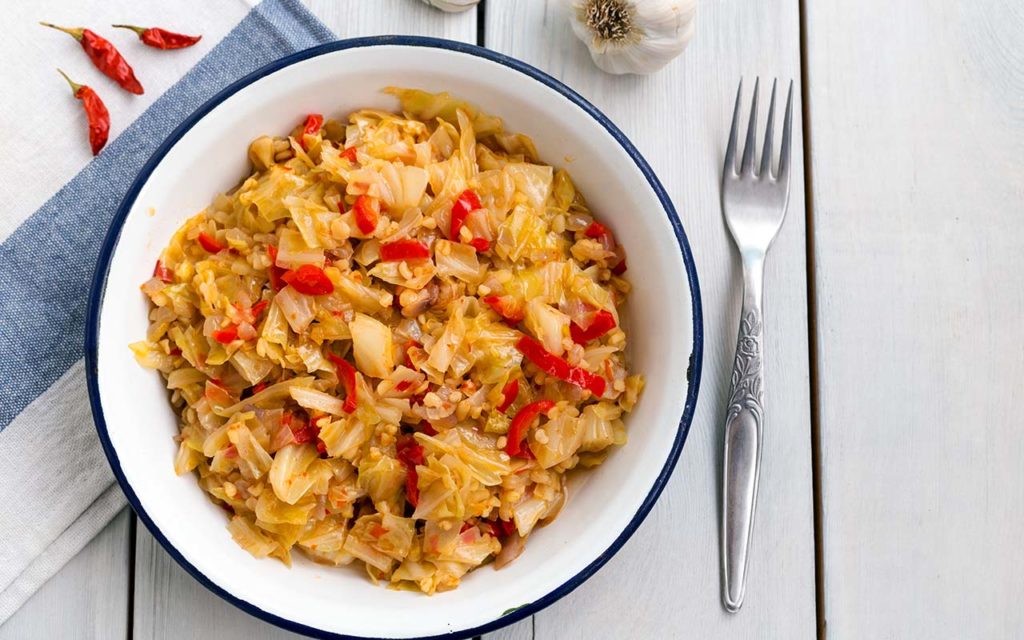
Kapuska is a hearty cabbage-based stew. There are many variations of the stew, and the dish is often enriched with additional ingredients such as meat, rice, bulgur, or beans.
Traditionally, the cabbage is stewed with tomatoes, onions, ground black pepper, and olive oil until perfectly tender.
A vegetarian version of Kapuska is made with the same ingredients except the meat. It’s a true comfort Turkish food for winter that keeps locals warm and cozy during the colder months.
19. Alinazik Kebab
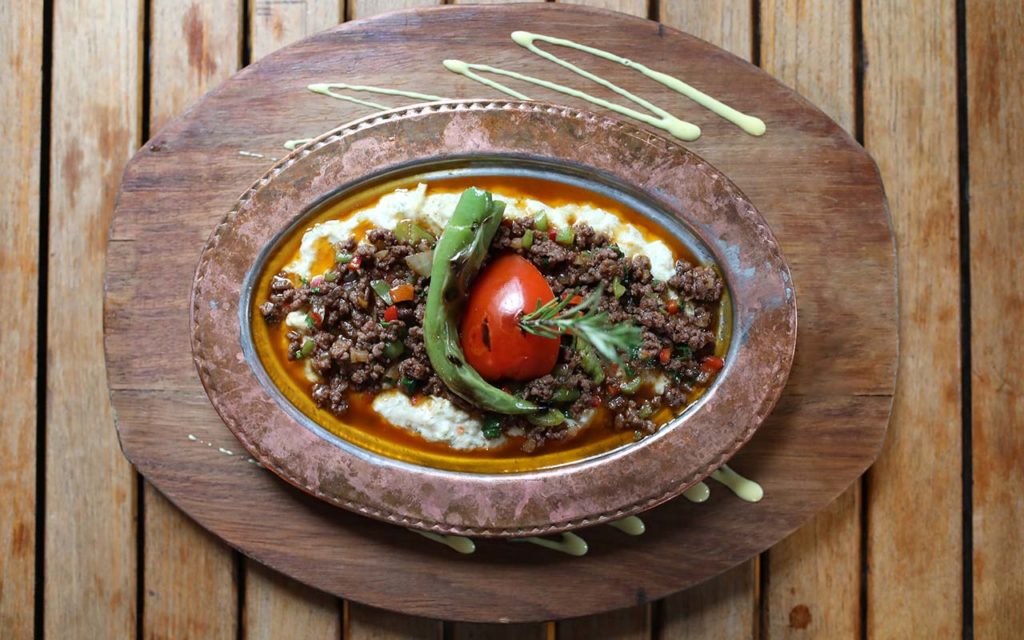
This kebab variety is most popular in Gaziantep. Char-grilled aubergines (eggplants) are pureed and mixed with garlic yogurt sauce and topped with sweet lamb chunks that melt in your mouth. The lamb is usually stewed with red pepper paste, onions, tomato paste or tomatoes, and olive oil.
Aubergines in the traditional dish have a smoky flavor achieved from being roasted over a coal fire. Alinazik Kebab pairs well with turnip juice and winter salad on the side and is a must-try eggplant dish.
Turkish Breads
20. ramazan pidesi.

Meaning “ramadan pita,” ramazan pidesi is a traditional Turkish bread made from a dough of wheat flour and yeast, typically topped with Nigella sativa and/or sesame seeds. This hugely popular bread is traditionally eaten during Ramadan for the early morning and fast-breaking meals.
Baked in a round, flat shape with a woven pattern, this bread is soft and comforting and much lighter and fluffier than other types of bread.
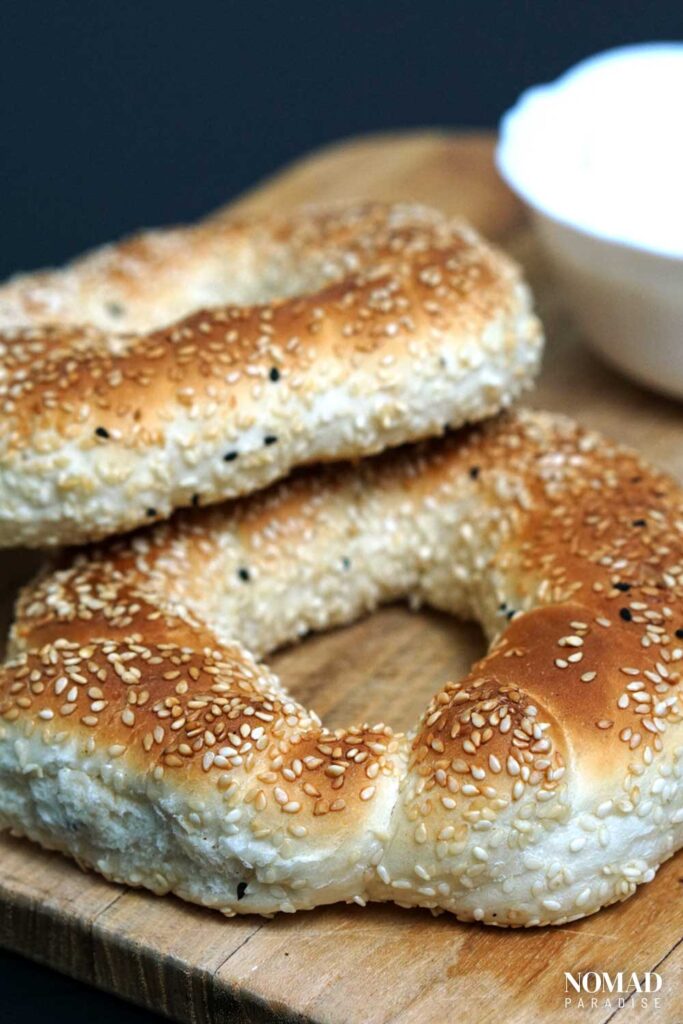
Circular and doughnut-like in shape, simit is a bread beloved for its sumptuously soft, chewy texture, with a delightful little crunch from the seeds, typically sesame, that coat the dough before baking. Found throughout Turkey, and known as “gevrek”, meaning “crisp,” in Istanbul, simit is also popular in the Balkans and the Middle East.
It is typically eaten for breakfast with tea, jam, cheese, and the yogurt-based beverage Ayran, but can be enjoyed at all times of the day. Keep your eyes peeled for street vendors who sell it stacked on a tray they balance on their heads!
Turkish Desserts
22. gullac (rose pudding).
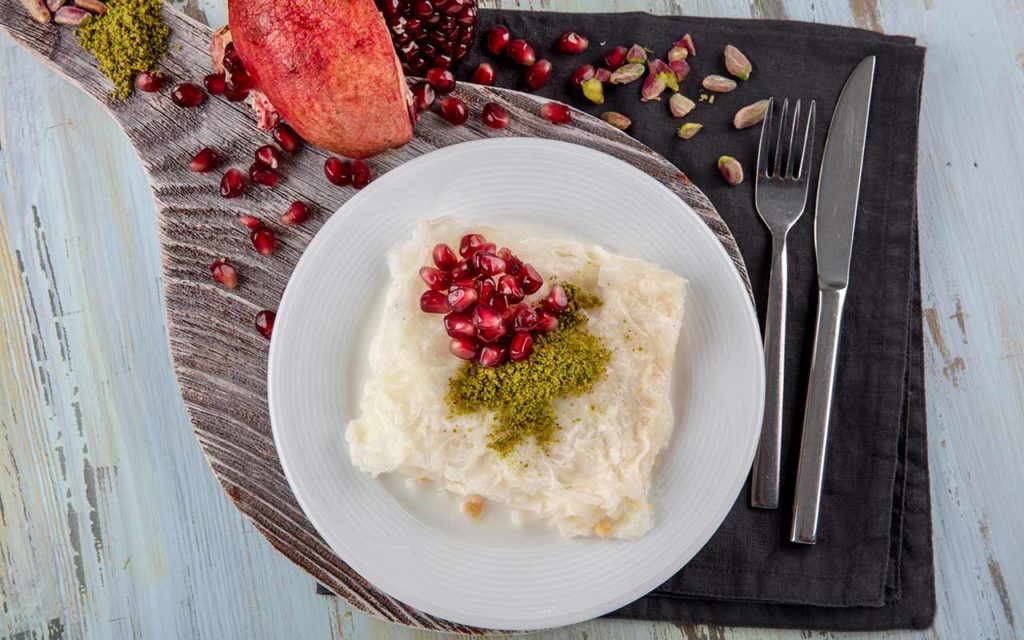
This soft Turkish national dessert is usually prepared during Ramadan. It’s made with dough, rose water, milk, pomegranate seeds, and nuts.
Gullac has a unique texture and tastes sweet, creamy, and fragrant. Some variations of this dish include various toppings such as dried fruit and nuts.
23. Kazandibi
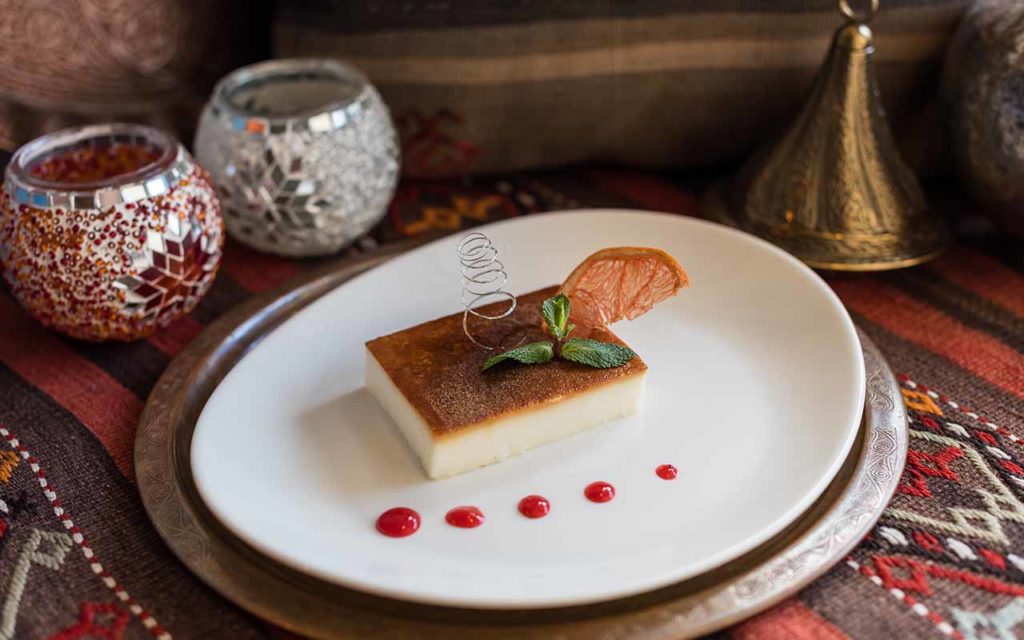
This interesting Turkish dessert , which draws comparisons to Panna Cotta, was created by mistake.
It is believed that an Ottoman Sultan’s chef was trying to invent a new dessert based on an already popular chicken breast-based dessert (yes, this incredible dessert remains most popular to this day) and caramelized the bottom part of the dessert. The palace loved it, and word of the dish quickly spread.
Today, this caramelized milk pudding, also known as a burned-bottom milk pudding, is one of the most popular desserts in Turkey. As sweet dishes go, this should definitely be added to your must-try list.
24. Baklava

Baklava is a rich, syrupy pastry dessert and is arguably the most popular dessert in Turkey. It is a sticky, sweet pastry made of layers of filo separated with oil and melted butter, traditionally filled with chopped nuts. Everything is held together with honey or syrup.
Today, you can find baklava with almost anything inside. The filling can include hazelnuts, pistachios, or cottage cream.
The sweet pastries are sliced into diamonds, squares, or triangles before baking. The cooked baklava is poured with a sweet syrup and allowed to soak in for hours, and sometimes even an entire day.
This beloved Turkish pastry is a rich and filling dessert that those with a sweet tooth should definitely try.
25. Kayısı Tatlısı
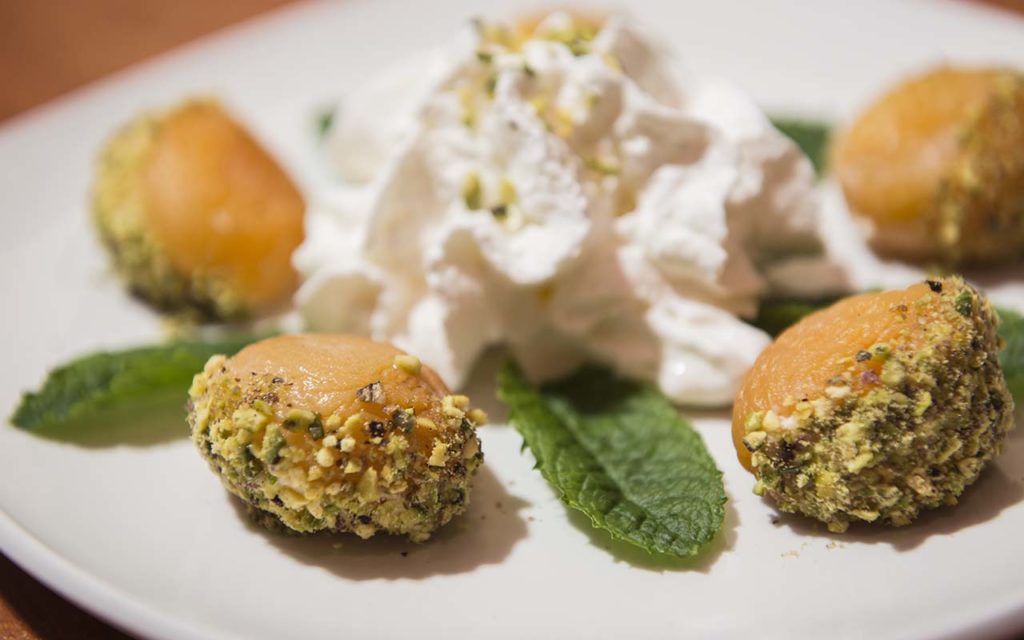
This traditional Turkish dessert dish consists of dried apricots filled with cottage cream and sprinkled with nuts.
It is perfectly sticky, syrupy, and sweet, with a satisfying crunch courtesy of the nuts. Firm and fleshy apricots help make the perfect Kayısı Tatlısı. When it comes to the filling, a Turkish cottage cream called kaymak is used.

This Turkish dessert may require time and effort to make, but it’s totally worth the wait. Kunefe or Kanafeh is a sweet and sticky treat that’s also popular in the countries of the Middle East.
The shredded pastry is soaked in traditional syrup and layered with special cheese, nuts, or clotted cream.
Most often, pistachios are scattered on top of the dessert. Different types of pastry can be used in the preparation of this dessert, depending on the region. It’s a Turkish food that dessert lovers simply have to try.
Read more: 23 Best Turkish Desserts You Should Try .
Turkish Food Summary
And there we have it – twenty-four of the most delicious Turkish foods that you simply have to try when you visit Turkey. Traditional Turkish cuisine has so much to offer, from the doner meat and meat dishes to the vegetable dishes and traditional Turkish tea.
Everywhere you look in Turkey, mouthwatering food can be found in abundance. It’s down to you to embrace it, seek it out, and try it!
Oh, and before you go, make sure you’re well-versed in the names and pronunciations so that you can ask to try these delicacies on the street or at a restaurant.
You Might Also Like to Read
- Bulgarian Food – 15 Traditional Dishes as Recommended by a Local
- Macedonian Food – 15 Traditional Dishes as Recommended by a Local
- Serbian Food – 14 Traditional Dishes as Recommended by a Local
- Bosnian Food – 11 Traditional Dishes as Recommended by a Local
- Croatian Food – 20 Delicious Foods You Simply Must Try
Save and Pin for Later
Want to keep all these delicious Turkish food picks in a safe place? Save this article and pin it to one of your Pinterest boards for later.
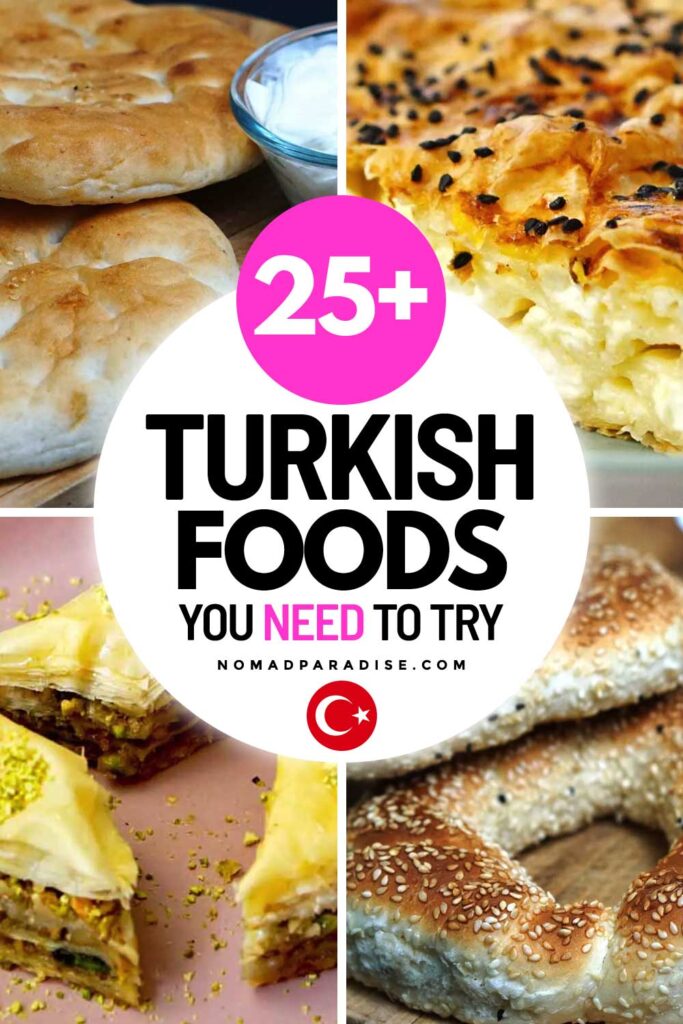
Hey there! We are Dale and Doina, the founders of Nomad Paradise. We traveled full-time for over three years, and while we now have a home base in the U.K., continue to take trips abroad to visit new places and try new cuisines and foods. Our food guides are curated with the guidance of local foodies, and their contribution is indicated under each article. We also cook the foods we try abroad, and you can discover how to make them in our 'recipes from around the world' category.
Hazal Erdil is a Turkish translator, writer, and avid foodie. She is deeply passionate about Turkish travel, culture, and cuisine.

- Destinations
- Blue Cruise
- Plan My Trip
A COMPLETE GUIDE TO TRADITIONAL TURKISH FOOD CULTURE
You may know Turkey or even plan to visit for its diverse culture, history, and architecture. But in between the cozy beaches, magnificent structures, ancient ruins, and stunning architecture, you don’t want to miss the country’s foods and cuisine.
Turkey has an impressive culinary mosaic with countless influences from all corners of its Ottoman and Byzantine history. Thus, it ranks somewhere at the top of the world’s cuisine, next to French, Italian, and Chinese delicacies.
Regional Influences
Turkey loves its food and as you explore the different regions of the country, you’ll notice the changing landscape of breakfast, lunch, and dinner tables. The cuisines available in an area are influenced by the history and culture of the local people. They are also shaped by the foods common to that particular region.
For instance, the Aegean, Marmara, and Mediterranean cuisines are rich in fish and seafood due to the adjacent seas. The Black Sea region also uses a lot of fish for the same reason, but Slavic and Balkan culinary cultures influence their meals. As such, the food typically includes corn and corn flour dishes.
On the other hand, the southeast is famous for its kebabs and desserts like kunefe, baklava, and kadayif. The presence of abundant livestock in the Anatolian region facilitates this meat-rich diet.
Istanbul is the most interesting of all. It’s a thriving metropolis and thus, draws people from all over the country. These migrants bring with them different cultures that have turned the city into the cultural heart of Turkey. Here, you’ll find delicious Turkish delicacies from every region of the country.
The Aegean region produces a lot of olives, which is reflected in its delicious olive oil vegetable dishes. Pastries are most common in Thrace, while Central Anatolia has specialties like manti and gozleme.
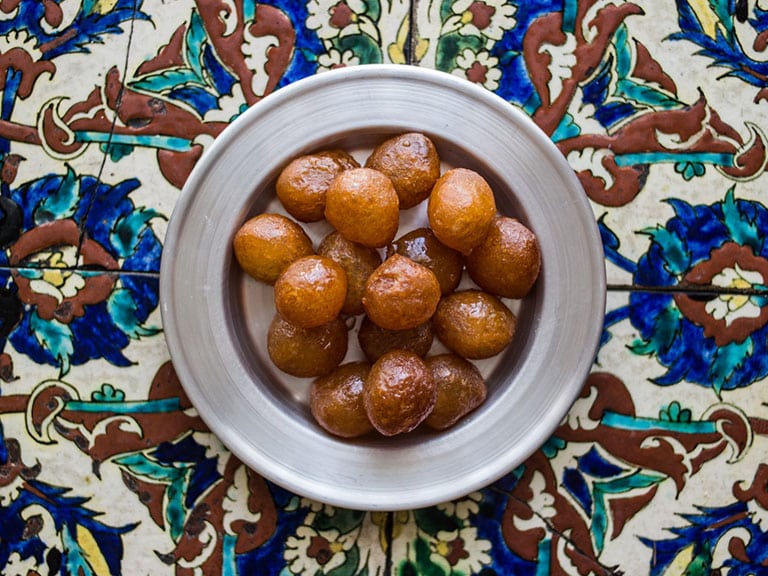
General Cuisine Culture
Food in Turkey is embedded deep in the fabric of society. Almost everyone is passionate about food, from the five-year-old waiting for mom’s supper to the theatrical roadside seller trying to sell their street food snacks. Thus, mealtime in Turkey is a social occasion relished by everyone involved.
In the Ottoman era, families had two meals a day. The first was pretty similar to brunch, taken between morning and noon, while the second meal was eaten between the late afternoon and evening. This meal was more like a feast, consisting of several meat dishes served with vegetables. There were also several legume accompaniments.
Today, most families take three meals a day; breakfast, lunch, and dinner. The breakfasts are delicious but quick and basic during the weekdays. On weekends, however, breakfast is an occasion for the whole family to come together and enjoy many different foods. As a result, weekend breakfasts generally last longer than weekday ones.
Lunches are heavier than breakfasts but less elaborate than dinners. Finally, there is “yatsilik.” This unofficial meal is taken around 10 pm and consists of nuts like almonds, roasted pumpkin seeds, walnuts, hazelnuts, roasted chickpeas, and pistachios. There are also fresh and dried fruits, including figs, dried plums, and dried figs. These are served with black Turkish tea.
The key ingredients of Turkish meals are meat, vegetables, and legumes. The meals are generally soupy, and thus, bread forms a key part of everyday meals. The country’s bread consumption is so over-the-top that the average Turk consumes their body weight significantly in bread annually.
A Day’s Worth of Meals
Here’s a closer look at the three meals the average Turkish family takes in a day.
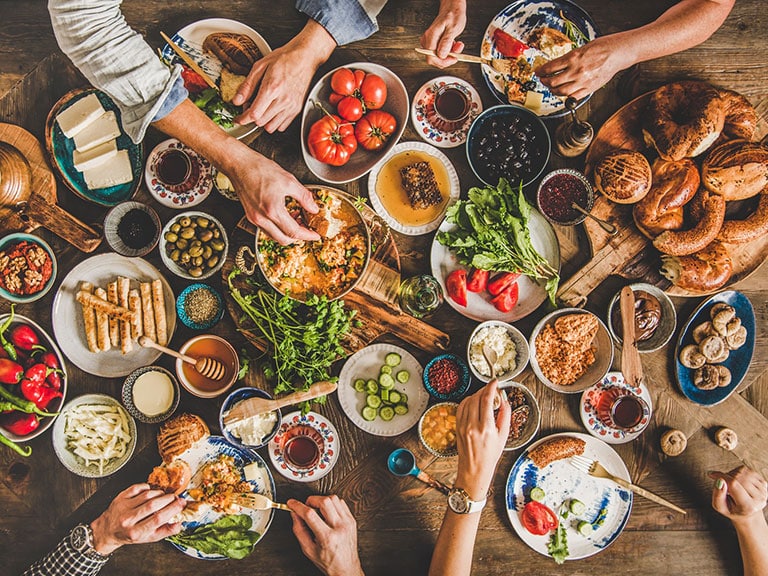
1. Breakfast
In Turkey, weekday breakfasts are different from weekend ones. Weekday breakfast is a light meal, just filling enough to give you all the energy needed to get through the day. The key ingredients include tea- the country’s favorite beverage- bread and cheese. There may also be a few accompaniments, but nothing too sumptuous. It’s pretty diverse with some vegetarian/vegan options, but it pales compared to traditional Turkish breakfasts, which are now done on the weekend.
Weekend breakfasts are large and plentiful. They’re usually so large that you can take a whole culinary tour in one sitting if you’re new here. A typical traditional breakfast contains several small dishes accompanied by olives, tomatoes, cheese, jams and spread, butter, and, of course, loaves of fresh bread and an abundance of Turkish black tea.
As a result, Traditional Turkish breakfasts are very delicious, healthy, and rich in nutrients. The vegetables and potatoes present an excellent breakfast option for those who prefer a vegan/vegetarian diet. They are usually fried using olive oil, sunflower oil, or hazelnut oil. This makes a Turkish breakfast one of the most delicious and nutritious vegan options available.
Eggs are also a staple in Turkish breakfasts. They may be served fried, boiled, or combined with tomatoes and peppers to make menemen.
As for the cheese, it is one of the most important elements of a Turkish breakfast. Cheese varieties vary depending on the region, with the Aegean coast enjoying white cheese (beyaz peynir) and Bergama Tulum and the Black Sea coast serving kolot peyniri, aho peyniri and tel peynir. On the other hand, comlek peyniri is the common cheese variety in Central Anatolia, while Eastern Turkey has its very own otlu peynir and deri tulum.
In the past, weekend breakfasts were predominantly a family affair held at home. The whole family would congregate to have family and friendly conversations, and as a result, the meal would last hours. Today, it’s still a family-oriented meal, but more families are getting it in breakfast restaurants.
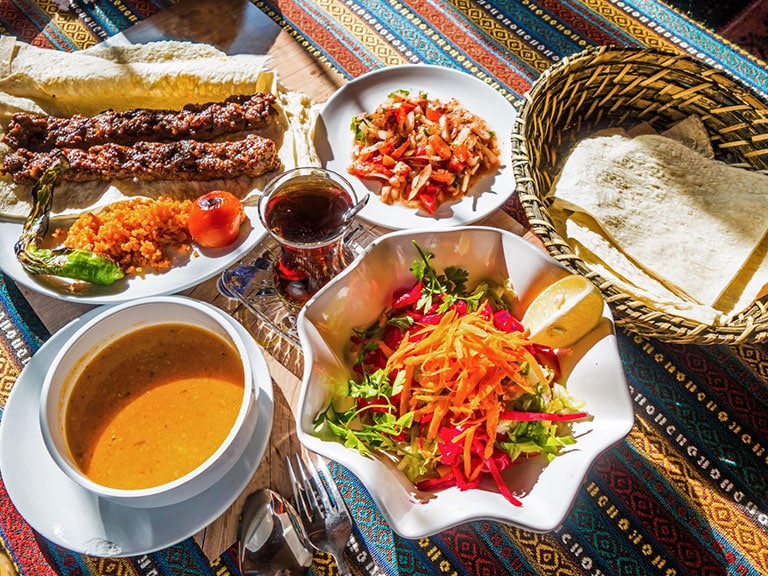
They typically consist of meals that do not require preparation time and effort, like soups and salads. Due to the prominence of soups, such dishes are referred to as ‘sulu yemek,’ which translates to ‘dishes with water.’ In addition, they are prepared using seasonal ingredients, so what you take for lunch during summer may not be what’s available during winter.
For instance, summer soups are generally cold and nutritious. These are prepared to help beat the summer heat and are sometimes called ‘yayla corbasi’ or simply ‘yogurt corbasi.’ They are typically yogurt-based and can be prepared with chickpeas, whole barley grains, or rice seasoned with mint.
Although most lunches are easy to prepare, there can be exceptions, especially with comfort foods like ‘manti,’ ‘pide,’ and ‘lahmacun.’

Dinner in Turkish cuisine is the most elaborate meal of the day. The dinner table is filled with a variety of sumptuous dishes because it’s the only time, apart from weekends, that all family members assemble.
Dinner in Turkey usually starts with warm soup. This is followed by a vegetable dish (prepared from eggplant, potatoes, cauliflower, zucchini, spinach, or green beans), legumes (lentils, beans, chickpeas, etc.), or meat boiled in a pot. Finally, the stew is served with starchy foods like bread, pasta, Turkish rice pilaf, or bulgur. Green salads or cacik may also be served during dinner.
At around 10 pm, families may partake in Yatsilik, an official meal that consists of fruits, fried or otherwise, and nuts. These may include plums, figs, almonds, hazelnuts, walnuts, roasted pumpkin seeds, roasted chickpeas, etc.
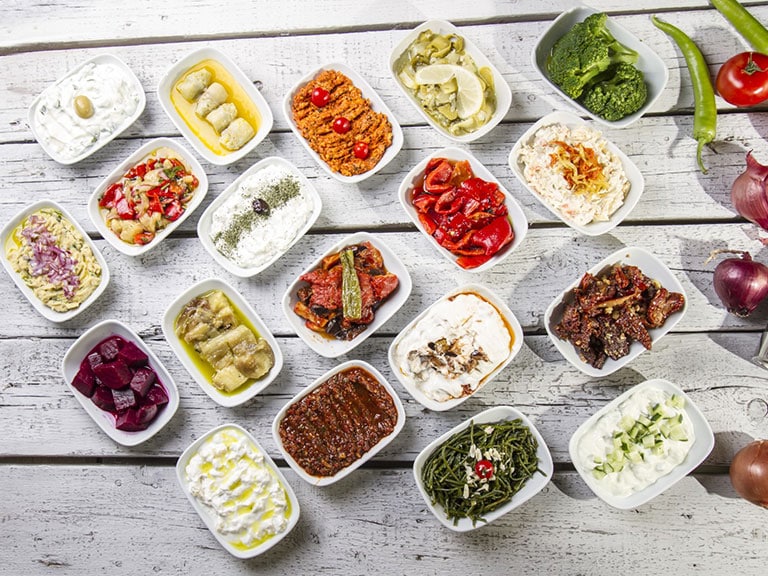
The Key Ingredients of Turkish Cuisine
The core of Turkey’s culinary marvels consists of a wide variety of ingredients. Generally, Turkish cuisine consists of vegetables, legumes, meats, spices, grains, nuts, and oils.
- Nuts typically consist of chestnuts, almonds, walnuts, hazelnuts, and pistachios.
- Legumes include chickpeas, lentils, beans, and broad beans.
- Meats usually include lamb, chicken, beef, and fish.
- Rice and bulgur are widely used as grains. Traditional Turkish oils include olive oil, sunflower oil, and hazelnut oil.
- There is a whole spectrum of spices, including red pepper, thyme, mint, coriander, black pepper, saffron, nigella seeds, rosemary, coriander, cumin, sumac, poppy seeds, and cloves.
- There are also a whole lot of vegetables. These include okra, pea, zucchini, chicory, carrot, green peppers, spinach, artichoke, tomato, mallow, cabbage, celery, potatoes, cauliflower, mushrooms, asparagus, beets, leek, lettuce, arugula, eggplant, purslane, radish, and garlic to name a few.
The availability of these specific ingredients varies by region.
Turkish neighborhoods come to life every week as vendors set up stalls in local markets to sell their products. These markets are where most Turkish households obtain their food ingredients. On market days, the atmosphere there is vibrant, with a lot of jostling and haggling as vendors compete for attention and buyers move through stalls.
But perhaps most attractive is the cacophony of sights and smells. The scenery here is colorful and dazzling spices, with wisps of aroma from high-quality fresh food ingredients. As such, bazaars are the best places to start your culinary tour of Turkish dishes. Some of the best neighborhood markets and spice bazaars worth a visit include; the Egyptian/Spice bazaar, Kastamonu Pazari, Bolu Pazari, Yalikavak Pazari, Kemeralti Carsisi, Grand Bazaar, Tire Pazari, Safranbolu Pazari, Ferikoy Organik Pazari, among others.

The western impression of Turkish food is that it is very spicy. However, Turks don’t just use spices for the sake of throwing in as many flavors as possible. Instead, every dish is prepared to bring out the main ingredient’s flavor instead of burying it under sauces or spices. So, cabbage will still taste like cabbage, lamb-like lamb, and beans like beans, albeit with a much richer flavor.
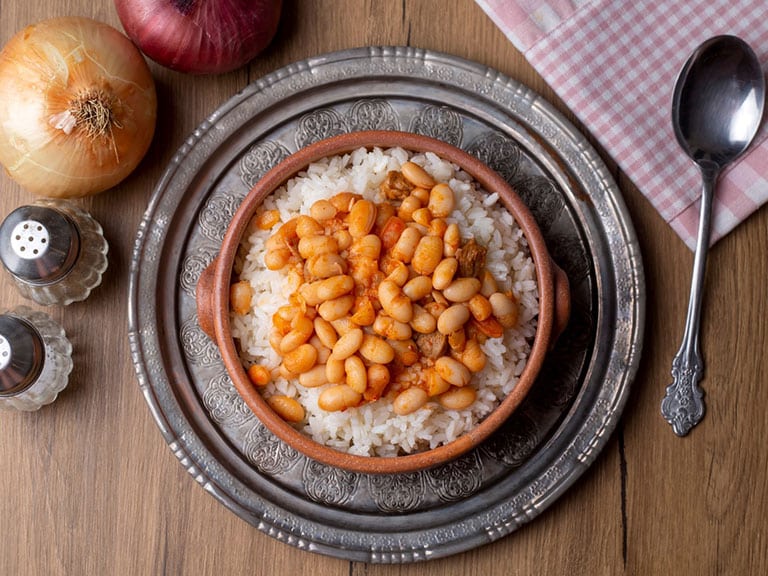
Grain, Rice, and Pilafs
Pilaf is a staple in the Turkish kitchen. Even then, there are still high standards for its preparation and are thus a demonstration of one’s cooking skills. The most common pilafs are rice pilaf and wheat pilaf. They are usually cooked plain but can also be flavored with nuts, fruits, and spices.
Preparing the rice pilaf is an art since the rice should roll out rather than stick together in mushy clumps. These versions are usually prepared as an accompaniment to meat, fish, or vegetable dishes.
Like the Sultan Pilavi, some less common pilafs are made with meat, fish, and vegetables. There are also substantial pilafs that can be served with a salad and eaten as a full meal. These include the Safranli Midyeli Pilav, Yufkali Pilav, and Ic Pilavi.
On the other hand, wheat pilafs are prepared using sliced tomatoes, whole onions, and green peppers sautéed in butter. They are pretty substantial and, thus, can be taken as a meal in itself. Generally, pilafs are served cold with plain yogurt in the summer months.
Away from the pilafs, rice is still a popular dish, especially when served with chickpeas.
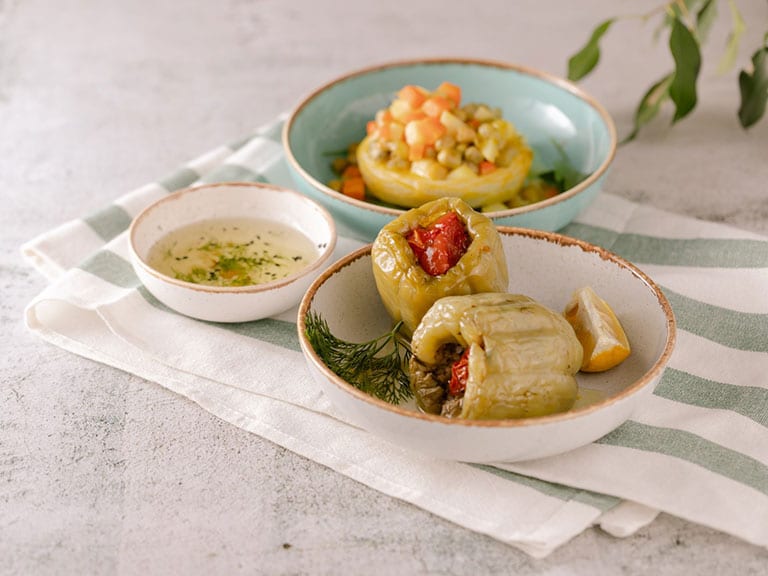
Turks consume many vegetables in their diet. These are usually cooked as standalone vegetarian dishes or mixed with meat, beans, or rice. Fortunately, the vegetables cultivated in Turkey are delicious and nutritious. So, a purely vegan meal can still be a satisfying meal even for the most passionate of meat lovers.
Simple vegetable dishes are prepared by slicing the main ingredient, such as eggplant or zucchini, and slowly cooking it in butter with tomatoes, onions, and green pepper. Other dishes are a little more complex and feature unique recipes that vary from home to home.
Generally, though, there is a whole class of vegetable dishes cooked in olive oil. These include most of the vegetable ingredients present in Turkey. They are usually prepared using olive oil and chopped pepper onions with tomato paste or pepper paste.
Vegetables fried in olive oil are a staple of Turkish cuisine, but the preparation may vary with the season. However, minced meat is rarely added to the pot as olive oil dishes don’t go very well with meat.
Note that live oil vegetable meals may be taken warm, at room temperature, or cold.

Dolma is another class of vegetable dishes in Turkey. Their name, a derivative of the Turkish verb “doldurmak” (to fill), suggests that these are stuffed vegetables. Any vegetable that can be stuffed or wrapped around the fill can be used in dolma. Therefore, there is a great variety of dolmas in Turkey, including those that use grapevine leaves, tomatoes, zucchini, cabbage, green pepper, and eggplants.
Most Dolmas are stuffed with a rice mix or a meat mix. Rice dolma is cooked in olive oil and consumed at room temperature, while meat mix can be taken as a main-course dish together with the yogurt.
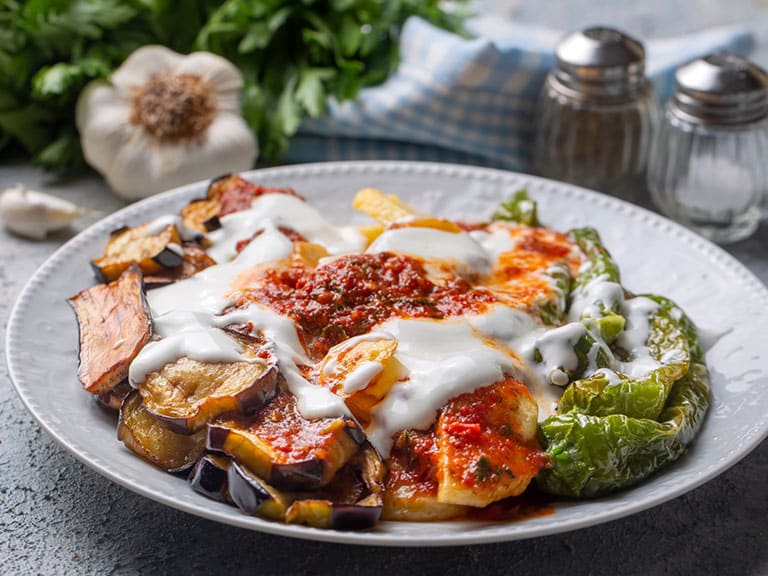
Popular vegetable ingredients/dishes in the Turkish menu include:
- Kizartma : Deep-fried vegetables like potatoes, zucchini, green peppers, and eggplant. They are usually served with a yogurt source.
- Mucver : Graded vegetables mixed with flour and egg before being deep-fried. The most common ingredient is zucchini.
- Karniyarik : Eggplant stuffed with chopped-up garlic, green peppers, onions, tomatoes, and ground beef and baked in an oven.
- Kabak oturtma : Zucchini roasted with minced beef or lamb.
- Kapuska : Thin white cabbage stiffed with onions and tomato sauce. It can also be cooked with minced lamb or beef.
- Turlu : Prepared by cooking zucchini, onions, potatoes, eggplant, and onion.
- Ispanak yemegi : Spinach, onions, and rice cooked with tomato paste and eaten with garlic yogurt.
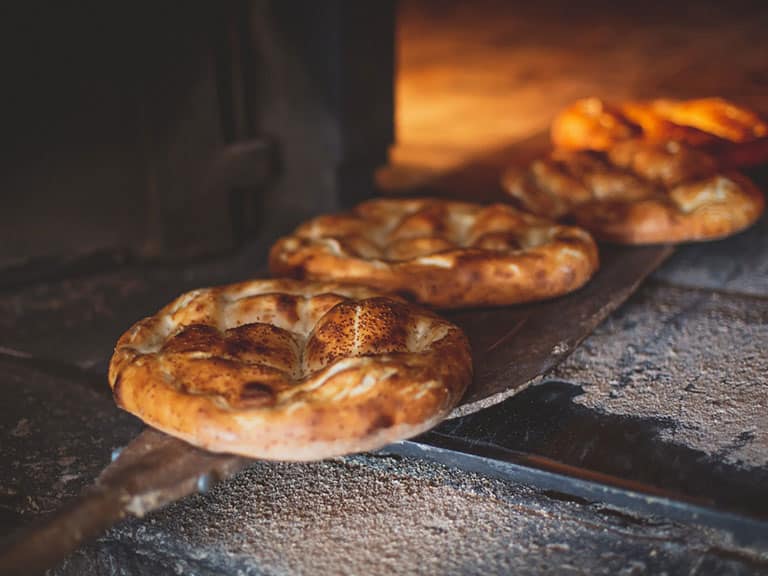
Bread in Turkish Cuisine
If there is one meal that’s secured a permanent spot in the hearts and plates of the Turkish population, that would be bread. It has remained an important part of regional meals for thousands of years.
In the Ottoman era, bakers believed that the Archangel Gabriel taught Adam how to bake after expulsion from Eden. This belief explains why bread was, and still is, enjoyed and respected by everyone, rich or poor, educated or uneducated, simple or sophisticated.
Today, any Turkish meal- breakfast, lunch, or dinner- without bread is incomplete. It is considered an indispensable component of every meal and is eaten as a snack or with soups, meat, and vegetables. As a result, Turkey has the highest bread consumption per person globally, with the average Turk consuming around 199.6 kg (440 lb) of bread annually. That’s almost three times their weight!
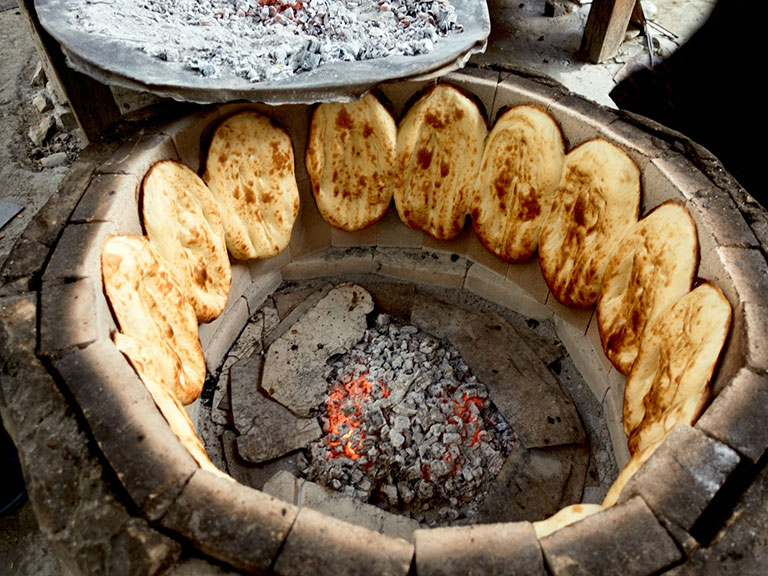
Some popular types of bread in Turkey include :
- Somun Ekmek : This bread has a soft golden yellow color and is one of the most consumed in Anatolia.
- Lavas : Lavas bread is commonly used to make wraps. It is prepared from water, flour, and salt.
- Pide : Also known as pita, pide bread is a type of flatbread.
- Misir Ekmegi : This bread is prepared from cornflour and is high in nutrients. It is common in the Eastern Black Sea Region.
- Yufka Ekmek : This wheat bread has been consumed in Anatolia for thousands of years. When fresh, it is the main ingredient in pancakes and borek. On the other hand, it can be made to last for up to 12 months if fried up.
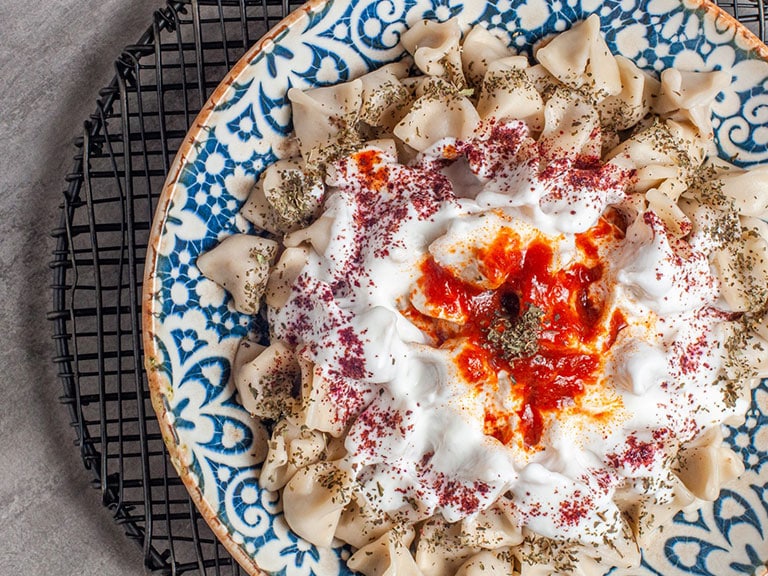
Manti is another wheat-based cuisine in Turkey. This dish consists of dough dumplings filled with a special meat mix. Its usually taken during the weekends as lunch and is served with a dash of melted butter and garlic yogurt as accompaniments.
Borek is another popular wheat-based meal. The dish consists of thin sheets of dough layered or folded into various shapes and filled with meat mixes or cheese. These are either baked or fried before being served.

There are more than 200 soup recipes in Turkey, making the Turkish soup menu the richest and most diverse globally. You can practically have soup for breakfast, lunch, and supper if you want to. Some common soups in the country include:
- Cold ayranasi soup , prepared from bulgur and chickpeas. It’s a tasty and nutritious soup commonly consumed in the summer and can be served chilled or lukewarm.
- Lentil soup (mercimek corbasi), prepared from red lentils, potatoes, and lamb/chicken stock and spiced with carrots, onions, and garlic.
- Chicken and vermicelli soup (Sehriyeli tavuklu corbasi), prepared from chicken, vermicelli, and butter.
- Tomato soup (Domates Corbasi), a roasted tomato soup that served as a prelude to most Turkish lunches and dinners. Ingredients include tomatoes, garlic, onion, olive oil, flour, water, fresh basil leaves, salt, and freshly ground black pepper.
Others include tripe soup (iskembe torbasi), tarhana soup (tarhana corbasi), and cheek and shank soup (kellepaca corbasi).
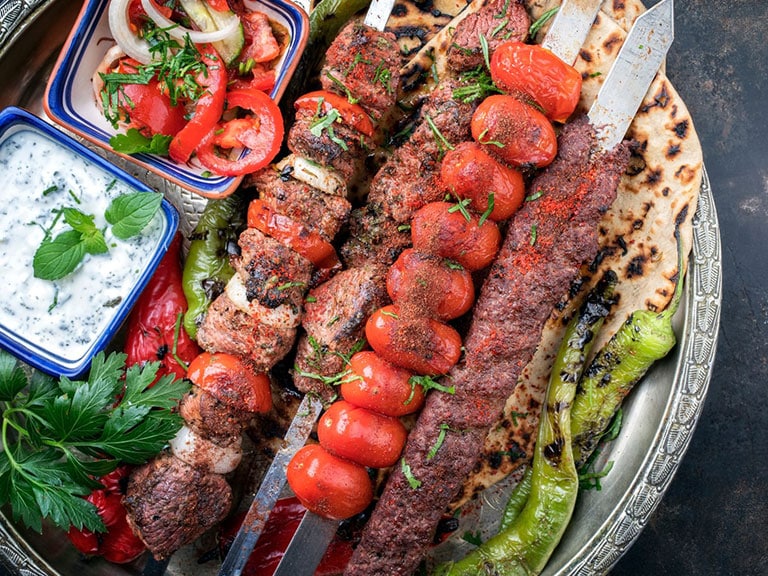
Those who love meat will find a home and a full stomach in Turkish cuisine. The country has some of the sweetest and most iconic meat dishes globally, like kofte and kebab. Meat comes from chicken, beef, and lamb and is prepared in various methods; roasted, grilled, fried, skewered, etc.
Kebabs are perhaps the biggest export of Turkish meat cuisine. In Turkey, it’s cooked both at home and in restaurants using spiced beef, lamb, or chicken. . Every region in Turkey has its unique kebab style.
The western world is more familiar with the doner and sis kebab varieties. Doner is prepared by stacking alternating layers of sliced lamb leg and ground meat on a large skewer. The vertical skewer is slowly rotated to roast the outer layer of the meat, from which thin slices will be shaved to be served. On the other hand, sis kebab is grilled cubes of skewered meat.
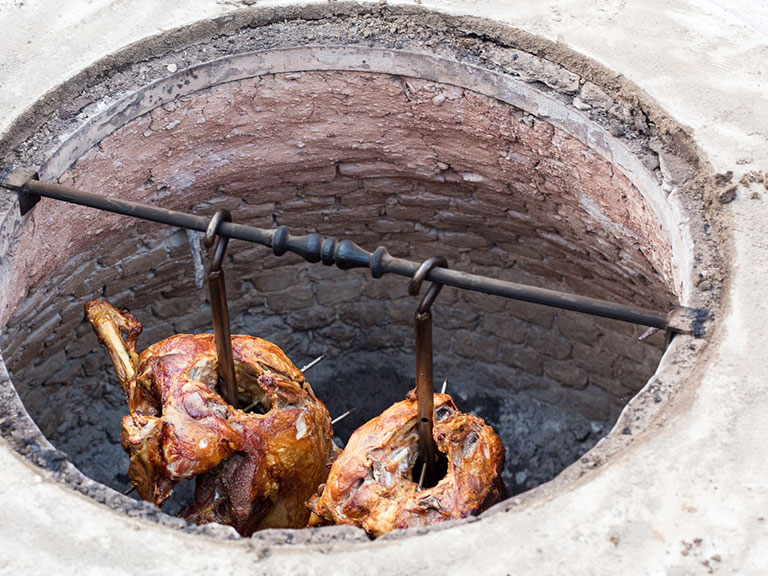
There are other kebab variants, which are cooked in pots drily without water. These are easier to prepare than grilled kebabs and, thus, commonly prepared at home.
Kofte can be prepared using ground beef or lamb, skewered meats, or grilled meats and grilled tomatoes, eggplant, and peppers. It is a common delicacy in family picnics.
Nomadic Turks inspired raw kofte. It is prepared by kneading raw double ground meat with thing bulgur and hot spices for several hours.
Izgara refers to the general way used to prepare meat dishes in Turkish meat restaurants. These include kofte, shish, or lamb chops. In Turkey, you’ll find two types of restaurants; those specializing in only grilled meats (meat restaurants) and those selling meat alongside other local dishes.

Fish & Seafood
Bathed by four seas, the Mediterranean, Aegean, Marmara, and the Black Sea, Turkey is rich in fish and seafood. However, to get a good taste of these, you must visit the coastal areas because fish and seafood in the interior are pretty expensive.
Fish in Turkey is prepared by frying, grilling, or cooking slowly by the poaching (bugulama) method. The most popular fish in Turkish cuisine is the anchovies, which are usually served cornflour-coated. They can also be prepared in a variety of ways, but their availability depends on the season.
Typical fish dishes include mackerel, sardines, bonito, farmed sea bass, and farmed sea bream. Seafood, on the other hand, is mainly served in restaurants. These include clams, oysters, crabs, octopuses, bugs, lobsters, prawns, calamari, scallops, and squid.
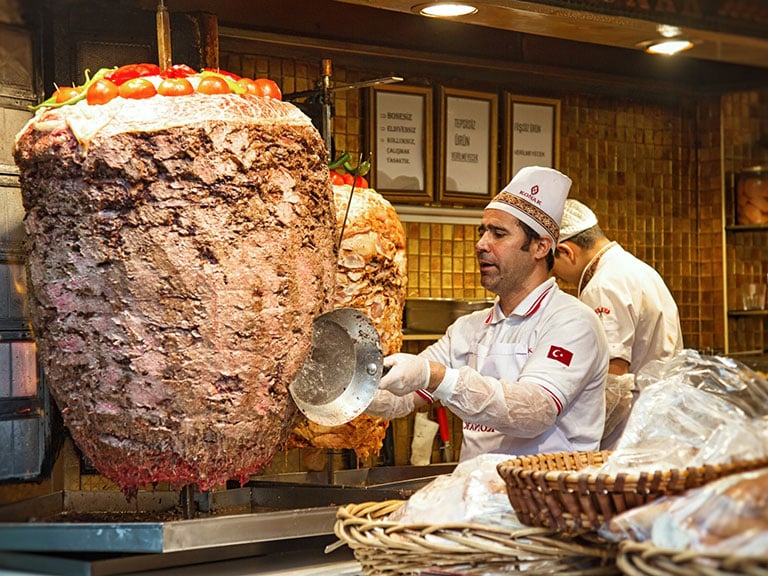
Turkish Street Food
Turkey is home to some of the best street foods in the world. These are quickly prepared, delicious, and thus, a firm favorite among locals and tourists. Some of the most famous street foods in the country include Doner, Pide, Gozleme, Lahmacun, Simit, kofte ekmek, cig kofte, Kokorec, and Kumpir.
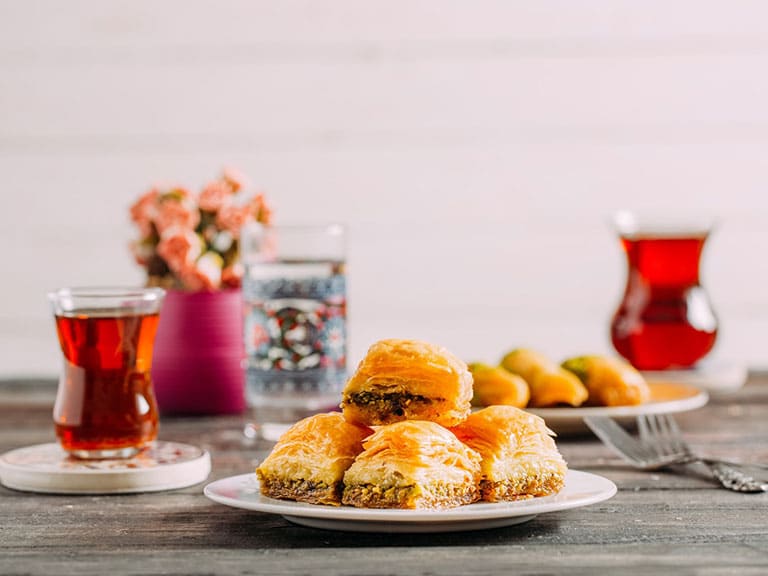
Turkish Beverages
When it comes to beverages, Turks love tea above all else. The average citizen drinks multiple cups of tea a day, and it’s offered to guests in all homes and businesses in the country. However, Turks usually brew their tea in a teapot and serve it in glass cups.
Coffee is quite common but nowhere near as famous as tea. Traditional Turkish coffee is prepared in a small copper pot (cezve in Turkish) and served in small porcelain cups. There is a common belief that the coffee ground left at the bottom of the cup after drinking can read the drinker’s future.
Alcoholic drinks, on the other hand, are pretty appreciated, despite the country being considered to be predominantly Muslim. Raki is a famous traditional Turkish alcoholic drink that contains a high alcohol percentage and thus, should be consumed slowly. Here is a detailed read on how to drink Raki aka the lion’s milk.
Other local drinks include Ayran, Sahlep, Salgam (turnip juice), and Boza.
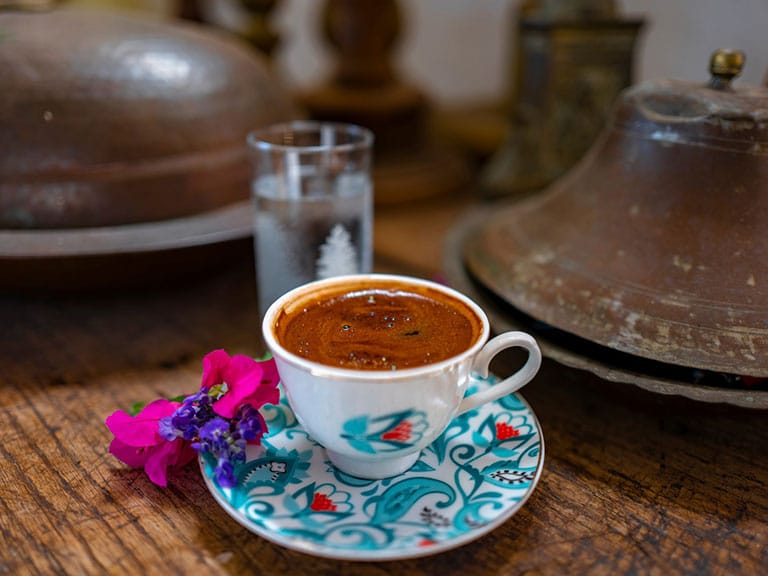
A rich selection of dishes at great places
There are lots of great restaurants in Turkey serving delicious local meals regardless of the price. So, restaurant hopping during your Turkish experience is the best way to sample our rich selection of dishes. Thus, learning the proper terminology makes it easier to navigate through the Turkish cuisine scene. Here are a few valuable words:
- Afiyet Olsun mean enjoy your meal.
- Elinize saglik , which means health to your hands. Its interpreted as appreciating the chef/cook.
- Serefe , meaning cheers.
You are using an outdated browser. Please upgrade your browser or activate Google Chrome Frame to improve your experience.
EXPLORE ISTANBUL
- Roman & Byzantine Istanbul
- Ottoman Istanbul
- 2 Continents, 1 City
- UNESCO World Heritage Sites
- Waterfront Mansions of Bosphorus
- Convention & Exhibition Venues
- Academic Istanbul
- Istanbul Books
- Istanbul in Movies
- Istanbul in Songs
THINGS TO DO & SEE
- 1 day in Istanbul
- 3 days in Istanbul
- 1 week in Istanbul
- Special Interest Tours
- Istanbul with Kids
- Istanbul by Night
- Art Venues & Cultural Centers
- Ottoman Mosques
- Turkish Baths
- Countryside
- Old Bazaars
- Popular Streets & Areas
- Istanbul Shopping Fest
- Tax-Free Shopping
FOOD & DRINK
- Turkish Food Culture
- Taste by Neighbourhood
- Speciality Food
- Historical Restaurants
- Street Food
- Turkish Food Recipes
- Exhibitions
- The İstanbul Film Festival
- The İstanbul Jazz Festival
- The İstanbul Music Festival
- The İstanbul Theater Festival
- The Istanbul Bienali
- Congress & Fairs
- Bosphorus Cross-Continental
- Eurasia Marathon
PRACTICAL INFO
- Getting Around
- Getting There
- Practical info
- Emergency and Official Numbers
- Turkish Language
- Istanbul Visitors Guide
- One Istanbul Mobile App
Explore Istanbul
Things to Do &See
Food & Drink
Practical Info
Turkish Food Culture and Cuisine
Turkish cuisine is one of the most appetizing and rich cuisines of the world, and Turkish people are known to be quite passionate about food. Diversity and the full flavor makes the Turkish cuisine worldwide famous which draws influences from its rich history and each region in the country today praises its own specialities. The richness of Turkish cuisine is based on several factors: Variety of products cultivated on the lands of Asia and Anatolia, numerous cultural interactions in history, the palace kitchens of Seljuk and Ottoman empires and geographical conditions that shaped the character of Turkish culinary culture.
The Turkish art of cooking has a long and deep-rooted past and its cuisine varies across the country. The culinary culture of Istanbul, Bursa, Izmir region inherits many elements of vast Ottoman cuisine. The Marmara, Aegean and Mediterranean cuisines are rich in vegetables, fresh herbs and fish. Olive oil is most widely used.
Black Sea region’s cuisine uses fish extensively, especially the Black Sea anchovy (hamsi). It’s influenced by Balkan and Slavic cuisine and includes maize dishes.
The cuisine of the southeast—Urfa, Gaziantep and Adana—is famous for its kebabs and dough-based desserts such as baklava, kadayıf and künefe.
Central Anatolia has it’s own specialties, such as keşkek, mantı and gözleme.
İstanbul, however, is the city where almost all kind of cuisines can be tasted, due to its multicultural structure of a metropolis.
Particularly Beyoğlu, Sultanahmet and Kadıköy are the districts for heavenly food. Aside from Western food presented amply as an alternative, there are numerous eateries specialized in their fields for a very long time such as comfort food restaurants, esnaf lokantası, i.e. tradesman’s restaurants, and sea-food restaurants.
Key ingredients being primarily meat, vegetable and legumes, Turkish meals are generally soupy, consisting of some kind of stew or stock. Hence, bread consumption tends to be way too much among Turks. Turkish kebabs, döner kebab, Turkish ravioli and some eggplant dishes are the trademarks of Turkish cookery. There are over 200 dishes made from eggplant.
Breakfast is crucial part of meal for Turks. Although it varies regionally, Turkish breakfast is the healthiest, rich in nutrients and the most delicious. A lot of green, tomatoes (preferrably in summer), cucumber and pepper are eaten during breakfast along with feta cheese, egg, olives, honey and cream of milk. Multi-grain village bread, corn bread and simit, Turkish sesame donut or Turkish bagel are the preferred breakfast components. Especially Sunday breakfasts turn into a convivial social gatherings with added ingredients and last longer than week-in breakfast.
Turkish kebabs are the main meat dish with a great variety of cooking methods. Under the names of Döner Kebab, Adana Kebab, Bursa Kebab, Ali Nazik and İskender. Kebabs have various cooking methods depending on the ingredients and the way of cooking, generally served with rice, bulgur rice and greens.
The origin of döner kebab goes back to Central Asia where it was known as Lüle Kebab. Its name was also mentioned in Anatolian travel memoirs of the 18th century.
Another meat specialty is köfte, meatballs, its name derived from a Persian word, kufte. It was adopted into Turkish cuisine in the 13th century. There are many versions of meatballs, the technique of cooking differ by the region. A large variety of meatballs, more than 200 kinds, are known in Turkey.
Lahmacun, a thin flat bread covered with a layer of spiced minced meat, is another popular takeaway food, generally accompanied with ayran, a buttermilk drink.
Bean soup and rice, reputably, are the indispensable meal duo among other Turkish foods. Mostly served in soup form on top of rice, rich in carbs and protein, this is the popular menu in most restaurants for Turkish people.
The cuisines of Aegean and Mediterranean are mostly olive oil based cold dishes as main course or starters. Especially dolma (stuffed bell peppers, zucchini etc.), barbunya pilaki (red bean salad with olive oil), deniz börülcesi (seasonal samphire salad) are the ‘must taste’ specialties.
Makarna (macaroni) is almost similar to pasta of Italian cuisine. Turkish homemade pasta is called erişte, prepared with walnuts, Feta cheese or various sauces.
There are more than 300 kinds of soup in the Turkish cuisine. The basic ingredient of soup is yoghurt. A Turkish contribution to the world, sweet or sour yoghurt became prominent ingredient in soups. Seafood and entrails are often used in Turkish soups. İşkembe çorbası (tripe soup) is the best remedy for alcohol hangover. Soups made with slender rockfish, haddock or any other fish are all categorized as “fish soup.”
Turkish pastries are mostly milk-based or dough-based desserts. Sweet pastries, mainly baklava, are soaked in syrup. Baklava, sütlü nuriye, ekmek kadayıfı are among the most popular desserts. Fırında Sütlaç, keşkül and profiterole are the most favorite Turkish milk-based desserts. Künefe, made from shredded wheat with a layer of melted mozzarella-like cheese and syrup, can be easily found in Istanbul even though it is a Southern specialty pastry.
Tea is a sine qua non drink for any Turk. Tea is served during breakfast and offered almost all day long. Especially, if you are invited to a store or an office, tea is ordered right away. Turkish Coffee after meals is also part of a Turk’s daily habits.
Ayran is the most common cold beverage made from yoghurt mixed with water and salt. Sometimes a piece of fresh mint is added. It is an ideal drink during hot summer days, bottled, packed or home made from vendors.
In Turkey, people love eating and relishing food. Most meals at a typical Turkish home is like a feast. If you are a guest for breakfast, lunch or dinner, the variety of food and sincere hospitality of the people might seem quite surprising at first. Inviting guests for a meal is part of culture and tradition of a Turkish family and ‘taking good care’ of the guest is the crucial side of it.
To get an overview of the Turkish food varieties;
Çorbalar: Soups, generally served before the main dish, especially in winter season.
Mezeler: Mezes, Mostly cold served, olive oil based appetizers.
Dolma & Sarma: Stuffed vegetables or rolled leaves with rice or meat stuffings.
Salatalar: Salads of various kinds from different regions.
Zeytinyağlılar: Olive oil vegetable dishes which are usually served cold.
Pilavlar: Rice or bulgur pilaf variations.
Etliler: Meat dishes mostly cooked with vegetables.
Börekler: Stuffed or rolled pastries with meat, cheese or vegetable fillings.
Pideler: Kind of flat bread with cheese, vegetables or meat.
Kebaplar: Kebabs range from kebabs cooked in a pot to skewered kebabs.
Balık ve Deniz Ürünleri : Fish and other seafood such as shrimps and squids.
Tatlılar: Desserts that range from milk-based tastes to baklava like pastries.
- CBRT EXCHANGE RATES

- Virginia Beach
- History & facts
- Famous people
- Famous landmarks
- AI interviews
- Science & Nature
- Tech & Business
Discover something new everyday
- Famous places
Food & Drinks
- Tech & Business
A Brief Guide to Turkish Regional Cuisine
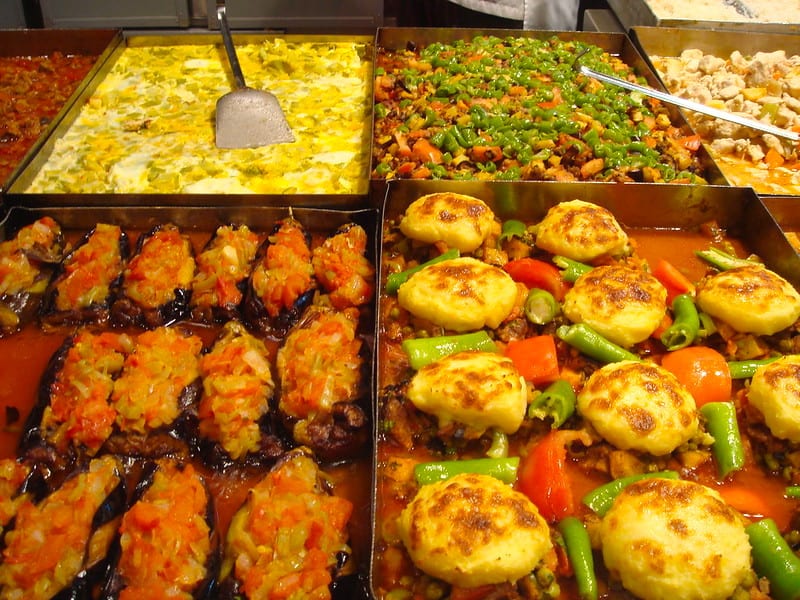
Image sourced from Flickr
Read Next →

Top 14 Food Markets in Lisbon
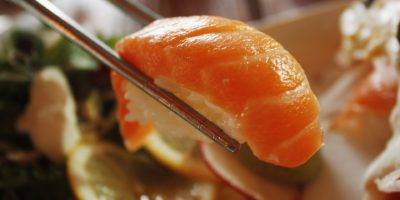
15 Best Sushi Trains Of London
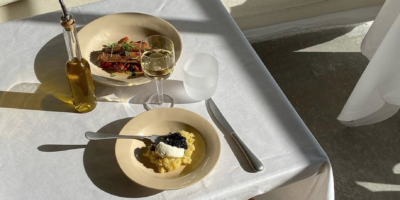
20 Best Restaurants in Paris in 2023
Traditional cuisine.
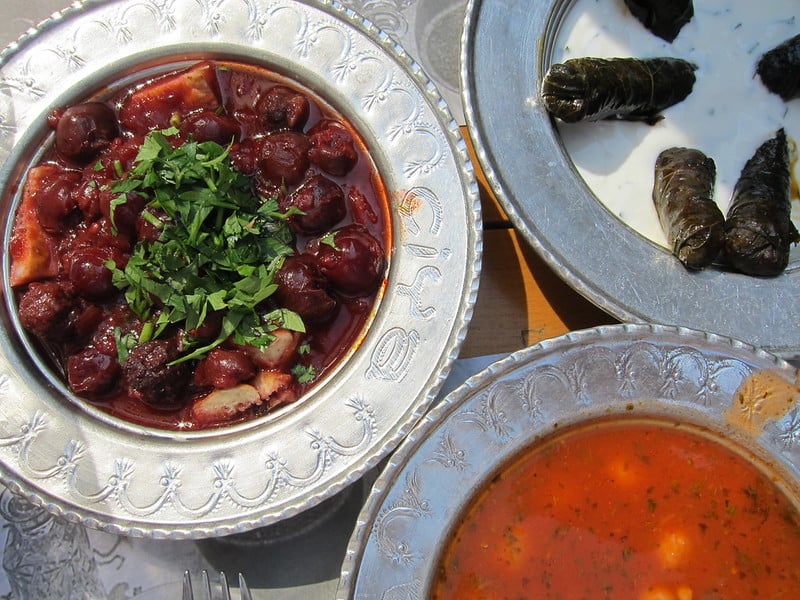
Çiya Sofrası in Istanbul, Image sourced from Flickr

Ethnic & Regional Influences
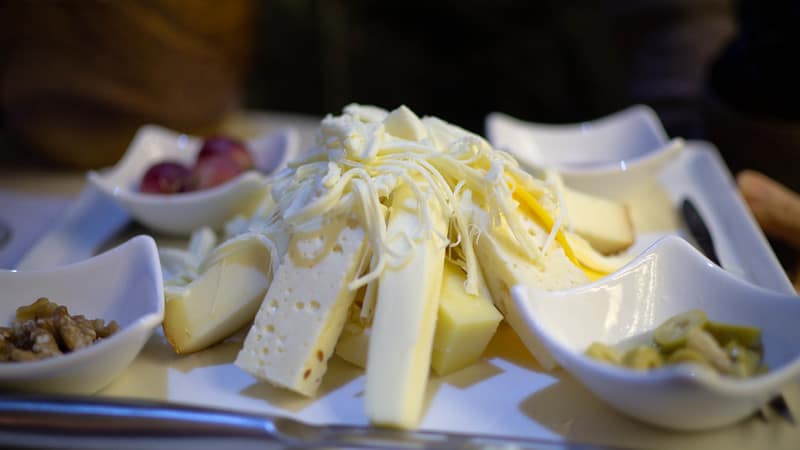
Image sourced from Tripadvisor

Aegean Cuisine

Typical Turkish ingredients in a food market in Istanbul, image sourced from Flickr
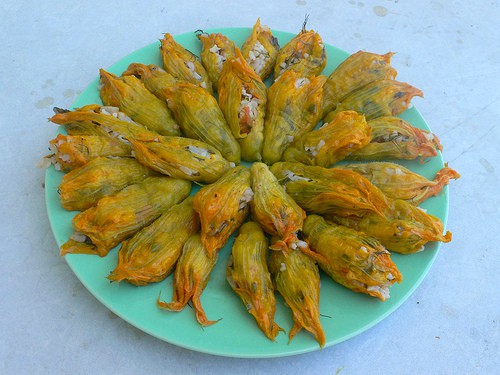
Mediterranean Cuisine

Black Sea Cuisine

Central Anatolian Cuisine

Image sourced from Wikimedia Commons
Eastern & Southeast Anatolian Cuisine
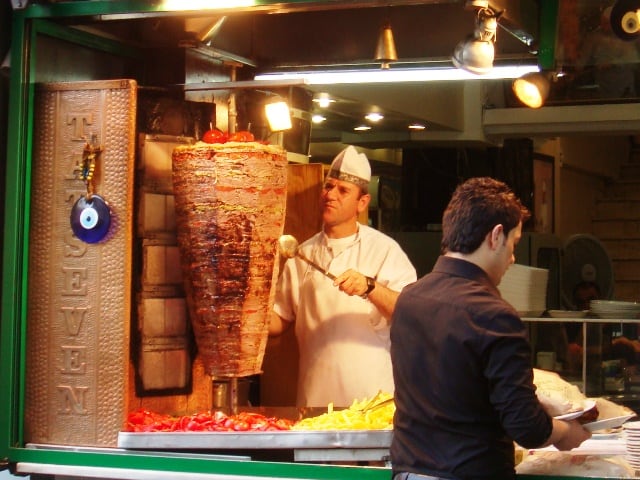
Yaprak Sarma/Dolma, image sourced from Wikimedia Commons
Planning a trip to Paris ? Get ready !
These are Amazon’s best-selling travel products that you may need for coming to Paris.
- The best travel book : Rick Steves – Paris 2023 – Learn more here
- Fodor’s Paris 2024 – Learn more here
Travel Gear
- Venture Pal Lightweight Backpack – Learn more here
- Samsonite Winfield 2 28″ Luggage – Learn more here
- Swig Savvy’s Stainless Steel Insulated Water Bottle – Learn more here
Check Amazon’s best-seller list for the most popular travel accessories. We sometimes read this list just to find out what new travel products people are buying.
Discover Walks contributors speak from all corners of the world - from Prague to Bangkok, Barcelona to Nairobi. We may all come from different walks of life but we have one common passion - learning through travel.
Whether you want to learn the history of a city, or you simply need a recommendation for your next meal, Discover Walks Team offers an ever-growing travel encyclopaedia.
For local insights and insider’s travel tips that you won’t find anywhere else, search any keywords in the top right-hand toolbar on this page. Happy travels!
Hello & Welcome
Popular articles.

Top 20 Streets to See in Paris

Paris in two days

Top 15 Things to do Around the Eiffel Tower

The Best Way to Visit Paris Museums

Top 15 Fashion Stores in Le Marais
Visit europe with discover walks.
- Paris walking tours
- Montmartre walking tour
- Lisbon walking tours
- Prague walking tours
- Barcelona walking tours
- Private tours in Europe
- Privacy policy
© 2024 Charing Cross Corporation

- You haven't added any favorites yet.

Food culture in Turkey
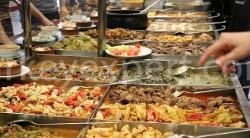
Turkey’s geographical position and the long history of its lands resulted in it to be a meeting point of various food cultures, making food tasting in Turkey a unique and unforgettable experience. This is why a question like “What is a typical Turkish food?” is difficult to answer. Let’s start with an overview of different types of cuisines that are in Turkey.
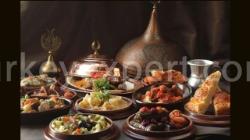
Istanbul: Also known as the Ottoman cuisine or the Palace cuisine, this cuisine is known as one of the richest in the world. It has been influenced mainly by the Balkan, the Anatolian, the Syrian and the Caucasian cuisines. Unfortunately, most of the recipes didn’t survive, as they were kept as secrets by the cooks. So what we know today is only a small selection. It is known that especially meat and desserts were dominating. Starters were not typical, and tomatoes were also introduced much later so that the Ottoman cuisine doesn’t use tomatoes or tomato marks. Some impressive food that still can be found in restaurants are:
Yumurta-yı hümayun (eggs with onions and pastirma – typical Turkish bacon), Mahmudiye (chicken casserole flavored with almond, apricot, raisin, honey, cinnamon, and lemon juice), Mutancana (lamb stew with apricot, shallots, red grapes, honey, and almonds), Kavun Dolması (melon stuffed with lamb, rice, spices, almonds, pistachios, and currants), Düğün çorbası (made of beef chuck, herbs, and yogurt), Acem pilavı (rice with beef, almonds and pistachios), Akike (mutton casserole with tail fat, yogurt, cinnamon, spices, and mastic), Süt Kebabı (lamb and mutton in milk), Beyrani (long-cooked lamb meat with spices), Mıhlama (long-cooked minced meat with eggs and herbs), Kırma Tavuk Kebabı (special herbed chicken), Fodula (stuffed bread with beef)
Desserts were always essential in Ottoman cuisine. It is known that at a festive event in the 16 th Century, there had been 53 sorts of sweets for the guests. Still popular desserts are:
Keşkül-ü fukara (a milk pudding with almonds), Revani (semolina cake with orange flower water or rose water), Zerde (pudding with saffron and rose water), Tavukgöğsü (chicken breast pudding), Sütlaç (rice pudding), Kazandibi (burned milk pudding), Saray helvası (dry, slightly sweet halva with pistachios), Kadayıf (kadayif dough with syrup and pistachios), Vezir parmağı (semolina, milk, beaten, caster sugar, almond essence, butter, rose water, water, and lemon juice), Hanım Göbeği (fried semolina balls with lemon syrup)
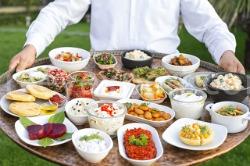
Izmir and the Aegean Coast: The Izmir and the coastal cuisine have a lot common with Greek cuisine. Most names can be found in both languages, like dolmadakia (GR) – dolma (TR), keftedes (GR) – Kofte (TR), moussaka (GR) – Musakka (TR), etc., and they are very similar. Typical for the Aegean cuisine is to start with a variety of cold dishes, called Meze. These are small dishes with yogurt, fish, eggplant, cauliflower, and much more. In a typical restaurant, you wouldn’t choose your meze from a menu. Either the waiter would bring a big tray with a variety of mezes to your table, which you can directly pick, or you would go to the glass fridge with the waiter and tell him there. Vegetables are also essential in Aegean cuisine. There are many recipes with vegetables cooked with olive oil that can be consumed cold or warm. Fish is another essential food for the Aegean. Especially grilled fish are common. It is typical to choose your fish, not from the card, but going to the glass fridge with the waiter. He would weigh the fish there, tell you the price, and ask you how they should prepare it.
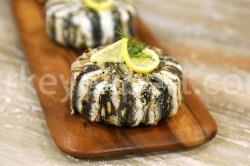
Black Sea area: Although the Black Sea cuisine does not only consist of fish, anchovy is typical for this area. You should try the Hamsili pilav (anchovy rice), the Hamsili ekmek (anchovy bread), the Hamsi tava (anchovy from the pan), Hamsi bugulama (anchovy stew), Hamsi koftesi (kofte, but with anchovy), and the Hamsi tatlisi (anchovy dessert with anchovy, dough, oranges, pistachio, and syrup).
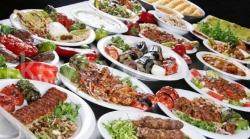
Coming to the soul of the Turkish cuisine: Gaziantep . Gaziantep is located in the South-East of Turkey and can be reached by a 1h 45m flight from Istanbul. It has its unique cuisine influenced by the years of history of the area and is a favorite location by gourmets. Many dishes not to miss in Turkish restaurants meanwhile originate from here. Due to its gastronomical importance, Gaziantep has been added to the UNESCO's Creative Cities Network in 2004.
Especially in Istanbul and in Izmir, you will find many fusion restaurants that are combining different food cultures, making your experience even more intense.
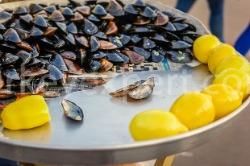
Street food in Turkey
Besides these varied cuisines, there is a excellent Street food culture in TurkeyDoner – Doner is meanwhile everywhere and is known by everyone around the world. In Turkey, you can easily find a “donerci” when you’re hungry, without searching too long.
Kumru – This is a typical street food from Izmir. It is a grilled sandwich with spicy sausages, sausages, pickles, tomatoes, and grilled cheese.
Boyoz – Another typical Izmir street food. Boyoz is a pastry with tahini and is very popular.
Kumpir – These are baked potatoes with butter, cheese, and a variety of toppings
Balik-Ekmek – A typical street food from Istanbul. Balik-ekmek means fish and bread, and this is also what it is. You can find many small tents on the coast or fisher boats, selling grilled or fried fish sandwiches. Usually, there is a garlic sauce with it.
Simit – This is a circular bread with sesame seeds. The simit in Istanbul tastes slightly different than the simit in Izmir. In Izmir, they call simit also gevrek.
Midye dolma – These are rice-stuffed Mussels and can be found in restaurants but also on streets in trays. You would start eating, and the seller would count the shells at the end to tell you the price. Don’t leave Turkey without having tried midye dolma.

You may also contact us on WhatsApp Thank you, Cem Sezen Turkey Expert ltd.

Traditional Turkish Food
Sep 11, 2014
1.61k likes | 3.9k Views
Traditional Turkish Food. Culinary Culture Turkish Cuisine is very rich there are a lot of factors for this: *The variety of products in Asia and Anatolia. *Interaction with numerous different cultures over a long historical process.
Share Presentation
- turkish food
- turkish soup
- red lentil soup
- stuffed chicken court style

Presentation Transcript
TraditionalTurkishFood
Culinary Culture Turkish Cuisine is very rich there are a lot of factors for this: *The variety of products in Asia and Anatolia. *Interaction with numerous different cultures over a long historical process. *The new tastes developed in the palace kitchens of the Seljuk and Ottoman Empires.
Sauced Dishes Prepared by: -Cereals -Vegatables -Meat Soups Dishes made from wild vegetables Turkish Couisine Consists Of Health Food: -Pekmez - Yoghurt Cold Dishes Cooked With: -Olive Oil -Pastry Dishes
Food and Beverages Eaten at Meals Until late Ottoman times there were generally two meals: * in late morning * dinner Today the main meals are *breakfast, lunch and dinner. Breakfast Lunch Dinner • Cheese • Olives • Bread • Eggs • Jam • Honey • Tomato • Sausage • Cucumber • Pepper • Tea • Soup • Stews • Salad • Dessert • Soup • Lamb & Beef • - Kebab • Meatball • Olive Oil Dish • Pilaf • Salad • Dessert
Food and Beverages Peculiar to Special Days *Some foods and beverages, peculiar to special days and which have a symbolic meaning although they take much more time to prepare, are part of Turkish cuisine. *Food peculiar to such special days is prepared communally, known as called “imece.” At engagement, wedding and circumcision ceremonies, at Ramadan with its deep religious meaning and other religious and seasonal festivals, food is prepared with more attention, more special assortments are served, and tables are specially decorated. Birth, death and wedding meals can be cited as examples.
Friends, relatives and neighbours visit women who have given birth, and bring soup, milk, yogurt and eggs. During “loğusa” (women recovering from childbirth) time, guests are served loğusa sherbet (a non-alcoholic drink made with spices and fruit juices), biscuits, milk and desserts. It is believed that a woman who has given birth must have milk, onion, sherbet, wheat and lentils and must not eat garbanzo or beans nor drink cold water if she wants to have sufficient milk to feed her child. Ramadan Loğusa Time
Breakfast Spices Pekmez Loğusa Syrup
At weddings, rice, vegetables, beans or garbanzo and fruit juices are served with a main course of meat. In nearly every region, vermicelli and yogurt soups, keskek (pounded wheat with meat), rice and meat are served at wedding meals. Desserts are usually helva, zerde (a gelatinous dessert colored with saffron), rice pudding and baklava. Keşkek Zerde
In addition to these, some other foods are served in funerals. In a funeral house, food is not cooked for 3-7 days (depending on the region), and neighbors bring food instead. The tradition of cooking flour helva when the body is taken from the house and serving food on the 3rd, 7th, 40th and 52nd days after death still continues.
The Turkish cuisine which is a heritage of the Ottoman culture has both affected and has been affected by the Balkan and Middle East cuisines. The Turkish cuisine has got a lot of different food.
Soups (Çorbalar) A Turkish meal usually starts with a thin soup. Soups are usually named after their main ingredient, the most common types being lentil, yoghurt, or wheat (often mashed) called and tarhana soup.
Tarhana Soup (Tarhana Çorbası) It is a famous Turkish soup. You can have it at every meal, including breakfast. It is made of yoghurt, mint, flour, red pepper, green pepper, tomatoes. If you want, you can put onion on it.
Yoghurt Soup (Yoğurt Çorbası) It is made of rice, yoghurt, chickpea, parsley, and mint. It tastes delicious. It is a kind of Turkish soup.You can find, a lot of different kinds of yoghurt soup.
Anchovy Soup Black Cabbage Soup Chicken Soup with Vermicelli Okra Soup
Red Lentil Soup Soup With Home-Made Noodles Spinach Soup Tandir Soup
Toyga Soup Tripe Soup Vegetable Soup Wedding Soup
Kebabs & Beefs (Kebap & Etler) Most of the meat dishes in Turkish cuisine kebabs, meatballs and juicy meat dishes are in the class.
Döner (Döner) Döner is a kind of Turkish kebab. You can fry it by putting the fat, meat and spices on a stick. Döner meat can be eaten in a sandwich (pita or bread) but also with rice. Döner is an eating out Turkish food. You can have it in fast food restaurants.
Cağ Kebab (Cağ Kebap) History: Ottoman Travel books of the 18th century, cite a kebab cooked on wood fire consisting of horizontal stack of meat, known as "Cağ Kebab”. Cağ kebab, is a rotating kind of kebab,originating in Erzurum, Turkey. Cağ Kebab is probably by the way is the ancestor of the Döner as we know it.
Skewer Kebab (Şiş Kebap) Şiş Kebap (şiş, pronounced "shish", means "skewer" in English) consists of marinated chicken or lamb meat. Meat on skewers are grilled over an open fire.
Çiğ Köfte It is a kind of Turkish kebab which is kneaded and mixed meat, tomatoe paste, parsley and spices. History: According to lore, çiğ köfte was invented in Urfa at the time of prophet Abraham. When Nimrod collected all firewood in Urfa in order to build a monumental execution pyre, the wife of a hunter had to prepare venison raw. She mixed the meat with bulgur, herbs and spices and crushed the mixture with stone implements until it was palatable.
Chicken And Mixed Vegetable Casserole Chicken Stew Chicken with Walnut Sauce Stuffed Chicken-Court Style
Pilafs Wheat Pilaf with Chickpeas Pilaf With Lamb Meat
Vegetable Dishes (Sebze Yemekleri) Turkish cuisine in a great variety of vegetable dishes is a kitchen with dolma and sarma, meat and vegetable dishes, fried vegetables and countless varieties of olive oil are available.
Stuffed Food (Dolma) Dolma has a special place in Turkish cuisine. It can be eaten either as a meze or a main dish. It can be cooked either as a vegetable dish or meat dish. If a meat mixture is put in, it is usually served hot with yoghurt and spices such as oregano and red pepper powder with oil.
Grape Leaf Rolls with Olive Oil (Zeytinyağlı Yaprak Dolması) Zeytinyağlı dolma (dolma with oliveoil) is the dolma made with vineleaves cooked with oliveoil and stuffed with a rice-spicemixture. Such a typedoes not contain meat, is served cold and alsoreferredto as sarma, which means “wrapping” in Turkish.
Squash Blossoms Stuffed Cabbage Stuffed Celery Roots Stuffed Eggplant
Stuffed Green Peppers Stuffed Squash Stuffed Tomatoes Wrapped Vine Leaves
Alinazik Cut - Belly Eggplants Fresh Beans with Olive oil Stuffed Squash With Olive Oil
Pastries (Hamur İşleri) Lahmacun, Su Böreği, Mantı and pies are among the most popular of Turkish cuisine.
Lahmacun It is a famous Turkish food too. It is made by putting meat, pepper, parsley and spices on a circle dough.
Su Böreği It is also a very famous Turkish food. It is made of dough, which is put in boiled water for a few seconds, egg, cheese or meat. Old women usually do it excellently.
Mantı Mantı is a kind of Turkish meal which is boiled in water. You can put small pieces of meat in dough. You can serve it by putting (dropping) yoghurt, tomato paste, and butter. Mantı tastes delicious.
Mezes & Salads (Mezeler & Salatalar) Meze is a selection of food served as the appetizer course with or without drinks. Some of them can be served as a main course as well.
Shepherd's Salad (Çoban Salatası) It is a combination of finely chopped tomatoes, cucumbers, onions, green peppers and flat-leaf parsley.The dressing consists of a simple mix of lemon juice, extra virgin olive oil and salt. It is one of the most popular salads in Turkey. It is considered by many as light, refreshing and easy to make and is especially popular during summer.
Piyaz (Piyaz) Piyaz is a kind of Turkish salad or meze that is made from any kind of dry beans with hard-boiled egg and vegetables. Common additional ingredients include onion, parsley and sumac. In Antalya province of Turkey it is prepared differently from other regions with other ingredients like sesame oil. During the Ottoman period, piyaz was also made from artichoke, pea, chickpea, broad bean and potato, which was introduced to Turkey in the last quarter of the 19th century.
Cacık (Cacık) Cacık is a Turkish dish of seasoned, diluted yoghurt, eaten throughout the former Ottoman world.Cacık is made of yogurt, salt, olive oil, crushed garlic, chopped cucumber, dill, mint, and lime juice, diluted with water to a low consistency, and garnished with sumac. Among these ingredients, olive oil, lime juice, and sumac are optional. Dill and mint (fresh or dried) may be used alternately. Cacık, when consumed as a meze, is prepared without water but follows the same recipe.
Bulgur Salad (Kısır) Cabbage-Carrot Salad Eggplant Salad Green Lentil Salad
Potato Salad Purslane Salad Wheat Salad with Walnuts Tomato Salad
Drinks (İçecekler) At breakfast and all day long Turkish people drink black tea. Tea is made with two teapots in Turkey. Turkish coffee, Turkish tea and Ayran are the most popular drinks in Turkey.
Turkish Coffee (Türk Kahvesi) Turkish coffee is a world-known coffee which can be served sweet or bitter. Turkish coffee, it is different in aroma and taste from the classical Turkish coffee. It is the first ( only ) coffee which is served with coffee ground.
Turkish Tea (Türk Çayı) Turkish tea is a type of tea that is popular mainly in the Turkish-speaking countries. In Turkey, Turkish tea tends to be more popular than Turkish coffee among the younger generation.
Ayran (Ayran) Ayran (salty yoghurt drink) is the most common cold beverage, which may accompany almost all dishes in Turkey. Ayran is a mixture of yoghurt, water, and sometimes salt. It is thought to have originated as a way of preserving yogurt by adding salt.
Rose Syrup Boza Salep Lemonade
Desserts (Tatlılar) One of the world-renowned desserts of Turkish cuisine is baklava. Turkish cuisine has a range of baklava-like desserts which includes Sütlaç, Turkish Delight.
Turkish Baklava (Baklava) It is made of walnuts, Antep nuts, almond or hazelnut. It tastes delicious. Baklava is prepared on large trays and cut into a variety of shapes.
Sütlaç Sütlaç is the most famous milky dessert in Turkish cuisine. It is made of, milk, rice and sugar. You can serve it putting cinnamon on it.
Turkish Delight (Lokum) Turkish delight is one of the most famous desserts in the world. It is made of water, sugar, starch and salts of lemon. Turkish people usually serve it to their visitors.
Asure Chicken Breast Pudding Gullac Halva
Kemal Pasha Dessert Pumpkin Dessert Semolina Halva Stuffed Figs
- More by User

Chinese traditional food
818 views • 10 slides

Russian traditional food
Russian cuisine. The Russian cuisine is a significant part of the Russian culture. Food is a very important part a person's life; this is especially true for any Russian person. It has been a longstanding Russian tradition when guests come to your house you must have a table set up for them with the
927 views • 16 slides
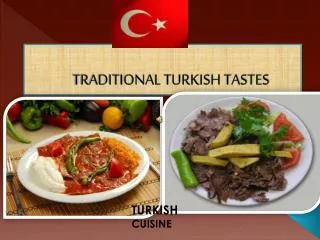
TRADITIONAL TURKISH TASTES
TRADITIONAL TURKISH TASTES. TURKISH CUISINE. Have you tried Turkish foods ?. Turkish cuisine is one of the world’s great cuisines . It reflects the long history. Turkish cuisine has many specialities and variations . In Turkey , Traditional dinners always start with soup.
906 views • 11 slides

Traditional Hungarian Food
Traditional Hungarian Food. Hen Soup in Ede Újházy Style. · 2 kg hen · 250 gram cleaned carrot · 100 gram cleaned parsley root · 60 gram cleaned celery root · 60 gram cleaned kohlrabi ( Hungarian turnip ) · 100 gram cleaned champignon · 60 gram cleaned onion
267 views • 12 slides

A TRADITIONAL TURKISH SPORT
WRESTLING. A TRADITIONAL TURKISH SPORT. WrestlIng Is a kInd of sport whIch wrestlers try to beat eachother wIthout kIckIng and punchIng . WrestlIng Is one of the oldest sport and has varIous kInds and forms . In japan - Sumo wrstlIng. In mongolIa - Mongol wrestlIng.
499 views • 17 slides
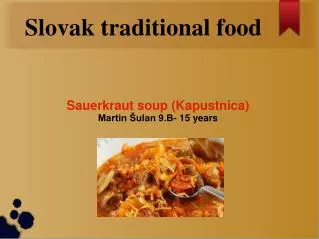
Slovak traditional food
Sauerkraut soup (Kapustnica) Martin Šulan 9.B- 15 years. Slovak traditional food. Sauerkraut soup. Sauerkraut soup is traditional Slovak soup for Christmas or New Years Ave. Sauerkraut soup can be prepared in a lots of way, it differs from region to region. Ingredients:. 1kg sauerkraut
298 views • 7 slides

Turkish and American Food
Variety Versus Ingenuity . Turkish and American Food. By Robin Sellars. HISTORICAL INFLUENCES. The American South. The American South is extremely underdeveloped and young compared to other cultures and countries, and could accurately be called an isolated culture. HISTORICAL INFLUENCES.
264 views • 6 slides
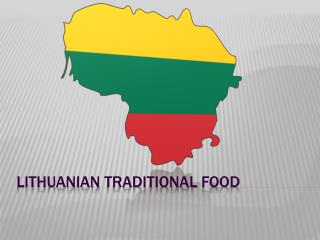
Lithuanian traditional food
Lithuanian traditional food. Zeppelins. Zeppelins are made from potatoes and meat , some times from potatoes and curd. Their sauce is sour cream or greaves. potato pie. Potato pie is made from potatos and sometimes with meat. Its sauce is sour cream. Lithuanian s especially like potato pie.
373 views • 10 slides

TRADITIONAL TURKISH MEALS
TRADITIONAL TURKISH MEALS.
1.12k views • 96 slides

Traditional Food
Traditional Food. For the Ibo(Igbo) and/or other African Tribes. What did the Ibo eat ?. gari (cassava powder). Fufu (African dumplings). Yams. Pumpkins. Recipe of the tribe. Staples of the tribe. How was the food gathered? Farmed? Hunted ?. How was the food cooked? By whom ?.
519 views • 7 slides
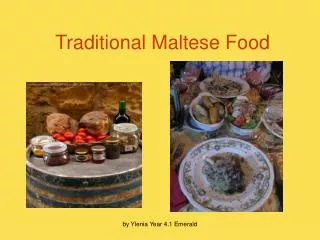
Traditional Maltese Food
Traditional Maltese Food. Food is an important part of Maltese Culture. The Maltese are particularly fond of rabbit and many restaurants that serve traditional maltese dishes promote rabbit as being their speciality dish.
915 views • 5 slides

TURKISH TRADITIONAL GAMES
TURKISH TRADITIONAL GAMES. LEAP FROG. BİR DİR BİR.
724 views • 39 slides

TRADITIONAL POLISH FOOD
TRADITIONAL POLISH FOOD. PORK CHOP. In Poland eating is very common . One of very popular potatoes with cutlet or pork chop and sauerkraut salad. DUMPLING.
307 views • 10 slides
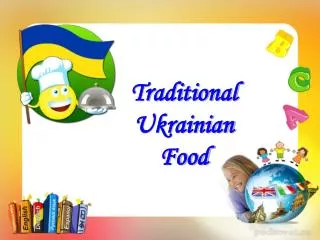

Traditional Ukrainian Food
Traditional Ukrainian Food. The motto of the lesson:. “The more we learn the more we know”. What do you like to eat?. What don’t you like to eat?. What is your favourite drink?. Do you help your mother to cook?. Can you cook?. What dishes can you cook?.
518 views • 21 slides
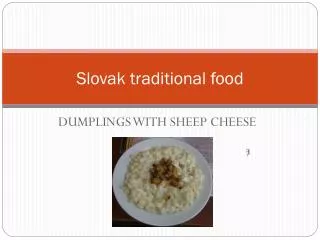
Slovak traditional food. DUMPLINGS WITH SHEEP CHEESE. É. BRYNDZOVÉ HALUŠKY.
290 views • 10 slides
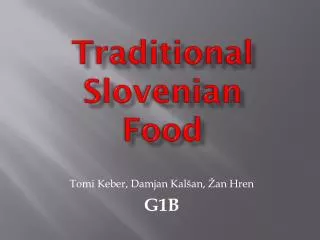
Traditional Slovenian Food
Traditional Slovenian Food. Tomi Keber, Damjan Kalšan, Žan Hren G1B. Outline. Slovenia Other countries ’ influence on Slovenian cuisine Typical Slovenian dishes Slovenian wines Questions and Answers. Slovenia. Central Europe 4 boundaries Climate History.
674 views • 13 slides

Korean Traditional Food
Korean Traditional Food. 3224 Song Na Young. Jap-Che. boiled bean threads with stir-fried vegetables and shredded meat. Bi-Bim-Bap. Rice Mixed with Vegetables and Beef. Bulgogi. made of beef that has been cut in thin size, seasoned with the special sauce and grill on the fire at last.
506 views • 8 slides
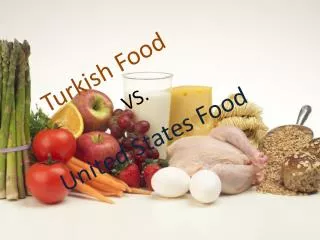
Turkish Food
Turkish Food. VS. United States Food. Holiday Eating Habits. Americans celebrate Thanksgiving and Christmas by gathering with family and friends and having large meals including turkey or ham as the main dishes.
433 views • 8 slides

Traditional food
presentation made by students
522 views • 15 slides
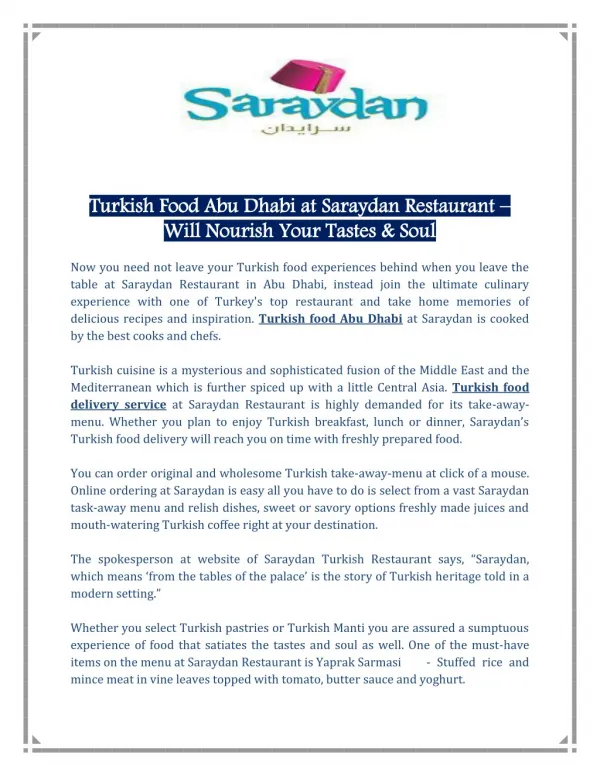
Turkish food Abu Dhabi
Welcome to the most authentic Turkish Restaurant in Dubai. Experience the traditional Turkish Food in Abu Dhabi Turkish Delight. Visit Now!
94 views • 2 slides

Traditional Turkish Delight Suppliers | Al Maeda Food Productions
Turkish Delight, the jelly like sweet, is famous world-wide because of its mesmerizing taste. Al Maeda Food Productions is the authentic suppliers of Turkish Delight in UAE. Visit: https://al-maeda-dubai.com/Turkish-Delight
123 views • 11 slides
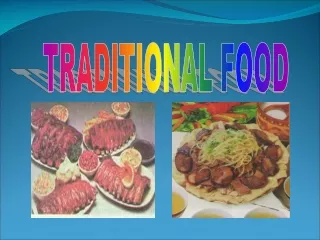
Thanksgiving 101
Whether you’re simply celebrating with your immediate family or welcoming the whole crew, craving traditional flavors or looking to try something new, cooking turkey for the first or 400th time, we’ve got you covered with Thanksgiving 101.
The National Turkey Federation created Thanksgiving 101 to be a comprehensive guide on preparing the holiday turkey, no matter how you’re celebrating. We hope you’ll find these timeless tools helpful as you set the Thanksgiving table.
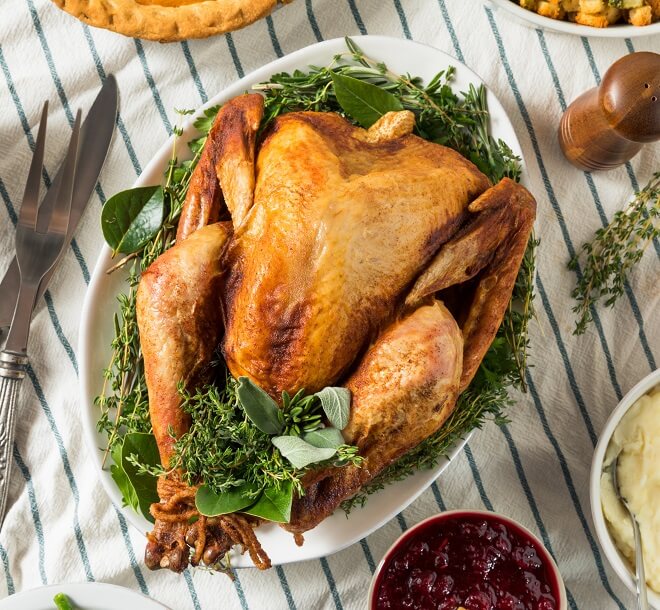
Going Whole Bird
Tackling an entire turkey may seem intimidating, but with a little bit of planning, it’s a pretty straightforward endeavor. Our Whole Turkey Cooking Guide has everything you’ll need to get up to speed.
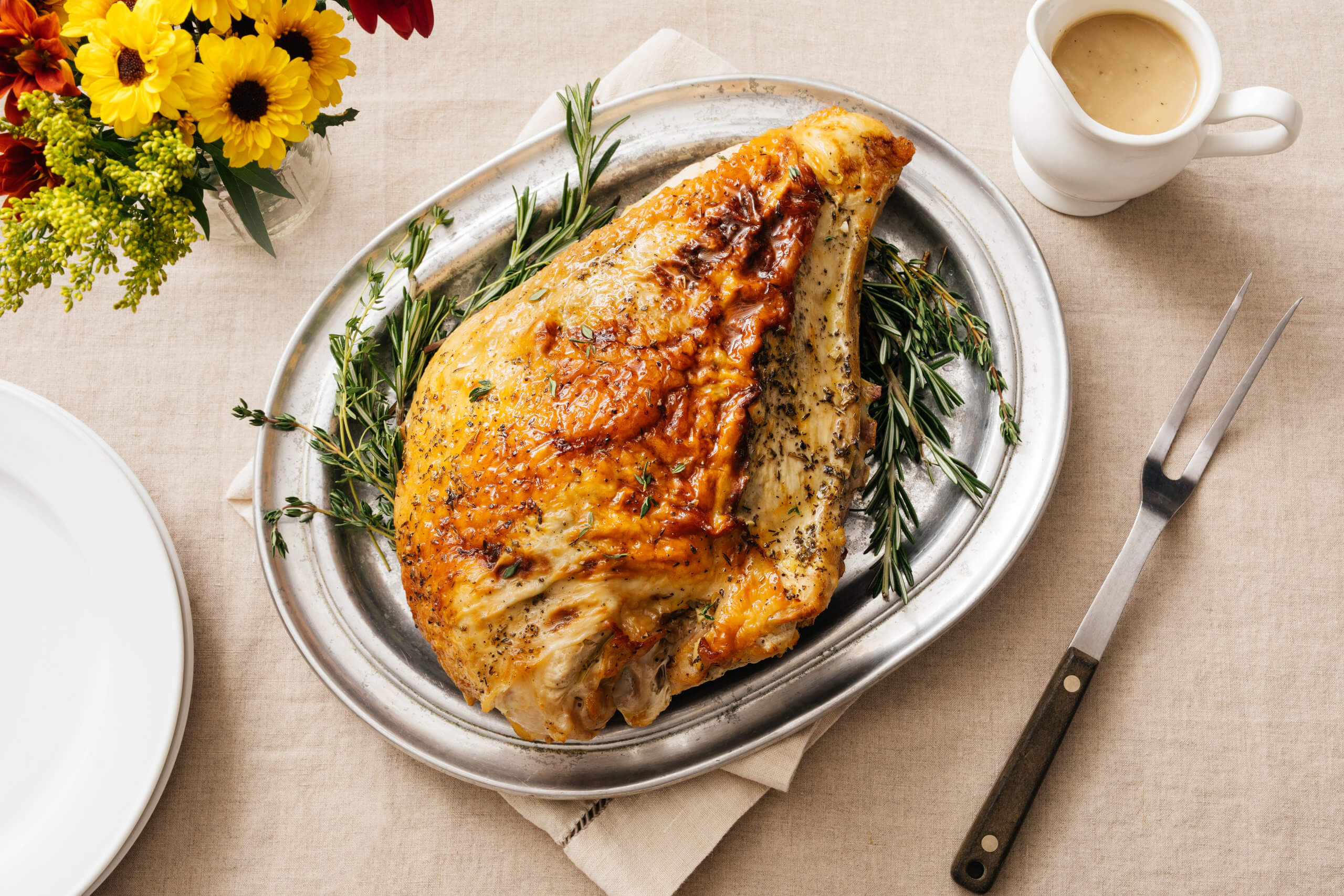
Small Scale, Big Flavor
You don’t have to miss out on big Thanksgiving flavor just because you’re not cooking a whole turkey. Cooking turkey cuts ensures you have more of the meat you love and is great for smaller feasts. Check out our Guide to Roasting Turkey Cuts .
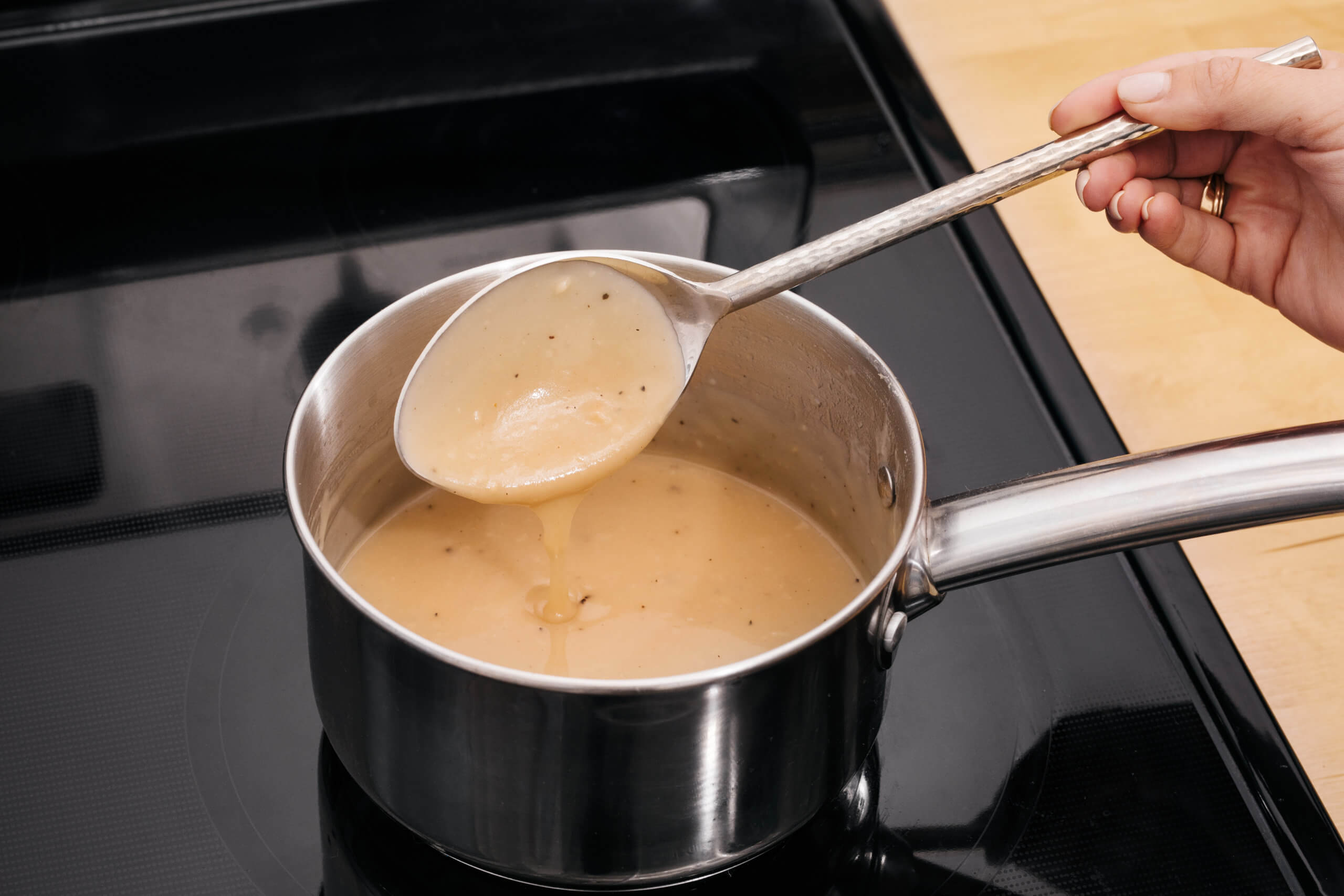
Quick & Easy Gravy
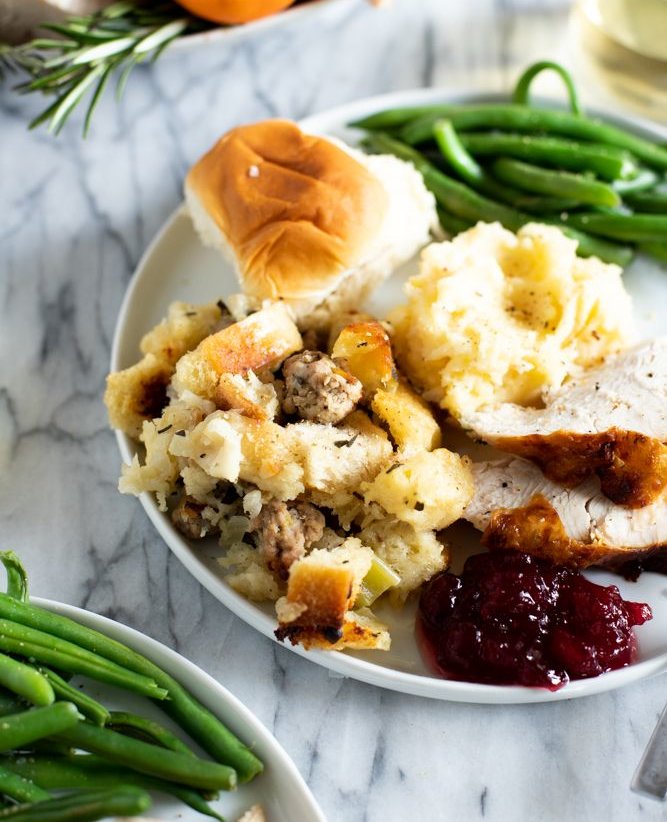
The Dish on Stuffing
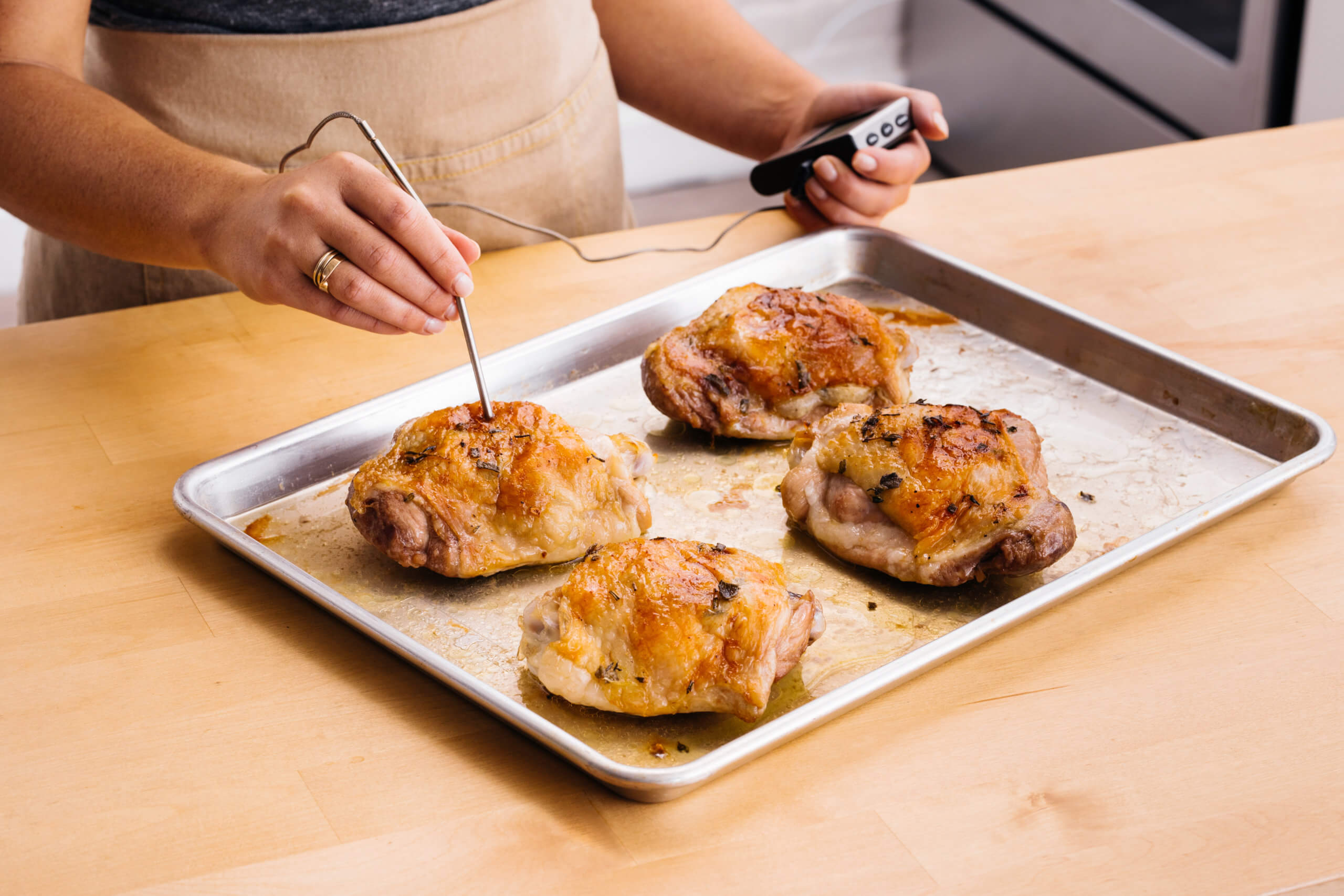
Temperature Matters
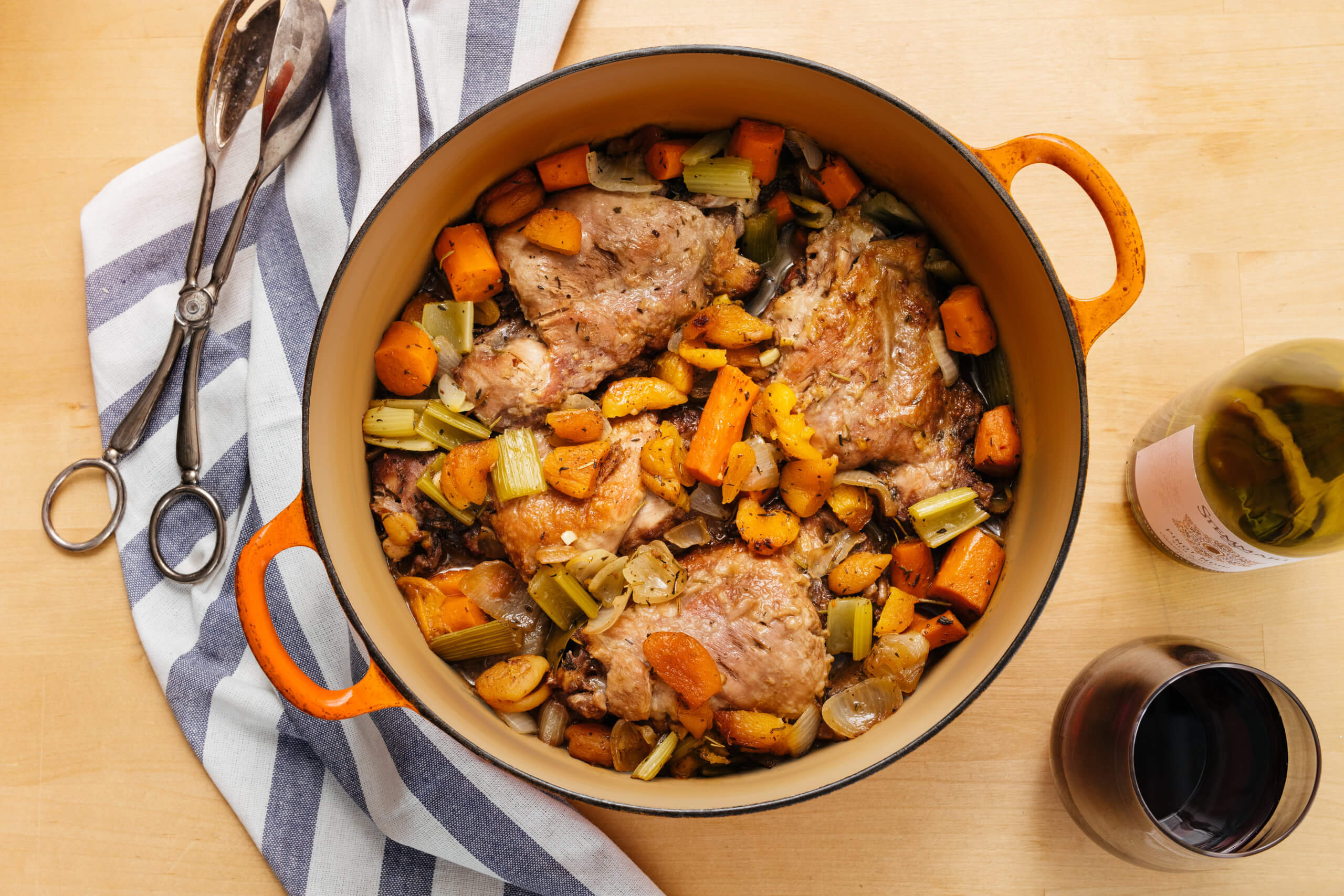
Turkey with a Twist
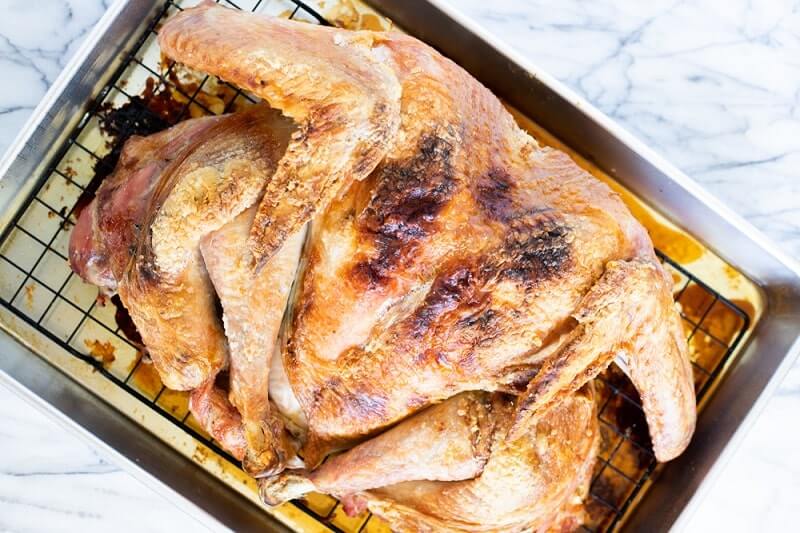
How to Spatchcock Turkey
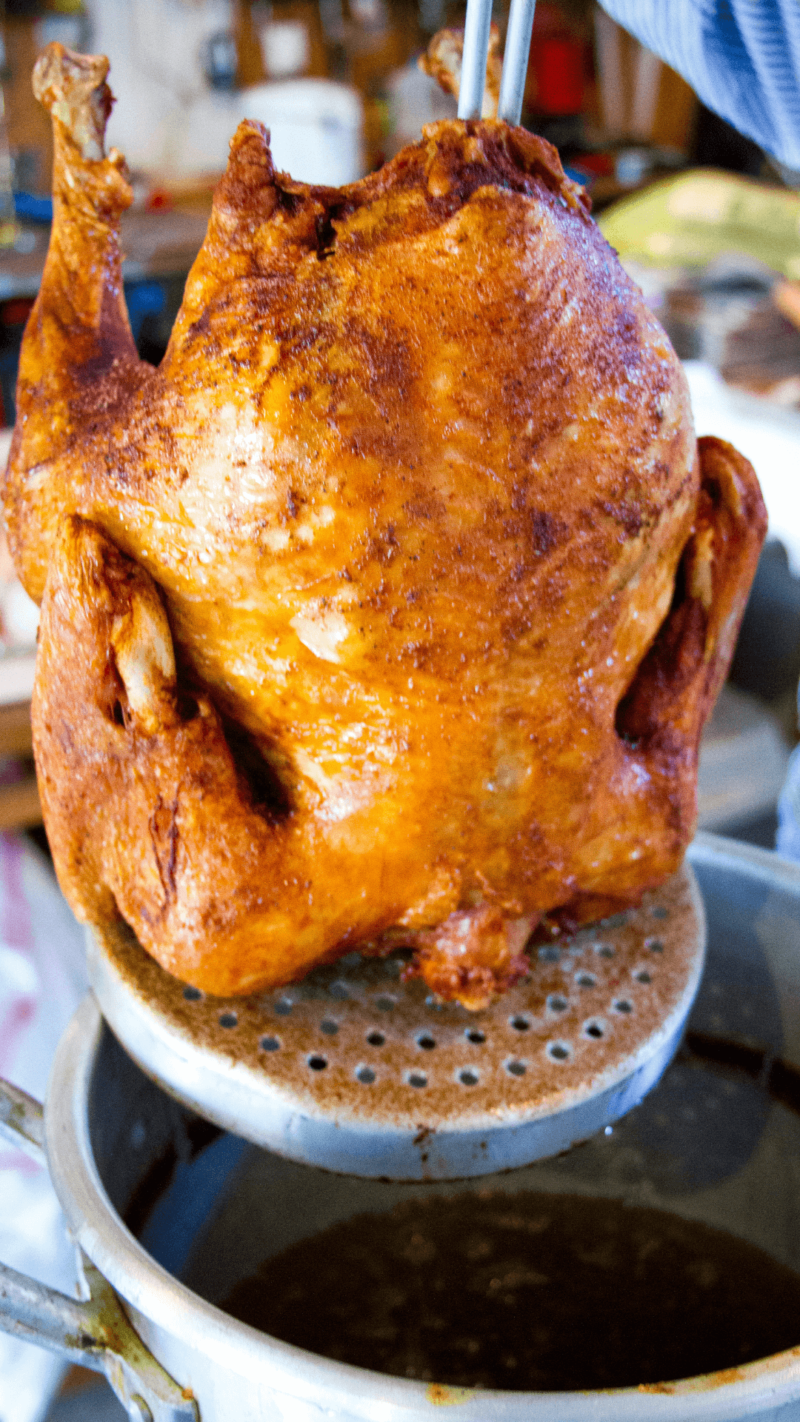
How to Fry Turkey
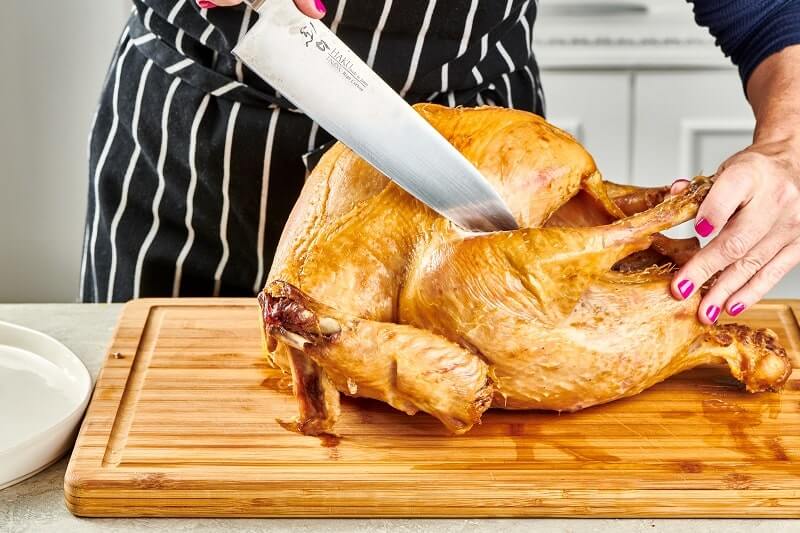
How to Carve Turkey
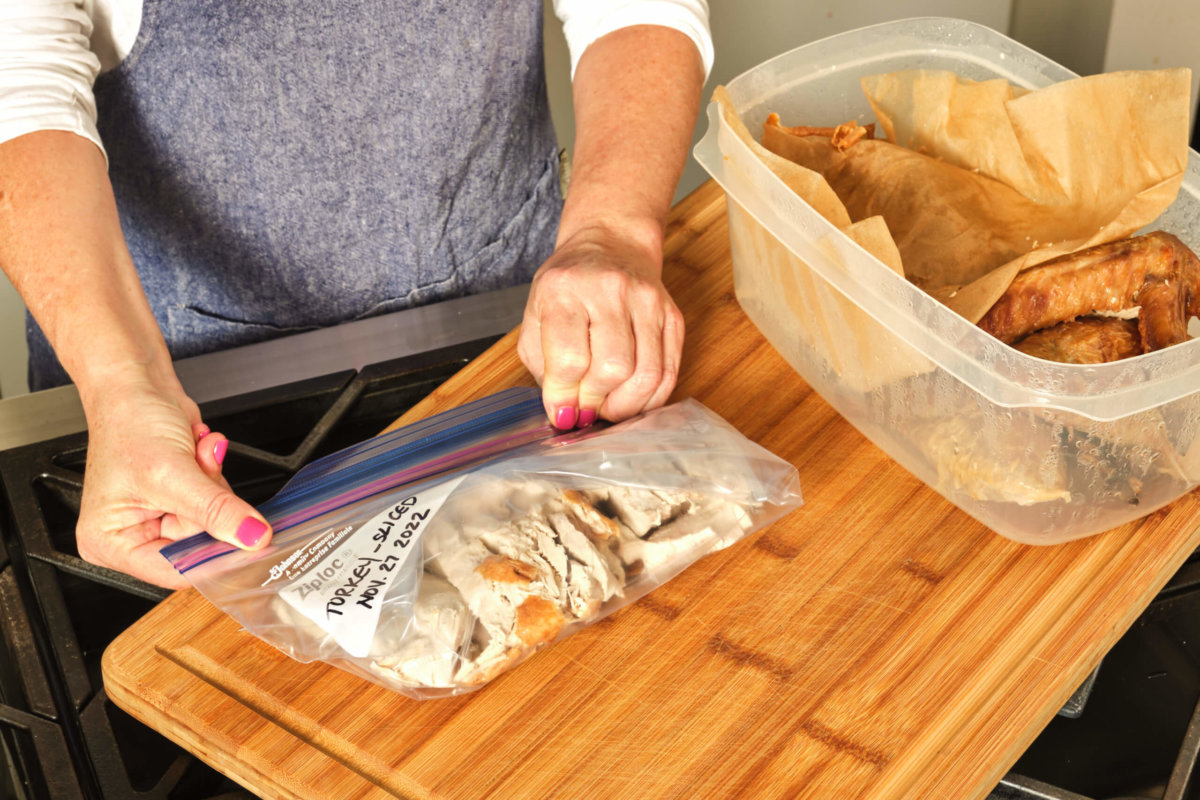
How to Freeze Turkey
Looking Forward to Leftovers
Certainly can’t blame you if you’re looking to double down on Thanksgiving flavor the day after and create the most epic leftover sandwich the world has ever seen. But, if you’re looking for something a little different, we’ve got a number of recipes that truly transform your leftover Thanksgiving turkey .
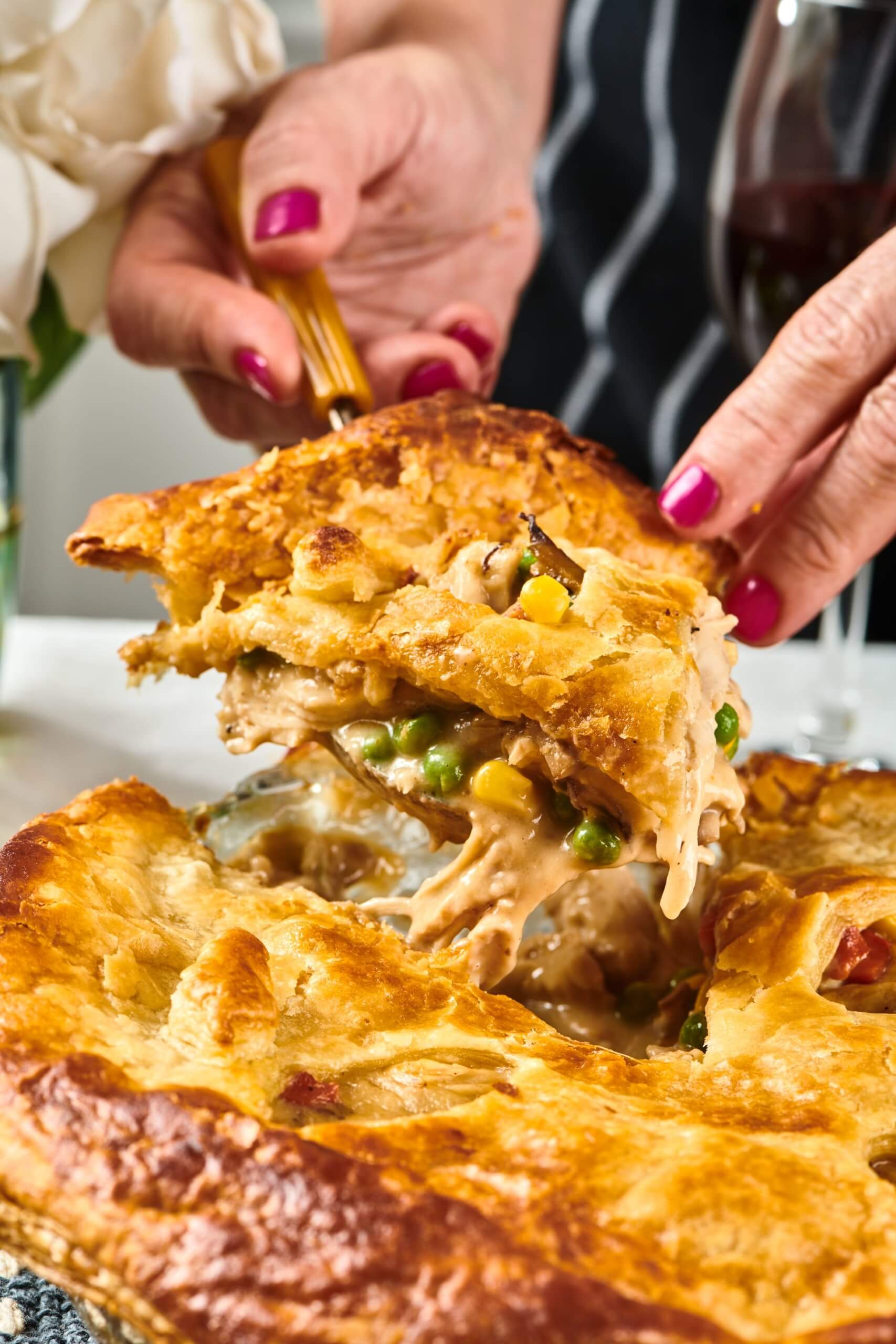
Turkey Pot Pie

Thanksgiving Egg Rolls
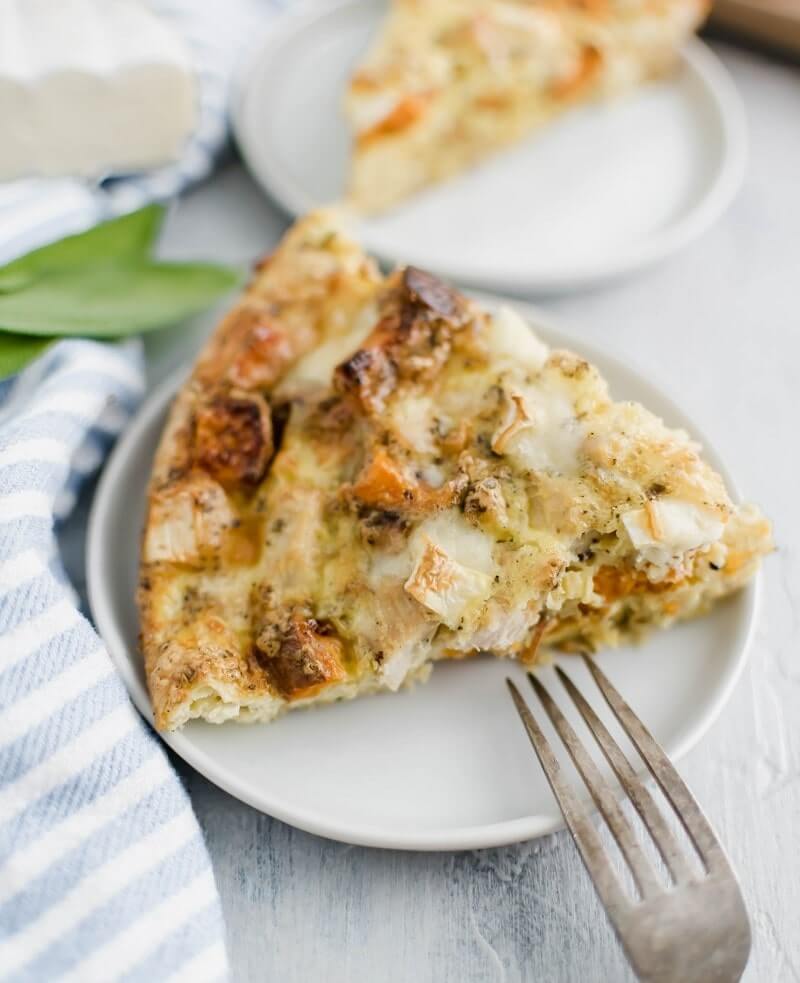
Thanksgiving Turkey Frittata
Planning Thanksgiving
As family and friends gather for the holidays, check out some of our tips for planning a successful meal. Want to try something new? Prepping your turkey outside to the grill or smoker leaves more room in the oven for sides and pie! If the price tag for the holiday meal is on your mind, these tips for a budget friendly Thanksgiving will come in handy. Celebrating remotely? There plenty of ways to connect with loved ones over the Thanksgiving table.
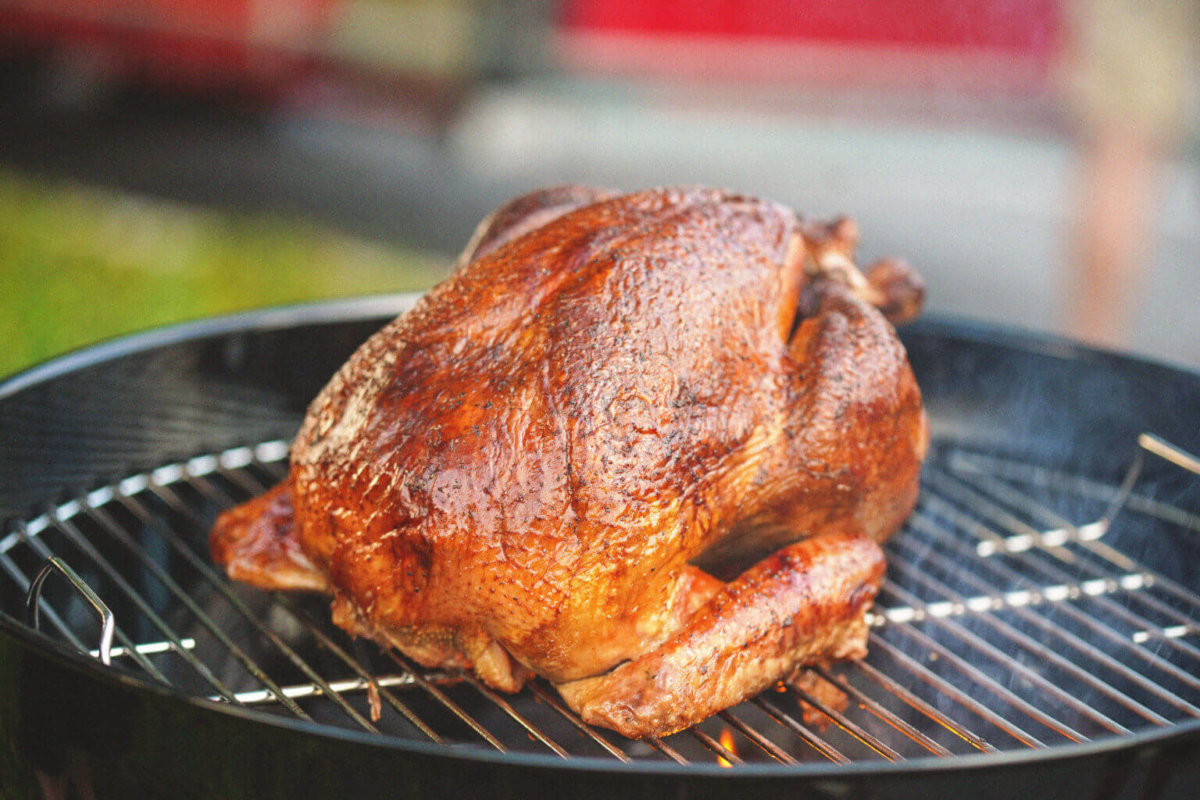
Smoke Your Turkey
Think outside the oven! We’ve compiled the top 10 reasons to move your holiday turkey to the grill or smoker. Happy Thanksgrilling.
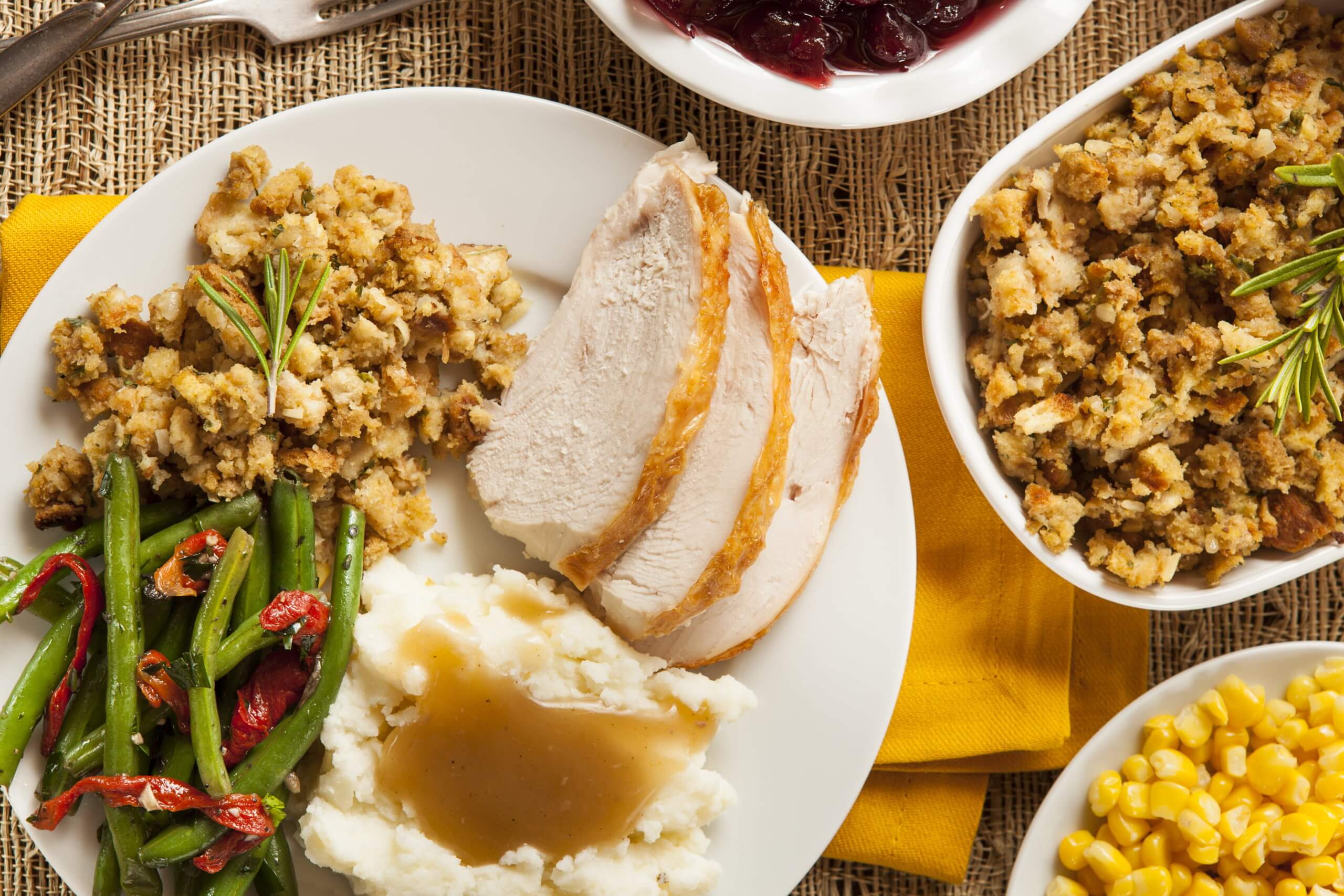
Budget Friendly Thanksgiving
No matter your budget, there are ways to put a delicious, memorable Thanksgiving meal – with turkey as the centerpiece – on the table!

Shop Our Merch : Whispered Inspirations Shop

Make the Perfect Turkey Dinner for Your Family
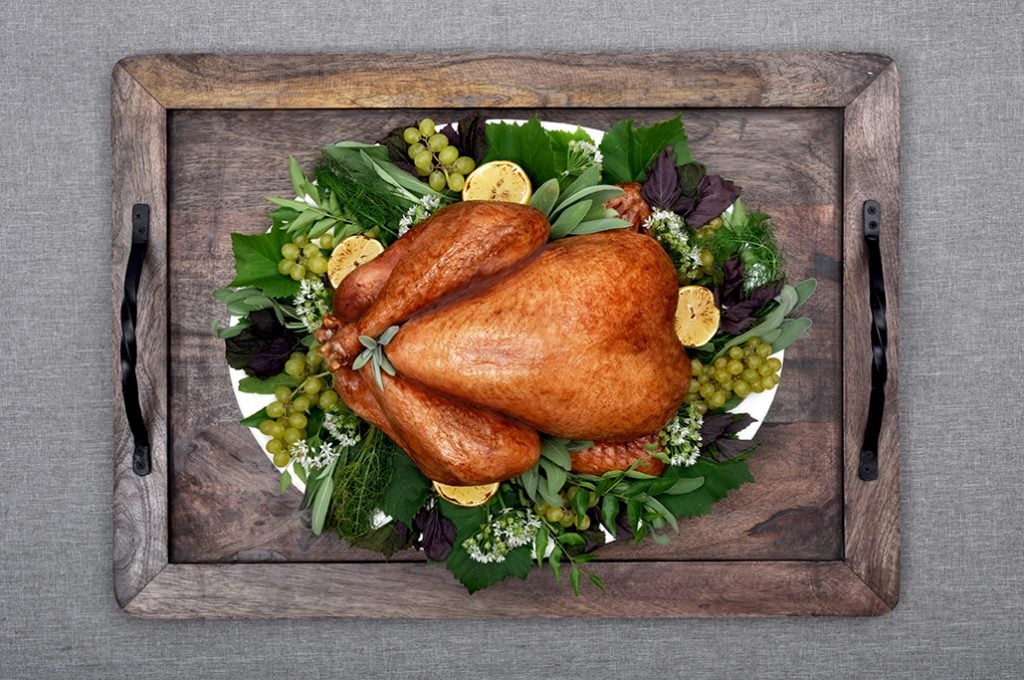
The Perfect Turkey Dinner for Your Family.
Thanksgiving is synonymous with turkey and since it is right around the corner, you can bet that like most Canadians, I have visions of a gorgeous table set for family and friends, laughter and of course, juicy turkey with all the fixing’s and even leftovers on my mind!
Every year, we cook a big juicy bird with mashed potatoes, gravy, stuffing, veggies and pumpkin pie. Turkey is always the centerpiece, the star, and with good reason. It’s no wonder that there’s often a fight for the turkey legs! Dinner is always hosted at our house and cooking the meal for loved ones is just as much a part of enjoying the holidays as it is sitting down and digging in to the fruits of our labor.
Whether you are hosting a large group or just making dinner for two, preparing the perfect meal for your family’s needs doesn’t have to be difficult. Turkey is so versatile and tastes great with different flavours and spices.
Nowadays, you can head to your nearest grocer and find different cuts of turkey. This gives you a variety of options if cooking an entire bird just isn’t practical for your family. With many options, it makes turkey the perfect solution for any family get-together; why not make it a tradition?
Though, I must say, there are also benefits to cooking the whole bird. If you’ve never roasted a whole turkey before, don’t worry. Canadian Turkey has whole bird how-to’s that are foolproof. You’ll be shocked at how simple it can be to create that perfect centerpiece with the help of their tips and easy-to-follow directions.
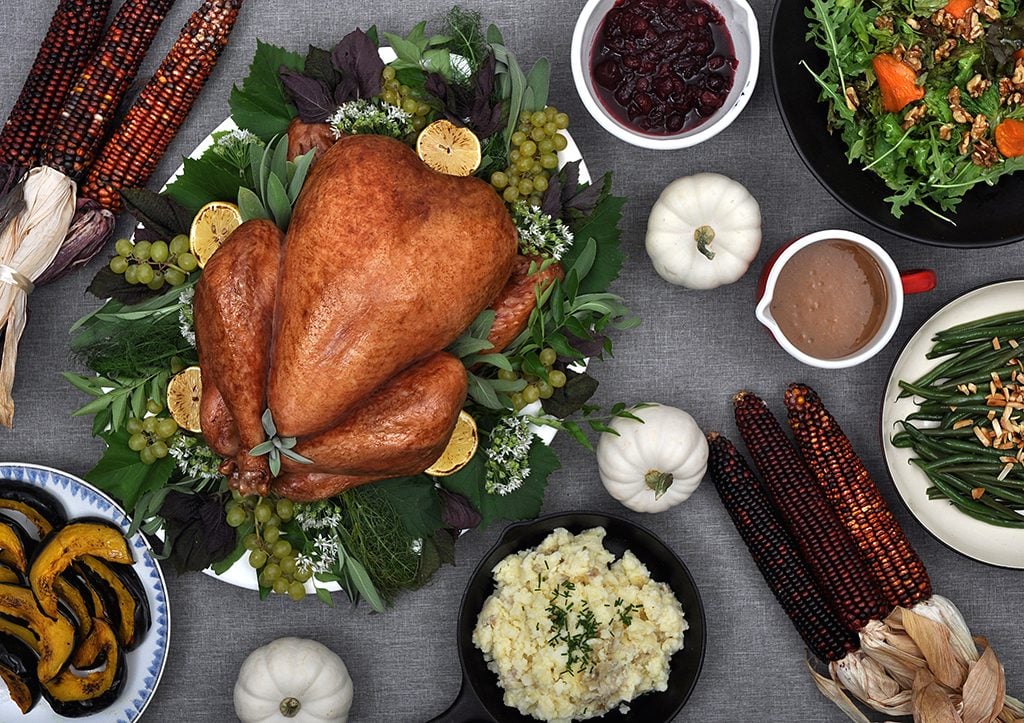
Multiple Meals in One!
We have a small family but, we always opt to cook the whole bird. The only reason why is because, leftovers. You can make lots of recipes and feed your family for the week or even freeze meals for later.
Don’t forget, bones make an excellent stock for soup and you can prepare and freeze soup too. If you’re stumped on what to do with your leftovers, Canadian Turkey has a gold mine of ideas in their recipe section .
One of our favorite ways to eat leftovers is a tradition we have had for generations. After we have a traditional turkey dinner with family, we use leftovers and make incredible “panes con pavo” which are turkey sandwiches or buns with turkey. It’s shredded turkey basted in a Latin-inspired, tomato-based sauce, placed in a delicious bun with lettuce and radishes. We sometimes add soft Latin cheese and it’s to die for.
You can always find a delicious new recipe to inspire you or just substitute turkey for the main protein in your favourite dish. After all, what busy family doesn’t love an easy bonus meal?
Another great way to use turkey is in salads. This Warm Turkey and Root Vegetable Salad with Goat Cheese Dressing is a great place to start. Whether you buy a turkey breast to make this salad at the grocer or use leftovers from the whole turkey itself, it is sure to please.
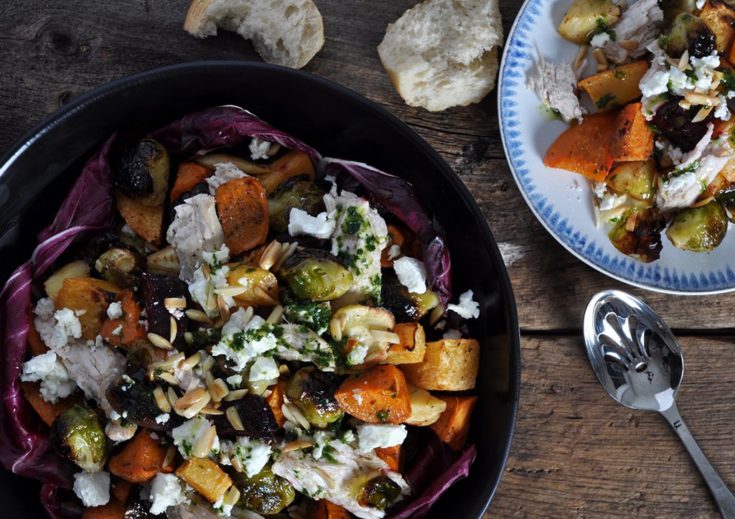
Warm Turkey and Root Vegetable Salad with Goat Cheese Dressing
A delicious salad made with roots and Canadian turkey that can be enjoyed as a main entree or light lunch.
Ingredients
For roasted vegetables.
- 12 brussel sprouts
- 1 small sweet potato
- 2 tbsp olive oil
- salt and pepper to taste
- 1 cup baby arugula
- 1 cup salad greens
- 2 cups leftover turkey, chopped
- ½ cup chopped walnuts, toasted
For dressing
- ½ cup olive oil
- 1/3 cup apple cider vinegar
- 2 tbsps chopped parsley
- 1 small package goat cheese
Instructions
- Set oven to broil.
- Wash, peel and roughly chop vegetables.
- Place vegetables on a baking tray. Season with olive oil, salt and pepper.
- Set oven rack to the middle position. Broil vegetables until browned and cooked through, 15 – 20 minutes.
- Remove from oven and set aside to cool.
- Mix together all dressing ingredients except cheese and whisk together. Break cheese into small chunks and add to dressing.
- Combine greens, top with roasted vegetables and walnuts.
- Dress salad and serve.
TIP: Double the turkey in this recipe to create a main dish, great for lunch or a light dinner.
Did you make this recipe?
Please leave a comment on the blog or share a photo on Instagram
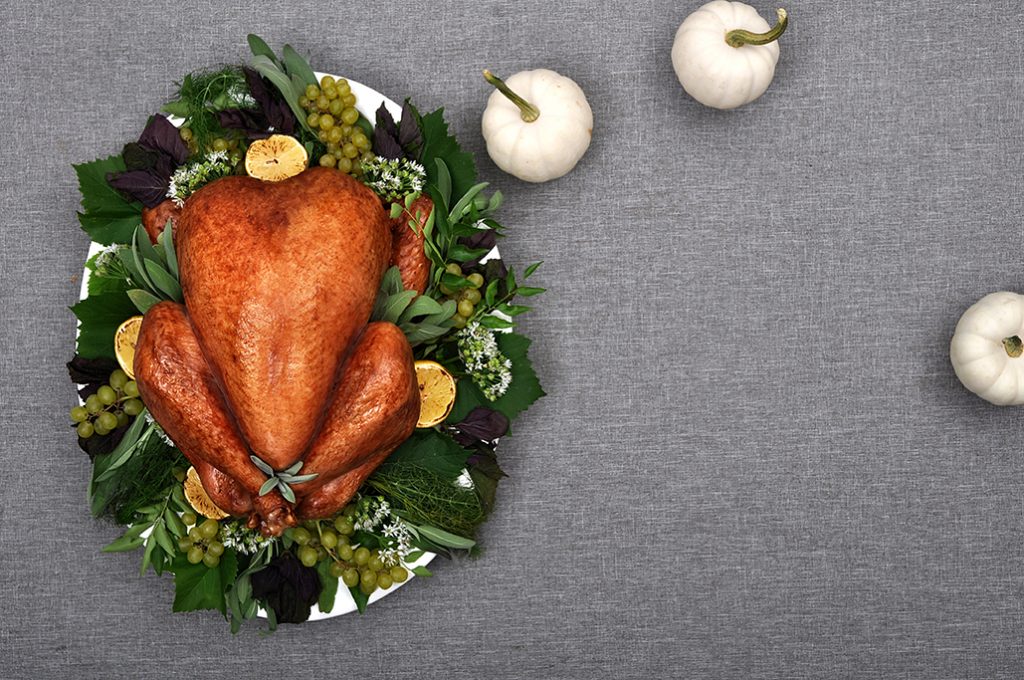
Enjoy Canadian Turkey!
However you celebrate, the most important part is that you enjoy good company, good times and great food. Having options is always a bonus and when you can make more meals out of one–it’s even better!
If you’re looking for more unique Thanksgiving solutions, visit the Canadian Turkey site to find the perfect recipe and create your own Thanksgiving tradition!
Did you know that that for 8 years in a row, Turkey Farmers of Canada and its member organizations have donated to Food Banks Canada for the purchase of turkey by rural food banks at Thanksgiving? That is incredible!
Be sure to follow them on Facebook , Twitter , Pinterest and Instagram for their latest updates, recipes and more.
What is your favorite way to eat turkey?
Let me know, til then–cheers m’deres!

Nancy Polanco is a freelance journalist, lifestyle content creator, and editor of Whispered Inspirations. She is a proud Mom to Gabby and Michaela and partner and best friend to Darasak. Having worked as part of a health care team for almost a decade, Nancy is happy to be back to her passion. She is a contributor to the Huffington Post, TODAY’s Parents, and an Oprah Magazine Brand Ambassador.
Similar Posts

20 Super Easy & Delicious Easter Bark Recipes

LEGOLAND Toronto at Vaughan Mills: A Bricktacular and Fun Experience for Kids and Adults! #familytravel

Avengers Iron Man Cupcakes

Small Voices, Big Dreams: How Education Helped Me Find My Voice. #smallvoices

Participate in the Dads Who Play Barbie Challenge & You Could Win $25,000! #DadsWhoPlayBarbie
Nestle’s my favourite halloween: win $2000 of your favorite candy for your whole street #favouritehalloween, 153 comments.
I think this year, I am going to try to make the Roasted Turkey with a Mustard Gravy. I am hoping that the gravy will add just the right variety to the meal and give some different that the usually gravy..
Sounds delish!
This would be my choice CHEESY TOMATO AND TURKEY BAKE because its all the ingredients my family loves.
Great choice!
The smoked turkey wraps would provide a great meal solution for my family as it would be quick to make and something the whole family would enjoy.
My tip for cooking a whole turkey is to pull the skin away from the breast meat the best you can and then rub the meat with a butter/herb mixture to help infuse some flavour right into the meat.
Mmm, that sounds like it would make a delicious difference. 🙂
the cheesy tomato and turkey bake looks delish and hearty! this will be an easy meal to make and keep a big batch for the week
Perfect for the cooler weather. 🙂
The turkey wraps are a meal solution for us because they are quick and easy to make. And can be wrapped and taken on the go.
The Weeknight Buffalo Turkey Tacos offer a great meal solution for my family as they are super quick to put together and offer flavours my entire family love!
My secret is to buy a fresh turkey.
Awesome tip!
Smoked turkey wraps are perfect for my family because we can each customize them to our taste. My best whole turkey cooking tip is to rub butter into the skin before you start cooking in so it crisps up nicely.
The turkey mango salad sound amazing will be using my leftover turkey to make it.
GRILLED TURKEY BREAST WITH MUSHROOM AND WILD RICE STUFFING, ingredients the family loves and it just sounds/looks tasty.
my tip is to lay bacon on top of the turkey. something my mom always has done.
i know when I do it at home, the husband and my boys are always grabbing the crispy bacon on top
WHOLE ROASTED THANKSGIVING TURKEY WITH MUSTARD GRAVY would be perfect since it can be used for a festive dinner, and then the leftovers can be used throughout the week to make other meals or can be frozen.
The turkey tacos would be a great meal for my family!
The CHEESY TOMATO AND TURKEY BAKE looks delicious. My family would definitely enjoy it.
Slowcooker turkey breast would be perfect as my family is always on the go , but I would love to try deep dried turkey too . My mom has always taught me to cook Turkey slow in the oven with a ton of butter and the turkey stuffed full with homemade stuffing . My favorite
SLOW COOKER TURKEY CHILI WITH SWEET POTATO, CHIPOTLE AND MAPLE
The Sausage and Pistachio Stuffed Turkey Breast Roast provides a great meal solution since it is a great source of protein and is something everyone in my family likes to eat!
Cook at a higher temp for about 30 minutes.
GRILLED TURKEY TACOS
The a squashand turkey soup would be perfect for leftovers
The recipe for Slow Cooker Turkey Breast is what I am doing this weekend because we are camping and being able to cook the turkey in the slow cooker is great!
the turkey tacos are something my kids would love and yay for food they can hold with their hands!
The Caesar Turkey Schnitzel Sandwich would be a great meal solution for my family because it would be a quick , simple, and delicious meal.
The Cheesy tomato and turkey bake would be a great recipe for my family 🙂
The smoked turkey wraps are a great solution as they are quick to make and everyone likes them!
I make turkey pot pie after the turkey has had its day
the smoked turkey wraps would be good
sorry hit enter too fast, the smoked turkey wraps would be great as they have all the veggies that we love and the turkey is so healthy
I will have to try the shredded turkey tacos. My best turkey tip is to marinate it is a good brine.1bulb garlic,1lemon sliced 25pepper corns,2cup salt 1/2 cup sugar and enough water to cover the turkey.
Turkey Tacos sounds like a delicious meal that the whole family would love. Also easy to make!
The Smoked Turkey Wraps would be great for my family because we could choose our own toppings and make our own wraps! The kids love the be involved in making dinner.
We are getting a fresh turkey this year and stuffing it with mandarins and rosemary! Looking forward to it!
even though my mother and mother-in-law cooks the turkey we make leftover turkey fried rice which changes things up
Whole roasted turkey for us! We have a ton of people so we need it.
Turkey Burrito Casserole is a great solution as it uses up the left over turkey
The smoke turkey wraps seem easy to prepare.
The SQUASH, TURKEY AND ZUCCHINI SOUP sounds yummy. I bet it would be great to freeze up for those super busy nights!
I like the turkey taco pizza recipe as pizza is something everyone can agree on and enjoys!
the shredded turkey tacos would be great for our family because everyone loves tex mex.
The Cheese and Tomato Bake turkey is on my list because we eat a lot of cheese.
This is another recipe my family would enjoy SKILLET TURKEY SCALOPPINI TOPPED WITH MUSTARD, CAPERS AND OLIVE SAUCE
I like the deep fry whole turkey
the turkey wraps are so delish
My whole turkey cooking tip is to place butter under the skin of the turkey the day before you cook it.
SQUASH, TURKEY AND ZUCCHINI SOUP looks like winter time comfort food.
Another tip I do is to cook the turkey breast side down so all the juices run into the white meat.
I like the shredded turkey taco recipe. Perfect for Taco Tuesdays at our house!
The cheesy turkey and tomato bake would be delish
My best tip is to use a deep fryer. The skin comes out so crispy!
Until I visited the site I had no clue how much you could do with turkey or even the different cuts available to buy! Lots of ideas for the family
I put 3 slices of bacon on my turkey when cooking. It add some flavour!
I love the idea of the turkey tacos! Those sound amazing and perfect for my big and little picky eaters.
I like the turkey taco recipe as pizza is a lways a family favorite and you can add so many different topping to suit everyones need
love the use of turkey for hot turkey sandwhiches
I like to use a fresh turkey for best results.
My best cooking whole turkey tip is to buy a cook from frozen turkey, so easy and much safer food safe wise.
When I am cooking a whole turkey I always buy a fresh one, I find that they taste better.
Our family loves healthy and nutritious meals!
Cheesy tomato one and turkey bake sounds really awesome!
We love Squash so i think this would be a great recipe for my family
I like the CLASSIC ROASTED HALF TURKEY recipe. My tip is to defrost your turkey for a week in the fridge before cooking it.
I like the turkey taco pizza recipe from the site as pizza is ALWAYS a hit with everyone!
Slow cooker Tiurkey Breasts in the crock pot sounds like a moist delicious idea.
Use a thermometer to insure turkey is properly cooked.
Cooking a whole turkey – low and slow. I baste often and always add more liquid.
My favourite turkey recipe is on the stove right now! Simple turkey soup. It makes a TON of food, enough for days and its super healthy! YUM!
cook the turkey the day before then less work day of party
Rub your turkey with butter to get a nice brown finish.
I like the turkey pizza recipe as pizza is always a hit with everyone in the family
I love the turkey chili slow cooker recipe…anything that makes a worknight dinner easier is gold in my books!
A perfect recipe for us would be Honey Garlic Turkey Tenders with Sweet and Smoky Dipping Sauce!
Turkey Soup ! Love that after our big thanksgiving meal !
We cooked our turkey covered in bacon strips! It bastes itself that way. Not the healthiest thing, but Thanksgiving is only once a year!
We are a family of potato lovers so this dish would be perfect for us TWICE BAKED TURKEY DIJON BAKED POTATOES
The turkey taco pizza recipe caught my eye as pizza is always a hit with the fanmily and something everyone can agree on
the slow cooker turkey breast sounds good, must try that for this week
WARM TURKEY AND ROOT VEGETABLE SALAD WITH GOAT CHEESE DRESSING would be perfect for my family because we love all the ingredients !!!!
Nutritious and an enjoyable meal for everyone!
The shredded turkey tacos woldl be great for us. We all love tacos,,it is a family favorite,and we can eat them for a quick snack,lunch of supper!
Last year I made my turkey with a mayonaisse rub. I was quite skeptical, but it was awesome…very moist and tasty. Best turkey ever.
My family would love the sweet and spicy turkey drummettes and they would really enjoy the glaze too.
The turkey taco pizza recipe appeals to me – pizza is always a hit with everyone
I like the turkey tacos because my kids loves taco and a great way to use up leftovers.
The turkey taco pizza recipe is a great solution as pizza is something everyone agrees on
the vietnamese turkey zucchini cups looks good
My best tip is—get my husband to do it. Seriously I have never cooked a turkey because he is such an amazing cook! I am spoiled!
The turkey pot pie! That allows me to create a whole different meal using leftover turkey and veggies.
The CHEESY TOMATO and TURKEY BAKE is perfect for my family because we have several picky eaters in our group, but everyone of us loves the ingredients in this recipe!
I love the looks of SQUASH, TURKEY AND ZUCCHINI SOUP as a meal solution. We love soup and this one combines favourite ingredients and flavours. Anything with spinach makes me happy.
I use an electric roaster oven for the turkey to save room in the oven for the potatoes and sides.
BATCH TURKEY MEATBALLS would be perfect for my family because the kids love any kind of meatballs!
Caesar Turkey Schnitzel Sandwich is a great meal for my family as it is easy to make and satisfying.
Turkey and goat cheese? Yumm!
I would love to try the Cheesy Tomato and Turkey Bake
The Deliciously Simple Herb Roasted Turkey has the flavour my family loves and makes great sandwiches and casseroles as leftovers.
The SHREDDED TURKEY TACOS would be a great recipe for my family because I have a few picky eaters in my home but I know everyone would eat these Tacos
Would like to do turkey tacos with our leftovers to get a bit of variety.
Turkey is so easy to make
The turkey tacos are fast and easy to make. I find basting the turkey makes it brown nicely.
I love a one-pot meal – the CHEESY TOMATO AND TURKEY BAKE sounds perfect!
Weekend fresh taco turkey
I want to try them all
The Squash, Turkey and Zucchini soup because we like lighter healthy meals.
Slow cooker turkey breast since we usually only eat white meat in this house!
The Batch Turkey Meatballs are great to make in bulk so you can freeze for future meals. And the family loves them.
I have to say i am very surprised they have such a large selection of recipes and most ingredients needed i can find in my home.Another recipe i would love to try for my family is the SPICY PEANUT NOODLES WITH TURKEY,we do love spicy dishes.
The Cheesy Tomato and Turkey Bake would be a great family meal solution as it would stretch out the great turkey leftovers for another yummy meal!
Cheesy Tomato and Turkey Bake offers a delicious one-pot meal for a hearty lunch or the main dish for supper and we all love turkey with anything!
Pasta dishes can get boring so I really like this unique CHEESY TOMATO AND TURKEY BAKE! I like that it uses lower-fat cheeses for a healthier family meal.
Smoked turkey wraps would be a delicious and healthy lunch.
My pick is the Turkey Apple Meatloaf muffins, because I like the portion ease of meatloaf muffins, and this is a nice twist on my usual recipe.
for sure the turkey tacos
For a whole bird I find roasting a larger one always turns out better than the small ones,
Everybody loves turkey here ! GRILLED TURKEY TACOS would be great for our family . This is something we could start preparing ahead of time when all 4 kids have activities !
The grilled turkey tacos look easy and something my kids would love.
The Warm Turkey and Root Vegetable Salad with Goat Cheese Dressing would be a perfect meal for our family, because not only is it economical, but so healthy, too!
I like the Cheesy Tomato and Turkey Bake.
Sweet % Spicy Oven Fried Turkey Drummettes sounds perfect for a family dinner at home. I love cooking the entire meal in the oven. Add a quick green salad and serve!
The turkey tacos would be a great recipe for our family because we love tacos, and using turkey is a healthier option.
The PEACH GLAZED ROASTED TURKEY BREAST would be a great recipe that everyone would enjoy
the batch turkey meatballs look good
I like the turkey taco pizza recipe as pizza is always something everyone can agree on and enjoy!
TURKEY PRIMAVERA TART would be a great recipe for my family:)
Turkey Tacos provide a great solution as we all love turkey and tacos in our family!
i would make turkey wraps
The SPICY PEANUT NOODLES WITH TURKEY looks amazing. Good for my family, quick and yummy.
PEACH GLAZED ROASTED TURKEY BREAST would be a wonderful meal for my family !
I cook my turkey slowly. I rub it with butter and seasoning and it is so yummy and juicy.
i know my children would love the turkey tacos on our taco tuesdays!
thegrilled turkey tacos.
The shredded Turkey tacos would make a great midweek meal. simple and nutritious
The turkey wraps are a good meal option for us because its easy to make and fast too
Turkey wraps are something my whole family loves !
The turkey tacos look awesome! My kids would love those!
Healthy and yummy options the whole family will love
so many great recipes and ideas, I like to use ground turkey in spaghetti
WHOLE ROASTED THANKSGIVING TURKEY WITH MUSTARD GRAVY sounds delicious for my family,we have never tried the mustard gravy but we do love trying new things
The TWICE BAKED TURKEY DIJON BAKED POTATOES is the perfect side dish to make with leftover turkey after Thanksgiving! Great that the bacon can be substituted for turkey bacon to double the turkey taste! Yum!
Leave a Reply Cancel reply
Your email address will not be published. Required fields are marked *
- Search Please fill out this field.
- Manage Your Subscription
- Give a Gift Subscription
- Newsletters
- Sweepstakes
- Holidays & Occasions
- Thanksgiving Ideas and Tips
- Thanksgiving Recipes
- Thanksgiving Turkey
22 Thanksgiving Turkey Recipes For Every Type Of Gathering
:max_bytes(150000):strip_icc():format(webp)/kimberly_001w-1-35b21b2e0f7549dda21077585298ba59.jpg)
ANTONIS ACHILLEOS; PROP STYLING: AUDREY DAVIS; FOOD STYLING: EMILY NABORS HALL
Thanksgiving dinners are unique to each family and type of gathering, and the Thanksgiving turkey recipe you choose should be just as special. From a classic roasted turkey to a spicy-sweet smoked turkey breast, this collection of turkey recipes has a bird for every feast.
If you're serving a smaller group, consider a turkey breast recipe. Planning to make two birds because your holiday guest list is so big? Why not make a deep-fried turkey and a butter-basted turkey? And if you're keeping things intimate with just one or two other people, turkey tenderloins are the way to go. All the different styles, rubs, brines, and cooking techniques mean there's a turkey recipe for everyone.
Find the best Thanksgiving turkey recipe for your gathering, and you'll be making it year after year.
Simple Roasted Turkey
Fred Hardy, Food Stylist: Margaret Monroe Dickey, Prop Stylist: Hannah Greenwood
If you're looking for a classic roasted Thanksgiving turkey, this is the recipe for you. Simple seasoning and a foolproof technique equal a perfect bird.
Smoked Turkey Breast
A turkey breast is a smart choice for a smaller gathering—or for one where people only like white meat. Smoking the meat helps it retain its moisture and juicy texture while adding loads of flavor from the smoking process.
Spatchcock Turkey
Caitlin Bensel; Food Stylist: Torie Cox
We'll be the first to admit that spatchcocking a turkey isn't the easiest method—you have to cut out the backbone and flatten the turkey—but it's absolutely worth it in every way. The turkey roasts faster, the meat cooks more evenly (no extra-dry breast while you wait on the legs to come to temp), and it's easier to brine. Once you spatchcock, you'll never go back.
Smoked Turkey With Herb Rub
Some people roast. Some people fry. And some people smoke their turkeys—they'll tell you it's the only way. We might agree after one bite of this incredible bird.
Roasted Turkey Breast
Rob Culpepper; Food Stylist: Chelsea Zimmer; Prop Stylist: Josh Hoggle
You can have the traditional roast turkey experience but with a smaller turkey breast. Perfect for a gathering of just four to six people, a turkey breast cooks faster and results in juicy, tender white meat.
Roasted Herb Turkey And Gravy
An herb-infused butter adds incredible flavor to the turkey as it roasts. This is a classic Thanksgiving turkey if there ever was one.
Buttermilk-Brined Turkey
Alison Miksch; Food Stylist: Karen Rankin; Prop Stylist: Josh Hoggle
Brining a whole turkey in buttermilk and spices tenderizes the meat and infuses it with flavor and tang. Much like fried chicken, a buttermilk-brined turkey is extra juicy and delicious.
Spice-Rubbed Turkey Tenderloin
The perfect Thanksgiving turkey choice for two people, turkey tenderloins are boneless, skinless pieces of poultry that cook like chicken breasts. Use the pan drippings for the gravy, a Thanksgiving must.
Sweet-and-Spicy Roast Turkey
Greg DuPree; Prop Stylist: Ginny Branch; Food Stylist: Cat Steele
Honey and hot sauce—that's the essence of this sweet-and-spicy turkey. If you've mastered roasting the turkey, now it's time to find your favorite flavorings. This will be a serious contender.
Roasted Turkey Legs
Turkey legs can be a great weeknight dinner, but they're also wonderful for Thanksgiving if you want to mix up your poultry choices. Roasted on a bed of lemons and vegetables, the drumsticks boast incredible flavor and come out extra juicy.
Spice-Rubbed Turkey
This spice-rich dry brine draws out the turkey's natural moisture so the meat will be moist and juicy—and the skin crispy and crackly.
Boudin-Stuffed Turkey Breast With Lemon-Garlic Butter
New Orleans chef Kevin Belton shares a small-scale turkey meal inspired by his mother's epic holiday feasts.
Butter-Basted Turkey
Basting is a time-consuming task, so if you're going to do it, make sure it's worth it and use flavorful butter. A cheesecloth helps adhere the butter mixture to the outside of the turkey, resulting in crisp and delicious skin.
Smoked Turkey Legs
Victor Protasio, Food Stylist: Chelsea Zimmer, Prop Stylist: Christine Keely
If you have big aspirations for a smoked turkey but won't have the crew to eat it, why not make these bourbon-glazed smoked turkey legs instead? Fans of dark meat will make this Thanksgiving main disappear in minutes.
Dutch Oven Turkey Breast
Roast the turkey and the vegetables in a one-pot turkey dinner that makes Thanksgiving's meal a breeze. Focus on the remaining sides and the pies while this turkey cooks.
Easiest Dry-Brined Turkey
A dry brine is a great way to impart plenty of flavor and ensure you get crispy skin and juicy meat. It's also the best choice if you don't have space to refrigerate a huge bucket of turkey and wet brine . Season the turkey, then let it sit, uncovered, in the fridge for a day or two for the best results.
Cajun Smoked Turkey
Most Thanksgiving turkey recipes are filled with warming herbs and spices like sage and rosemary, but you can mix things up with this Cajun-inspired bird.
Deep Fried Turkey With Creole Spices
Chef Chris Shepherd uses Creole spices to render this deep-fried turkey exceptionally flavorful. You'll be fighting for the leftovers.
Sweet Tea-Brined Smoked Turkey
A wet brine with black tea, citrus, herbs, and sorghum infuses the turkey with flavor. The turkey rub adds a hint of sweetness thanks to brown sugar and a touch of heat from the chili powder, cayenne, and paprika. Lastly, a mopping sauce—made from ketchup, sorghum, and apple cider vinegar—doubles as a barbecue sauce for serving.
Spatchcocked Smoked Turkey
You don't need an expensive smoker for this smoked turkey recipe. We developed the turkey with a regular charcoal grill in mind.
Herb-Brined Turkey
Even a simple turkey can hold its own alongside the full array of Thanksgiving side dishes when it's exceptionally juicy and flavorful. And this recipe will get you that type of turkey.
Turkey Breast and Herb-Cornbread Stuffing
Use your slow cooker to make the Thanksgiving Day essentials: the turkey and the dressing.
Related Articles
Got any suggestions?
We want to hear from you! Send us a message and help improve Slidesgo
Top searches
Trending searches

11 templates

20 templates

holy spirit
36 templates

9 templates

25 templates

memorial day
12 templates
Turkey Presentation templates
Turkey is a country with a rich culture and history istambul, one of its biggest cities is in two continents at the same time the capital is ankara, though. this country loves bread and tea and has over 30 ethnic languages. and let’s not forget about their amazing landscapes full of cats have we already convinced you to take a look about these creative templates about this country you’ll be booking a plane ticket as soon as you download them.

It seems that you like this template!
Map of turkey infographics.
Our category of infographic maps keeps growing and growing! Today, we're releasing this set of maps of Turkey, a transcontinental country between Europe and Asia. To better engage your audience, it's always great to show data visually, and if you need to explain data related to this nation, it's much...

Premium template
Unlock this template and gain unlimited access
Visit Turkey MK Campaign
There are so many things to see in Turkey… will they all fit in this template? Believe us, they will! We have designed this presentation so that it makes every viewer fall in love with this amazing country. Speak about the prettiest monuments, the best places to eat or what...

Social Studies Subject for Elementary: All About Turkey
Turkey (or Turkiye) is a transcontinental country between Asia and Europe. You might know it for its delicious cuisine, its traditions or some other curiosities like their famous soap operas or their hair transplant fame. One thing is clear: Turkey is a beautiful country with lovely cities that leave no...

Republic Day of Turkey
It’s Republic Day of Turkey! Who doesn’t know about this beautiful country? If there are some absent-minded people in the room, don’t worry! We have everything prepared in these slides to present and celebrate the amazing country of Turkey! Located in the middle of Europe and Asia, this country offers...

Turkish Culture and Traditions Essay
Turkish culture is one of the richest and most interesting in existence, and you have the opportunity to convey it with this presentation that perfectly reflects the traditional style of this country! Make your audience travel there without leaving their seat. With this presentation specially designed for writing an essay,...

Welcome to Istanbul MK Plan
Driving tourism to Turkey is a worthy goal, and this Istanbul marketing plan template is a great way to get people onboard with your ideas! Its illustrations of the city’s skyline and some of its iconic buildings in shades of red bring to mind Istanbul at sunset. Add to this...

Turkey Lovers Month
What's that smell in here? It's like someone...mmm...cooked...a delicious turkey! We're sorry to tell you that what just came out of Slidesgo's oven isn't turkey, but it is a template to celebrate Turkey Lovers Month this June. The design has festive touches, with decorative pennants and a very eye-catching font...

Turkish Republic Day
It was October 29, 1923. The then first president of Turkey declared that this nation would be a republic. And it's been that way to this day! But, speaking of that date, it's the one chosen each year to celebrate Turkey's Republic Day. Our idea? To create this beautiful template...

Social Studies for Middle School: Turkey's Location, Culture and History
Is your next class about the history and culture of Turkey? In that case you can't miss this presentation. You will be captivated by its beautiful illustrations, with backgrounds of landscapes and elements related to this amazing country. We have added resources for you to explain geographical facts, cultural aspects...

Turkey Recipe Minitheme
Thanksgiving is almost here, which means it’s time to find the perfect recipe for a juicy, tasty turkey! If you’re an expert in the kitchen and want to share your ideas with a creative and fun presentation, this is the template you’re looking for. Discover these tasty slides and surprise...

Turkish Recipes Minitheme
Turkey is a country with a lot to offer. An amazing culture, incredible monuments and a very delicious gastronomy. If you are a lover of Turkish food, we have created a slideshow for you to share your favorite recipes and even how to prepare them. If you have a secret...

Tourism in the Balkans Marketing Plan
Download the "Tourism in the Balkans Marketing Plan" presentation for PowerPoint or Google Slides. This incredible template is designed to help you create your own marketing plan that is sure to impress your entire team. Using this amazing tool, you'll be able to analyze your target audience, assess your competitors,...

Basic Turkish Workshop
This presentation template is ideal if you’re putting together a workshop on basic Turkish! It provides a fun way to teach the basics of the language with its gray background and cool illustrations. And the best part is you can customize it to make it your own and fill it...

Turkish Cuisine Workshop
Yes, we all know Turkish delights, but what's really a delight is all the best recipes from the Turkish cuisine. Teach everyone how to prepare the best dishes from this transcontinental country! You'll love the typography used in this template, a hand-written one for the titles, and all the illustrations...

The Feast of Saint Basil
Download the "The Feast of Saint Basil" presentation for PowerPoint or Google Slides and start impressing your audience with a creative and original design. Slidesgo templates like this one here offer the possibility to convey a concept, idea or topic in a clear, concise and visual way, by using different...

Traditions on St. Basil's Day
Download the "Traditions on St. Basil's Day" presentation for PowerPoint or Google Slides and start impressing your audience with a creative and original design. Slidesgo templates like this one here offer the possibility to convey a concept, idea or topic in a clear, concise and visual way, by using different...
Great presentations, faster
Slidesgo for Google Slides :
The easy way to wow

Register for free and start editing online
- Call us Topics in English
- Privacy Policy
- terms of use
Topics in English Topics in english to learn and fluent pronunciation and writing and facilitate conversation between you and others, whether in school, work or daily life

Turkey country presentation
Turkey country presentation , with valuable information and useful for anyone who wants to make a presentation about Turkey country .You will find here the way of the presentation easily and will find interesting information and detailed about the Turkey country through Turkey country presentation .
Introduction:
Hello my name is (your name) I will make a presentation today about the State of Turkey I hope you like it. I will show you some illustration pictures and I hope that anyone who has any question will ask and I will answer all the questions.
Officially known as the Republic of Turkey. It is located in the Middle East between Asia and Europe. Its capital is Ankara. Its population reached 74.7 million at the end of 2011. The vast majority of them are Muslims.
Its area is 783 million square meters and its democratic parliamentary system , The language of which is the Turkish language, and is a member of the Organization for Security and Cooperation in Europe, the Council of Europe and the North Atlantic Treaty Organization, the Group of Twenty, the Organization for Economic Cooperation and Development, the flag was adopted for the first time on the 29 of May 1936, It is red in color, with a crescent and a star For white color.
The border:
Turkey is surrounded by three seas:
The Mediterranean from the south, the Black Sea to the north, the Aegean Sea to the west and the Marmara Sea to the north-west, which made it one of the first tourist destinations in the world. It has a nice atmosphere.
The countries bordering Turkey on the four sides are Iran, Azerbaijan, Georgia and Armenia to the east. Bulgaria and Greece from the west. Russia, Ukraine from the north. Syria and Iraq from the south.
The most important cities:
Of the most important cities in Turkey, the most in terms of population:
Ankara is the capital of Turkey, with a population of about 5.150,072 in 2014.
Istanbul: Turkey’s largest city, inhabited by about 12 million people, also contains many tourist and historic sites.
Izmir: adjacent to the coast of Izmir Bay, with a population of about 4,061,000 inhabitants in 2004.
Bourse: Located in the north-west of Turkey, specifically between Istanbul and Ankara, the population is about 1.2 million people for the year 2010.
Adana: It has a population of about 2125,981 people and is located on the northeastern coast of the Mediterranean Sea.
The origins of the population:
All its inhabitants are protected by Turkish law, with different origins:
Turks: 70%. Kurds: 20%.
Caucasus and Arabs: they are close to the ratio, which is 2.2%.
Persians, Azerbaijan: and others: not more than 1%.
Turkey is a peninsula, because of its location surrounded by the sea as mentioned above, and it contains plains, which rise above the surface of the earth by 1500 m, and the most important plains are: Black and Mediterranean plains.
The waterfalls include: the Korchunolo waterfall, Antalya city for 20 minutes, and the Manavgat waterfall, which is about 75 km from Antalya.
It has many mountains including :
the Black Sea Mountains, and Taurus.
From the plateaus in it:
The Anatolian plateau of Armenia.
Turkey is a tourist destination attracting visitors from all over the world, for reasons including: the right climate. The distinguished historical monuments of the Byzantine era, as well as Ottoman. Large markets, diverse gardens. Investing in it, as it is intended by many investors.
Leisure activities and adventures for its visitors such as mountain climbing, cave exploration, theaters, sports, children’s various games, diving, water skiing and fishing.
Conclusion:
Thank you for your kind attention and I hope that the topic has impressed you. I will be happy to answer your questions.
In this way, we have presented a Turkey country presentation ,and you can read more through the following section:
- presentation topics
About admin
Related articles.

English presentation topics 6 models

Presentation about animals kingdom 6 models

English presentation 2 models
Leave a reply cancel reply.
Your email address will not be published. Required fields are marked *
A .gov website belongs to an official government organization in the United States.
A lock ( ) or https:// means you've safely connected to the .gov website. Share sensitive information only on official, secure websites.
- Risk Factors
- Four Steps to Food Safety
- Educational Materials and Videos
- Foods That Can Cause Food Poisoning
- Information for Healthcare Professionals
- Restaurant Food Safety
- About Norovirus
Preparing Your Holiday Turkey Safely
At a glance.
Raw turkey can contain foodborne germs. Store, thaw, handle and cook turkey, stuffing and leftovers properly to prevent food poisoning.
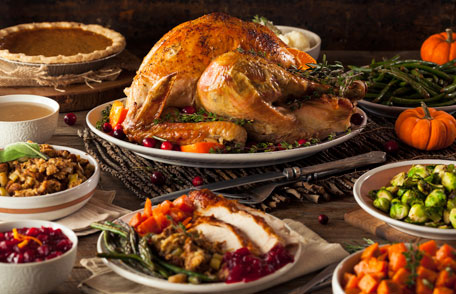
Why it's important
Turkey and its juice can be contaminated with germs that can make you and your family sick. Raw turkey can have Salmonella , Clostridium perfringens , Campylobacter , and other germs. Whether you're cooking a whole bird or a part of it, such as the breast, you should take special care to prevent food poisoning.
The bacteria Clostridium perfringens grows in cooked foods left at room temperature. It is the second most common bacterial cause of food poisoning. The major symptoms are vomiting and abdominal cramps within 6 to 24 hours after eating.
- Clostridium perfringens outbreaks occur most often in November and December.
- Many of these outbreaks have been linked to foods commonly served during the holidays, such as turkey and roast beef.
Safely store, thaw, handle, cook, and reheat your turkey
Store turkey properly.
Frozen raw turkey should be stored in the freezer until you are ready to thaw it. Make sure your freezer is at 0˚F or below. Don’t store a turkey in a place where you can’t closely monitor the temperature, such as in a car trunk, a basement, the back porch, or in snow.
Thaw turkey safely
Use one of these methods to thaw your turkey:
- Thaw your turkey in the refrigerator . Keep your turkey in its original wrapping and place it in a container before putting it in the refrigerator. The container will prevent the turkey juice from dripping on other food. Allow about 24 hours of thawing for each 4 to 5 pounds of turkey. A turkey thawed in the refrigerator can remain in the refrigerator once it's been thawed for 1 to 2 days before cooking.
- Thaw your turkey in cold water. Be sure your turkey is in a leakproof plastic bag before you place it in the sink. The bag will prevent the turkey juice from spreading in the kitchen. The bag also will prevent the turkey from absorbing water, which could make your cooked turkey runny. Make sure to completely cover your turkey with cold tap water. Change the water every 30 minutes. Allow about 30 minutes of thawing for each pound of turkey. A turkey thawed in cold water must be cooked immediately after thawing.
- Thaw your turkey in the microwave . Follow the microwave manufacturer’s instructions for thawing your turkey. A turkey thawed in the microwave must be cooked immediately after thawing.
Never thaw your turkey by leaving it out on the counter. A turkey must thaw at a safe temperature. When a turkey stays out at room temperature for more than 2 hours, its temperature becomes unsafe even if the center is still frozen. Germs can grow rapidly in the "danger zone" between 40°F and 140°F. Get more information about thawing turkeys from USDA.
Handle turkey correctly
Raw turkey and its juice can contaminate anything they touch. Be sure to handle your turkey correctly to prevent harmful germs from spreading to other food or your family and friends.
- Wash your hands with soap and water for at least 20 seconds before and after handling turkey.
- Use one cutting board for raw turkey and a separate cutting board for produce, bread, and other foods that won't be cooked.
- Never place cooked food or fresh produce on a plate, cutting board, or other surface that held raw turkey.
- Wash cutting boards, utensils, dishes, and countertops with hot soapy water after preparing raw turkey and before you prepare the next item.
Cook stuffing thoroughly
It's safest to cook stuffing in a casserole dish instead of inside your turkey. Cooking stuffing in a casserole dish makes it easier to know the stuffing is thoroughly cooked. If you do cook stuffing inside the turkey, put the stuffing in the turkey just before cooking.
With either cooking method, use a food thermometer to make sure the stuffing's center reaches 165°F. Germs can survive in stuffing that has not reached 165°F. If you cooked the stuffing in your turkey, wait 20 minutes after taking the bird out of the oven before removing the stuffing. This allows the stuffing to cook a little longer.
Cook turkey thoroughly
To roast a turkey in your oven, set the oven temperature to at least 325°F. Place the completely thawed turkey in a roasting pan that is 2 to 2-1/2 inches deep. Cooking times depend on the weight of the turkey and whether it is stuffed.
Use a food thermometer to make sure your turkey has reached a safe internal temperature of 165°F. Check by inserting a food thermometer into three places, avoiding bone: thickest part of the breast; where body and thigh join, aiming toward thigh; and where body and wing join, aiming toward wing. Even if your turkey has a pop-up timer, you should still use a food thermometer to check that it is safely cooked.
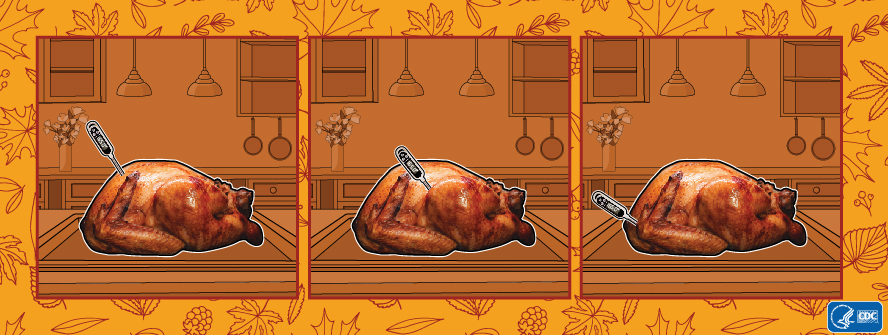
If you stuffed your turkey, insert a food thermometer into the center of the stuffing to ensure it reaches 165°F. Remember to let the turkey stand 20 minutes before removing all stuffing and carving the meat. This will let the stuffing cook a little longer and make the turkey easier to carve.
If you are cooking your turkey using another method, such as smoking or frying it, or if you are roasting a turkey that is not fully thawed, follow these guidelines from USDA for cooking your bird safely.
Learn more about safe internal temperatures for other foods and how to use a food thermometer .
Take care of leftovers
- Refrigerate leftovers at 40°F or colder within 2 hours of cooking to prevent food poisoning. Refrigerate leftovers that have been exposed to temperatures higher than 90°F, like in a hot car, within 1 hour.
- If you are refrigerating a big cut of meat, such as a turkey or roast, cut it into smaller pieces so they cool quickly. You do not need to wait until food is cool to store it in the refrigerator or freezer.
- Eat cooked turkey and dishes made with it, such as soup or a casserole, within 3 to 4 days. Freeze leftovers to store them for longer.
- Reheat all leftovers to at least 165°F before serving or eating.
Dangers of washing raw turkey
Washing raw turkey can spread germs to other food. Federal agencies have recommended not washing turkey or chicken since 2005. But a 2020 survey * found that 78% of participants reported washing or rinsing turkey before cooking. Old recipes and family cooking traditions may tell you to keep this practice going, but it can make you and your family sick. Poultry juice can spread in the kitchen and contaminate other foods, utensils, and countertops.
If you decide to wash raw turkey, immediately clean and thoroughly sanitize the sink and surrounding area. A USDA study found that 1 in 7 people who cleaned their sink after washing chicken still had germs in the sink.
*Source: 2020 Porter Novelli Consumer Styles survey of 3,625 adults in the United States
Prevent Food Poisoning
Higher Risk for Food Poisoning
Safer Food Choices
USDA Recommendations for Thawing Turkey
Food Safety
Get information from CDC on preventing food poisoning, food poisoning symptoms, foodborne disease outbreaks, and recalled food.
For Everyone
Health care providers.

COMMENTS
In Turkey, nowadays most families enjoy 3 meals a day. Weekday breakfasts are basic and quick but weekend breakfasts where the family comes together are large and consist of many different foods. Lunches in Turkey are usually made of seasonal dishes, soup, salad, etc. Dishes that require time and effort to prepare are not common at this meal.
24. Vegetable Dishes (Sebze Yemekleri) Turkish cuisine in a great variety of vegetable dishes is a kitchen with dolma and sarma, meat and vegetable dishes, fried vegetables and countless varieties of olive oil are available. 25. Stuffed Food (Dolma) Dolma has a special place in Turkish cuisine.
The batter is fried on both sides until golden brown. It's served with crusty bread, a leafy salad, or garlic-infused yogurt. Mücver can also be eaten as a cold snack and is a very filling and popular Turkish food. 2. Mercimek Corbasi (Lentil Soup) Koray Akar/Shutterstock.
The core of Turkey's culinary marvels consists of a wide variety of ingredients. Generally, Turkish cuisine consists of vegetables, legumes, meats, spices, grains, nuts, and oils. Nuts typically consist of chestnuts, almonds, walnuts, hazelnuts, and pistachios. Legumes include chickpeas, lentils, beans, and broad beans.
A typical breakfast in Turkey is rich and typically consists of cheese, butter, kaymak, tomatoes, eggs, olives, sucuk (Turkish sausage), pastirma, börek, and many other food items. Additionally, Menemen is also popular to eat for breakfast in Turkey. A big difference from a traditional breakfast in Europe is the fact that Turks typically drink ...
Turkish cuisine uses many vegetables, and some of the most used vegetables are zucchini, tomato, onion, eggplant, cauliflower, green beans, potatoes, spinach, chickpeas, garlic, and lentils. The most used meat in Turkey is lamb meat, followed by cattle and chicken meat. Fish is mostly consumed in coastal areas.
Dolma is a classic Turkish dish made from fresh veggies or dried eggplants, peppers, tomatoes, or zucchini. To whip up this tasty treat, fill these veggies with a mix of onions and rice before cooking them with butter. But here's the cool part - dolma isn't confined to Turkish restaurants. There are rumours that dolma originated in the ...
The Turkish art of cooking has a long and deep-rooted past and its cuisine varies across the country. The culinary culture of Istanbul, Bursa, Izmir region inherits many elements of vast Ottoman cuisine. The Marmara, Aegean and Mediterranean cuisines are rich in vegetables, fresh herbs and fish. Olive oil is most widely used.
Turkish cuisine, Turkey's national cuisine. Turkish cuisine is the heir to the Ottoman culture and cuisine influenced by Balkan and Middle Eastern cuisines have influenced both of these. In addition, the Turkish cuisine varies from region to region.
In Turkey, food is the ultimate source of uniting with and celebrating the company of others. A meal is more than a meal; it's a display of love. Needless to say, we fell in love with the cuisine of Turkey. The country is a culinary paradise. In fact, the food is so varied and tasty that it's recognized as one of the best cuisines in the world.
A Brief Guide to Turkish Regional Cuisine. Divided into seven regions, Turkey's regional cuisine is influenced by the geography, availability of water and its vicinity and the climate of the region. A variety of different ingredients are grown throughout the land. In turn, this ensures that regional food cultures develop and thrive to offer a ...
Boyoz - Another typical Izmir street food. Boyoz is a pastry with tahini and is very popular. Kumpir - These are baked potatoes with butter, cheese, and a variety of toppings. Balik-Ekmek - A typical street food from Istanbul. Balik-ekmek means fish and bread, and this is also what it is.
Ezogelin corba: An invigorating soup made of red lentils, tomato paste, grated fresh tomatoes and onions. Saksuka: A traditional Turkish side dish, saksuka consists of eggplant, zucchinis, garlic ...
Tarhana Soup (Tarhana Çorbası) It is a famous Turkish soup. You can have it at every meal, including breakfast. It is made of yoghurt, mint, flour, red pepper, green pepper, tomatoes. If you want, you can put onion on it. Yoghurt Soup (Yoğurt Çorbası) It is made of rice, yoghurt, chickpea, parsley, and mint.
Free Google Slides theme, PowerPoint template, and Canva presentation template. Yes, we all know Turkish delights, but what's really a delight is all the best recipes from the Turkish cuisine. Teach everyone how to prepare the best dishes from this transcontinental country! You'll love the typography used in this template, a hand-written one ...
Thanksgiving 101. Whether you're simply celebrating with your immediate family or welcoming the whole crew, craving traditional flavors or looking to try something new, cooking turkey for the first or 400th time, we've got you covered with Thanksgiving 101. The National Turkey Federation created Thanksgiving 101 to be a comprehensive guide ...
Turkey presentation. 1. Turkey. 2. LOCATION • Turkey is the only country in the world that is on two continents. Turkey is on both Asia and Europe. • Bordering the Black Sea, between Bulgaria and Georgia, and bordering the Aegean Sea and the Mediterranean Sea, between Greece and Syria. 3.
Instructions. Set oven to broil. Wash, peel and roughly chop vegetables. Place vegetables on a baking tray. Season with olive oil, salt and pepper. Set oven rack to the middle position. Broil vegetables until browned and cooked through, 15 - 20 minutes. Remove from oven and set aside to cool.
The turkey rub adds a hint of sweetness thanks to brown sugar and a touch of heat from the chili powder, cayenne, and paprika. Lastly, a mopping sauce—made from ketchup, sorghum, and apple cider vinegar—doubles as a barbecue sauce for serving. Get the Recipe. 20 of 22. Spatchcocked Smoked Turkey.
Turkey Presentation templates Turkey is a country with a rich culture and history! Istambul, one of its biggest cities is in two continents at the same time! The capital is Ankara, though. This country loves bread and tea and has over 30 ethnic languages. And let's not forget about their amazing landscapes full of cats!
Master the art of Thanksgiving presentation with these turkey carving tips.Subscribe http://foodtv.com/YouTubeGet the recipe Watch more from Food Network...
Cut a slit down the middle of the breastbone to carve the turkey breasts. Continue to cut down one side until you hit the ribs. Gently pull the breast meat away from the carcass as you cut parallel to the ribs until detached. Repeat with the other side. Slice the breast meat into thin slices, about ¼ to ½-inch thick.
Turkey: Officially known as the Republic of Turkey.It is located in the Middle East between Asia and Europe.Its capital is Ankara.Its population reached 74.7 million at the end of 2011.The vast majority of them are Muslims. Its area is 783 million square meters and its democratic parliamentary system , The language of which is the Turkish ...
To roast a turkey in your oven, set the oven temperature to at least 325°F. Place the completely thawed turkey in a roasting pan that is 2 to 2-1/2 inches deep. Cooking times depend on the weight of the turkey and whether it is stuffed. Use a food thermometer to make sure your turkey has reached a safe internal temperature of 165°F.
How to Get SUN Meals. SUN Meals are available to any child aged 18 and under, no application or other information needed! Find meals at schools, parks, and other locations in your community using the USDA Summer Meals for Kids Site Finder below.. As of May 17, 2024, the site finder has data for 23 states, and includes: AK, AR, CA, CO, FL, GA, IA, IL, IN, KS, KY, MN, MO, MS, NC, ND, NE, OR, PA ...